Travel Safe
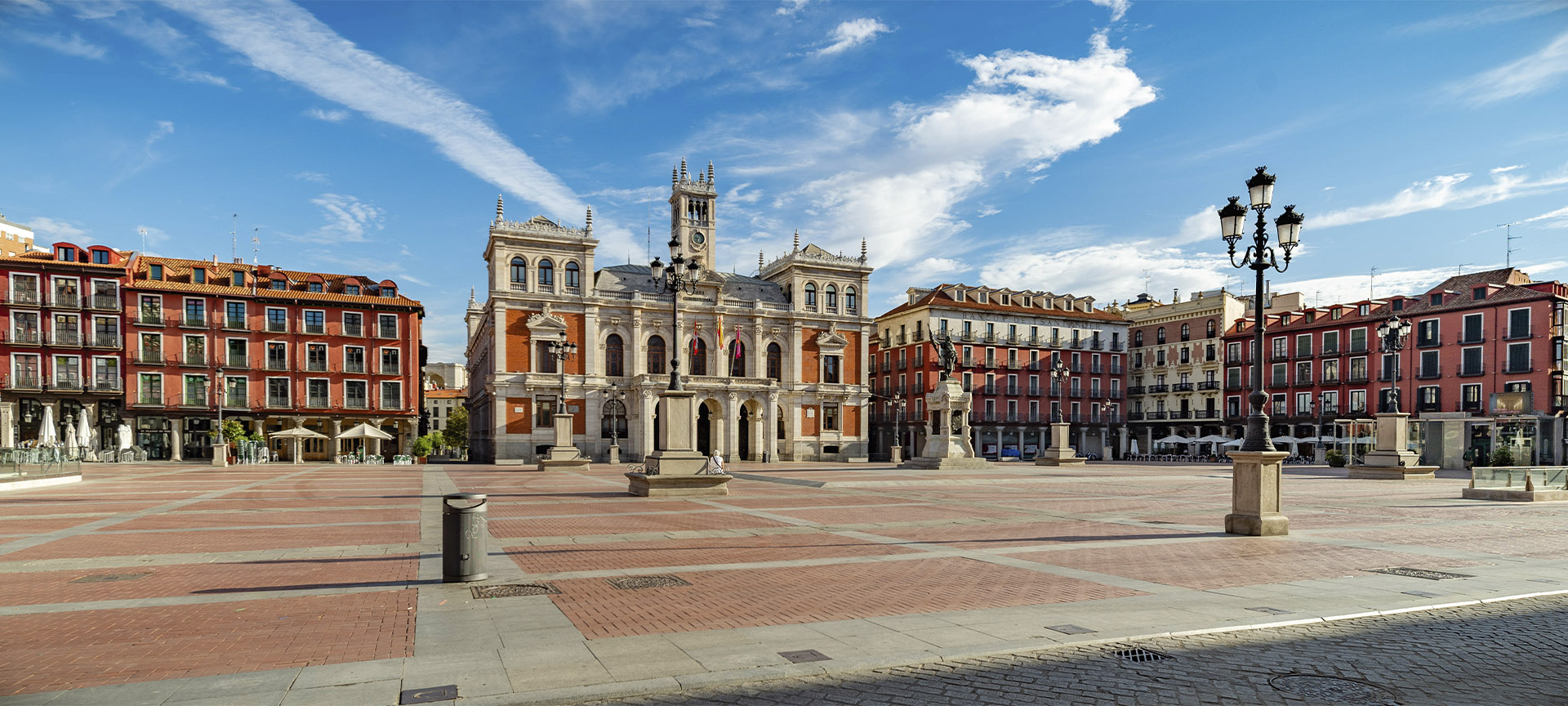
Castilla y Leon
The historic centre of Valladolid, the city on the Pisuerga River, is home to an interesting collection of Renaissance architecture comprising houses, palaces and emblematic buildings such as the Cathedral, the College of San Gregorio (today the site of the National Sculpture Museum) and the church of San Pablo.
The city has an intense cultural schedule thanks to its status as a university town, and hosts events such as the Seminci , the International Film Festival and one of the highlights of the Spanish film calendar, and the International Street Theatre and Arts Festival.
Another event that marks the life of Valladolid and arouses the fervour of its inhabitants is Easter Week. Declared a Festivity of International Tourist Interest its processions offer a genuine display of religious artworks passing before your eyes. Valladolid began to gain importance in the 11th century when Count Ansúrez became the governor of the town in the name of Alfonso VI. It reached its apotheosis during the reign of Ferdinand and Isabella (15th century), at a time when Valladolid University was one of the most important in the country. But in addition to playing a role in some of the key episodes in Spanish history, Valladolid has on two occasions been its capital; the first under Charles I (16th century) and subsequently when Philip III came to the throne in the 17th century. The historic centre of Valladolid conserves an important monumental and architectural heritage, particularly comprising noble houses and religious buildings. A highlight among these is the unfinished cathedral . The original design for the project was commissioned by King Philip II from the architect Juan de Herrera in the 16th century. The death of both men meant the cathedral remained unfinished, and its central section was not opened until 1668. Years later in 1730, the Master Churriguera completed the work on the main facade. Inside the cathedral, the main chapel houses a magnificent altarpiece produced by Juan de Juni in 1562. The space also includes the Diocesan Museum, containing a number of carved images attributed to Gregorio Fernández and to Juni himself, in addition to a silver monstrance by Juan de Arfe. Other religious buildings of interest are the Gothic church of Santiago , with an interesting altarpiece depicting the Adoration of the Magi made by Berruguete in 1537; and the church of Santa María la Antigua , with its unusual Romanesque tower crowned with a pyramid. Presided by a statue of Ansúrez, the 16th-century Plaza Mayor square is in the very heart of the city. On one of its sides stands the town hall, dating from the start of the century and crowned by the clock tower. The surrounding streets are home to a large number of stately houses and palaces. Pimentel Palace , today the site of the Regional Government, is one of the most important, as it was here on 21 May 1527 that King Philip II was born. Other highlights include the 16th-century palace of the Marquises of Valverde and the palace of the banker Fabio Nelli , a building in the classical style whose construction was begun in 1576. It is today home to the Valladolid Museum, which contains a display of furniture, sculpture, paintings and ceramics. Evidence of Valladolid's cultural importance can be seen in the University building –whose Baroque façade is decorated with various academic symbols–, and in Santa Cruz College –which in addition to containing a valuable library, is one of the earliest examples of the Spanish Renaissance. The homes of important historical figures can still be seen throughout the city, including the House of Cervantes , where the author of Don Quixote lived with his family between 1603 and 1606. Here's an interesting fact: it was in this house that the writer put the finishing touches to his great work. A visit to the house-museum is a chance to see items and furnishings from the period and recreate the way of life of noble family in the 17th century. Another recommended visit is to the Christopher Columbus House-Museum , built in the 1960s in a copy of the type of dwelling of his nephew, Diego Colón, in Puerto Rico. The current palace has an exhibition of various items and documents related to the discovery of America. Also worth visiting in 19th-century Valladolid is the building where one of its most illustrious figures was born, José Zorrilla . The house is open to the public, and contains several of the romantic writer's personal effects, furniture and documents. As the city has undergone significant urban growth in recent decades, Valladolid today offers a wide range of leisure and cultural options, with cinemas, theatres and museums, such as the National Sculpture Museum in the College of San Gregorio . This splendid building in the Flemish Gothic style, one of the most outstanding constructions in Valladolid, is notable for its exhibition of polychrome carved figures by artists like Alonso Berruguete and Gregorio Fernández. The Museum of Spanish Contemporary Art in the Patio Herreriano –one of the cloisters in the old Monastery of San Benito– contains over 800 20th-century paintings and sculptures. Easter week Easter Week –declared a Festival of Tourist Interest– is Valladolid's most important festival. This event is made particularly unique by its processions, which feature genuine works of art from Castilian imagery. Another landmark event is the Seminci , or International Film Week, one of the key dates on Spain's film calendar. The province of Valladolid can be seen by taking various itinerary such as the Red Wine Route, the Knight's Route, the route that leads to the "Soul of Castile" and to Tierra de Campos. The first of these takes you to the wine-producing country of Quintanilla de Onésimo, Vega Sicilia, Pesquera de Duero and Peñafiel. There you can visit its castle and the Wine Museum, in addition to a number of interesting wineries. The Knight's Route extends towards the south, and is an opportunity to discover the wine cellars of Boecillo, the Mudéjar architecture of Mojados and Olmedo, and the rich mediaeval heritage of Iscar and Portillo. Historic towns such as Simancas, the site of the General Archive of the Kingdom; Tordesillas, of such outstanding historical and artistic importance; and Medina del Campo, famous for its markets, fairs and its spa, are all to be found along the route known as the "Soul of Castile". The Tierra de Campos route leads you through mediaeval towns like Medina de Rioseco; to attractive examples of the popular architecture of Valladolid such as Villalón de los Campos; and to Castromonte, known for its medicinal waters. A good way to tour the whole area is to stay in the excellent facilities of the Parador hotel in Tordesillas. This is also convenient place for exploring the culinary attractions of the Valladolid region, famed for its roast lamb and suckling pig. Other typical dishes include "sopa castellana" (Castilian soup) (made with bread, garlic and cured ham), cod "al ajoarriero" and game dishes. To accompany your meal, why not try one of the province's wines with Designation of Origin? Ribera del Duero, Cigales, Rueda and Toro.
What to visit
Select from the list or hover over the map to find out about points of interest.
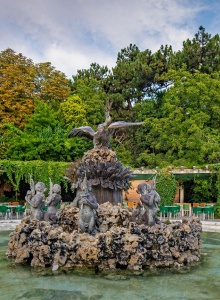
Campo Grande

Valladolid Cathedral
Santa Cruz College
Old Royal Palace of Valladolid
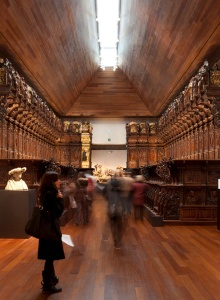
National Sculpture Museum
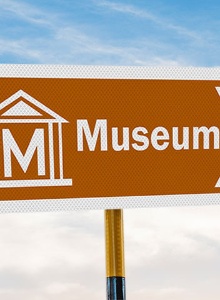
Oriental Museum
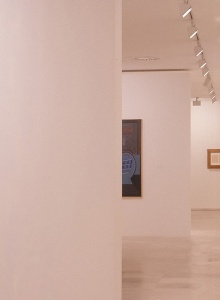
Museum of Contemporary Spanish Art. Patio Herreriano
Valladolid Museum
Travel plans for inspiring you
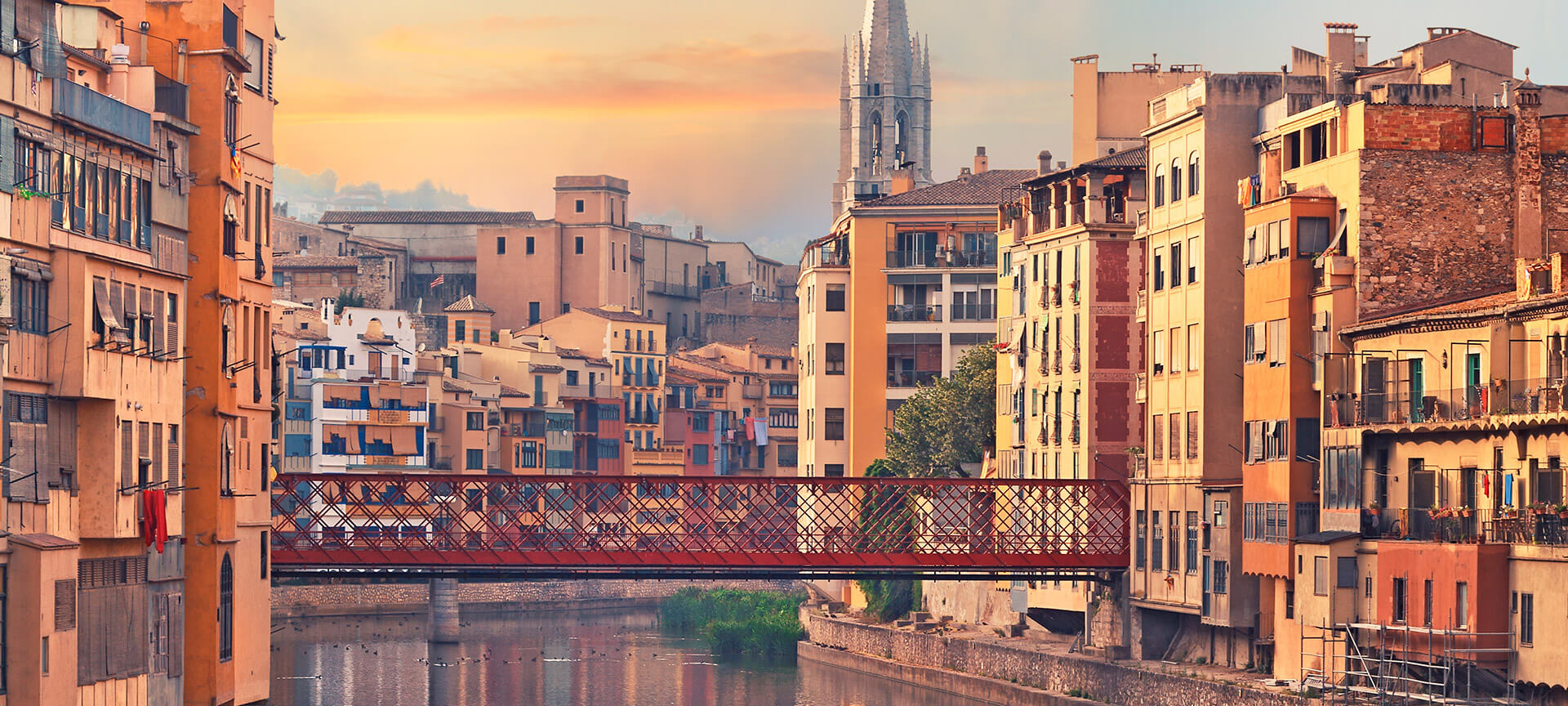
Cities in Spain for a weekend getaway
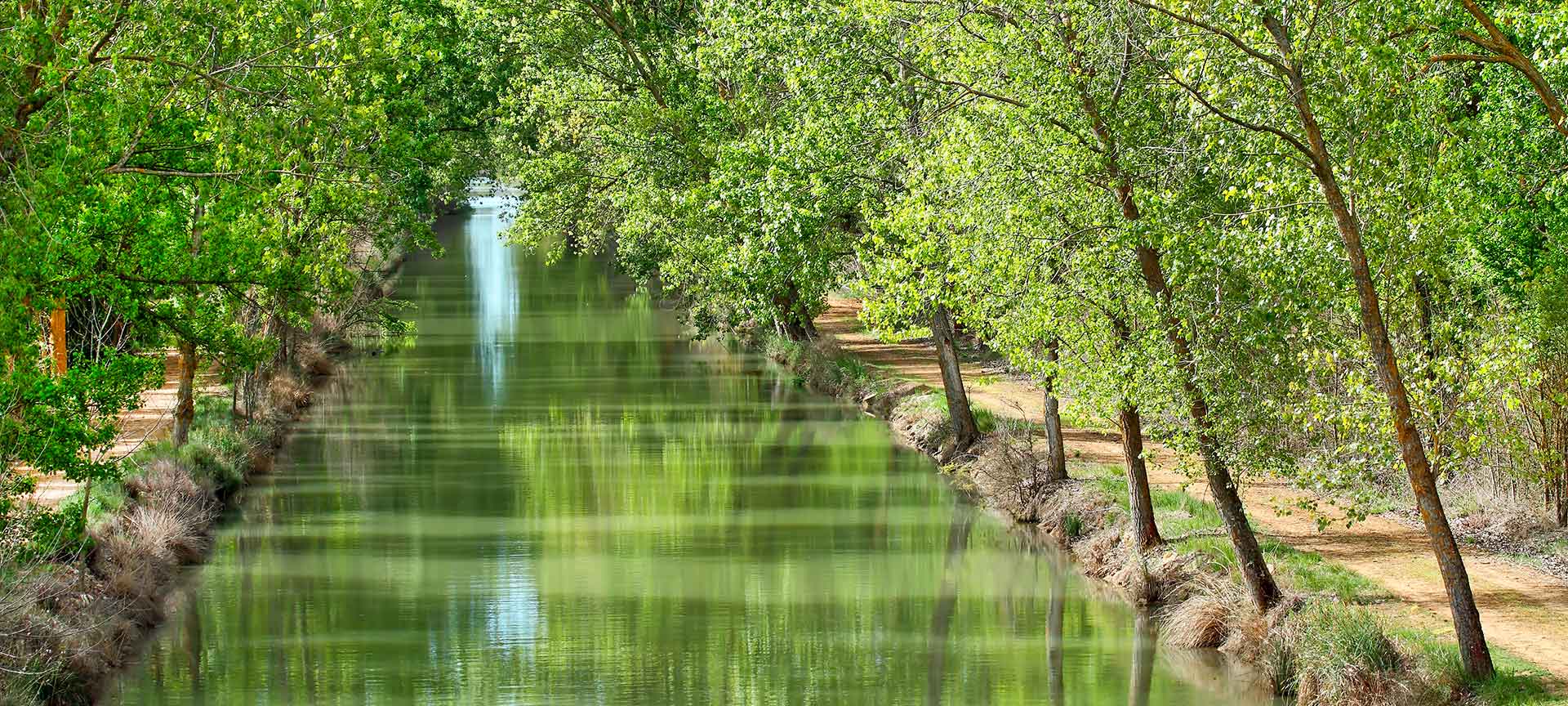
Canal of Castile Route: an 18th century river dream come true
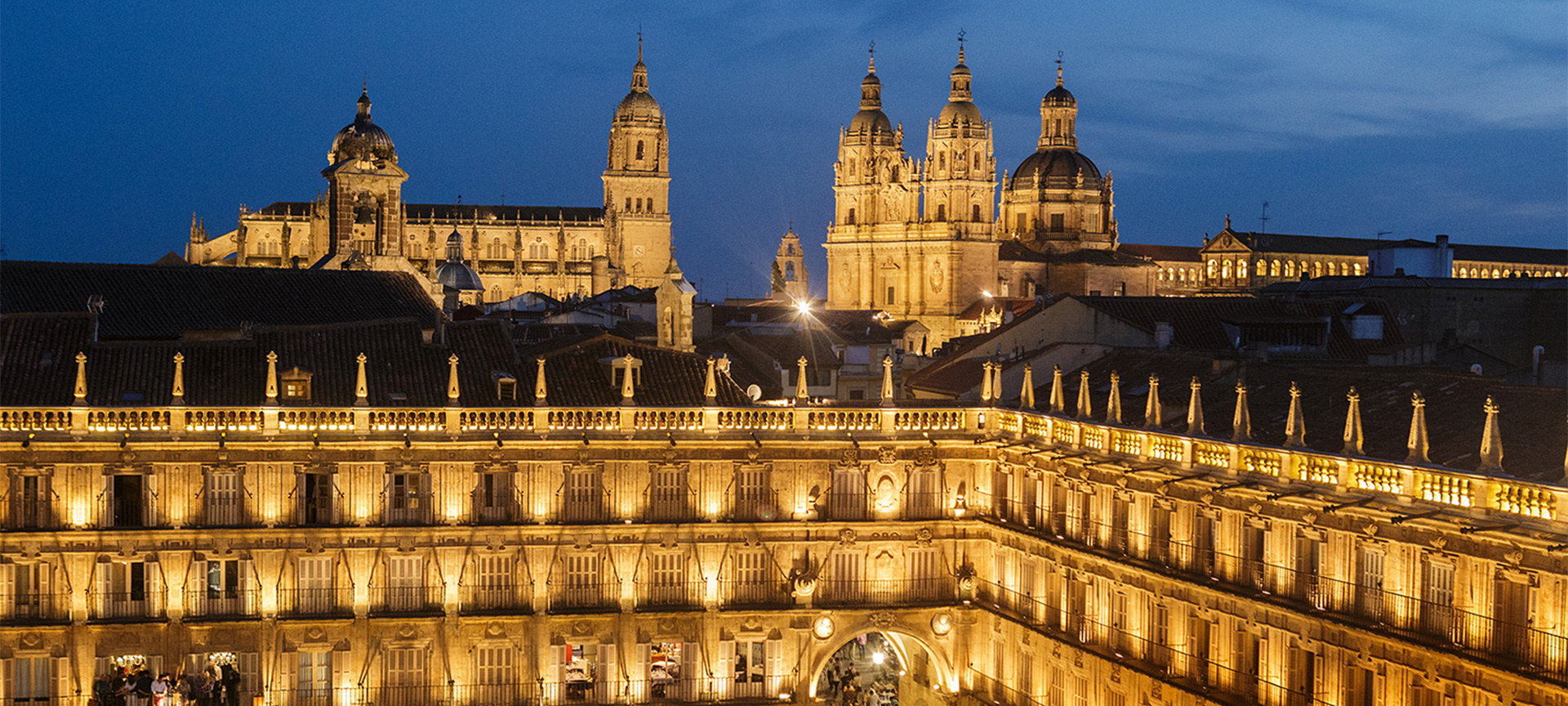
Route of the Spanish language
Shows, festivals, sports...
View some of the most relevant events you will be able to enjoy at the destination.

Valladolid International Film Week. SEMINCI
18 October 2024 - 26 October 2024

Valladolid Fair
30 August 2024 - 08 September 2024
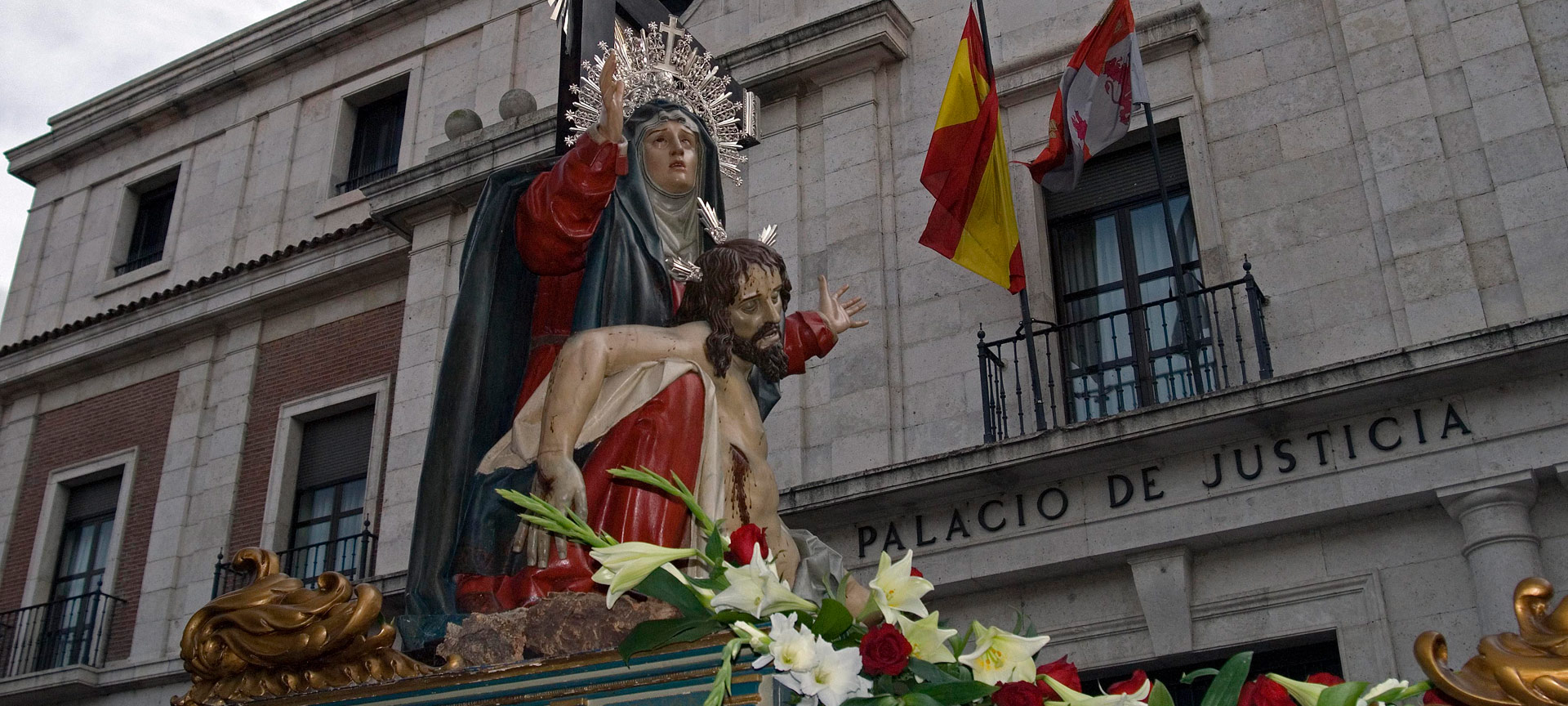
Easter Week in Valladolid

Choose between thousands of activities to live your best life on holiday.


Home » Travel Guides » Spain » 15 Best Things to Do in Valladolid (Spain)
15 Best Things to Do in Valladolid (Spain)
Valladolid is a university city in Castile and León in western Spain. It’s associated with the epoch-defining author José Zorrilla, who was born here in 1817 and has a large monument in his honour in front of Campo Grande, the city’s park.
Vallodolid was also home to the Castilian court in the early-17th century, and there’s an array of stunning palaces and churches from the middle ages to the 1700s that underline the city’s status as a centre for culture and politics.
In the 19th century Valladolid became a powerhouse of industry, which endowed it with some majestic “historicist” architecture and a regal shopping arcade for its wealthier citizens.
Let’s explore the best things to do in Valladolid :
1. National Sculpture Museum

This attraction has a fine collection of sculpture and art from the late-middle ages to the 1800s, but the museum building is itself a work of art too.
This is the Colegio de San Gregorio, a school for theology for Dominican monks that was built in the late-1500s.
Dwell a moment beneath the facade to see the unbelievable detail of the carved tympanum above the door.
Inside are gothic, renaissance and baroque sculptures and paintings that were mostly commissioned for altarpieces at convents that were shut down by decree in the 1800s.
Every Easter more than 100 of these works are lent to the city’s Catholic brotherhoods to be paraded as “pasos” or floats during Holy Week.
2. Palacio de Santa Cruz

Part of the university is this free attraction that is also loved as much for its beautiful architecture as for what you can see inside.
The 15th-century palace is the rectory of the University of Valladolid, and valuable because it was the first building in Spain to be designed in the renaissance style.
The best part has to be the interior courtyard, which is three-storeys high with exquisitely detailed traceries on the first-floor balustrade.
The building holds the Fundación Jiménez-Arellano Alonso, a museum devoted to African art.
If you see nothing else, take a few minutes to behold the two realistic 13th-century head sculptures from Ife, a civilisation based in what is now Nigeria.
3. Iglesia de San Pablo

This church’s carved facade stops most visitors in their tracks – it’s that beautiful.
It was completed in 1500 by Simón de Colonia, who was also the master builder of Burgos Cathedral.
The style of this extremely ornate stonework is Isabeline gothic, deriving from Queen Isabella I. Carved at the very top of the facade is the coat of arms that she shared with her fellow Catholic Monarch, Fernando II. Within you can see where the Spanish kings Felipe II and Felipe IV were baptized.
In the main chapel is also the tomb of Francisco Gómez de Sandoval, the most powerful man in the country during the 17th-century reign of King Felipe III.
4. Santa María la Antigua Church

The solemn romanesque bell tower of this 12th-century church is one of Valladolid’s most famous images, and is best admired from a bench on Portugalete Square.
It is the only part of the original design that is still standing, as the rest is from the 1300s and has gothic architecture.
You can tell that the tower is romanesque because of its square shape, pyramidal spire, unassuming decoration and the classic, long narrow arches of its windows.
On the north side there’s a handsome little arcaded gallery with fourteen arches in three sections, separated by Cistercian-style buttresses.
5. Academia de Caballería

On the northern limit of Valladlid’s main park, Campo Grande, is this stately building that is owned by the Spanish military.
The Academia de Caballería is actually from 1920, and if it looks older that’s because it has a historicist design, inspired by Castilian plateresque architecture from Spain’s Golden Age.
The building is still in use as the only functioning cavalry academy in Spain, turning out around 800 graduates a year as lieutenants and sergeants.
If you’re into military history you shouldn’t miss the museum, which has gathered medals, paintings, weapons, saddles and other memorabilia relating to Spain’s cavalry.
6. Plaza Mayor

Almost every Spanish city has a Plaza Mayor, but few will be as large or as old as Valladolid’s.
The square has been known as “Plaza Mayor” since the 1300s and the current design is from the 1500s following a city-wide fire.
Arcades were added to the buildings facing the square, a format that proved so popular it was copied by Salamanca and Madrid.
Now they’re an ingredient of every main plaza in the country.
The Town Hall is here, and originally Valladolid’s various trade guilds were on the square, but these have long been replaced by restaurants and tapas bars.
- 7. Casa de Cervantes

Miguel de Cervantes Saavedra is probably Spain’s most esteemed cultural figure, feted for writing Don Quijote, which is regarded as the world’s first modern novel.
At the turn of the 17th century Cervantes moved to Valladolid when the royal court of Felipe III relocated to this city.
Where he stayed during this time was a mystery until the 1860s when documents were discovered that showed exactly where he lived in 1605. The house is on Calle del Rastro, and though the exterior has changed the internal structure hasn’t been altered and is decorated with early-17th-century furnishings.
8. Campo Grande

The city’s largest urban park is a delight, with fountains, marble sculptures and an ornamental lake with swans.
On warmer days you can amble along Paseo Principe, a regal mall that is flanked by iron gas lights and covered by the dense foliage of some of the park’s 60 different tree species.
The ones in charge at the Campo Grande are the peacocks: These birds come and go as they please and you’ll spot them strolling along the paths and through the gardens, showing off their bright plumage.
There are also three aviaries at the park, with species like Japanese bantam roosters and pheasants.
9. Pasaje Gutiérrez

This kind of gallery was a response to the industrialisation of the city: As the streets became busier it made sense to build covered passages between buildings, creating sequestered and opulent places for the bourgeoisie and upper class to shop . Now Pasaje Gutiérrez is one of only three left in Spain and is a gorgeous monument to the Belle Époque . The gallery has two sections, which are joined by a small junction beneath a stunning metal and glass dome.
At the centre of this junction is an elegant statue of Mercury, cast in Haute-Marne, France in the mid-1800s.
10. Teatro Calderón de la Barca

The neoclassical Calderón Theatre opened its doors in 1864 and is still one of the largest theatres in Spain.
It was named after Pedro Calderón de la Barca, the 17th-century author and playwright, one of the most prominent cultural figures at a time when the Spanish Empire was at its peak.
The interior is very palatial, designed by the 19th-century Italian architect Augusto Ferri, who was responsible for bringing Spain’s theatres in line with the best standards of central Europe.
With opera, plays, musicals and dance performances, check the programme when you visit Valladolid to see if there’s something that tickles your fancy.
11. Calle de la Platería

Another project that was part of the rebuild following Valladolid’s fire in the mid-16th century was this broad street that runs north to south.
At the time it was a revolutionary piece of urban planning that was reproduced at Spanish colonies across the globe.
Now it’s completely pedestrianised and is a very refined place to come for a cup of coffee or a shopping trip.
As you walk north you’ll have a great view of the Church of Santa Vera Cruz.
You can pop inside to see an amazing ensemble of 16th and 17th-century sculptures, while the reliquary has what is claimed to be a piece of wood from the cross used to crucify Jesus.
12. Museo Oriental

On the south side of Campo Grande is the Convento de los Agustinos Filipinos, a delightful 18th-century seminary established to train priests going on missions to the Philippines.
This link with the Far East is maintained in the building’s basement, which has one of the finest collections of Asian art in Spain.
These items were mostly collected in China and the Philippines by the priests during their missions in the 19th-century, and the oldest pieces are almost 2,000 years old.
The Chinese section has paintings, porcelain , bronzes and coins, while the Filipino section is more ethnological in its scope, with tribal sculptures and primitive weapons.
13. Puente Colgante

You might be scratching your head when you visit this industrial-era monument.
That’s because it’s name means “Suspension Bridge”, but when you see it you’ll realise that it’s nothing of the sort.
In truth only the abutments were ever built and the project was abandoned in 1854, while the rest of the bridge is a wrought iron bowstring structure that was opened in 1865. When it was completed it was only Valladolid’s second crossing on the Pisuerga River, and was one of Spain’s first industrial-age iron constructions.
14. Castle of La Mota

This marvellous castle just south of Vallodolid is considered one of Spain’s most beautiful.
What helps is that it’s in such a good state today, and when you get up close you’ll see that the building isn’t made of stone, but thousands of red bricks that were produced locally.
The castle is from the 1400s and the most distinctive part is the main “Torre del Homenaje”, which is five floors high, with turrets on the corners.
The wall of this tower is still pocked with scars left by artillery hundreds of years ago.
When the use of gunpowder was perfected in this period the outer walls were still difficult to damage because they were relatively low, and protected by the deep moat that encompasses the entire fortress.
15. Valladolid Wine

Within the Valladolid Province are an amazing five Designation of Origin wine regions: Rueda, Cigales, Toro, Tierra de León and finally, Ribera del Duero, which is the most famous of all.
Each region has devised its wine route with all sorts of viticultural experiences on offer; of course, there are a catalogue of wineries for tours and tastings, but also wine-oriented spas, and even cooperages, where you can observe the craft of barrel-making.
The near-mythic Vega Sicilia vineyard is 25 kilometres from Valladolid, with reds made from the tempranillo grape, which is loved for how well it matures in oak.
These are some of the world’s best and most expensive wines.
15 Best Things to Do in Valladolid (Spain):
- National Sculpture Museum
- Palacio de Santa Cruz
- Iglesia de San Pablo
- Santa María la Antigua Church
- Academia de Caballería
- Plaza Mayor
- Campo Grande
- Pasaje Gutiérrez
- Teatro Calderón de la Barca
- Calle de la Platería
- Museo Oriental
- Puente Colgante
- Castle of La Mota
- Valladolid Wine
Visit Valladolid, Spain; a travel guide to the vibrant city of Valladolid

Visit Valladolid
Valladolid is the capital of the province of Valladolid and the capital of the Castile and Leon region of Spain. Valladolid is a beautiful, colourful and vibrant town well worth a visit.
Explore Valladolid
Valladolid has been home to many Spanish notables, once vied with Madrid as capital of Spain and has seen some of Spain's greatest art and architecture. It's Plaza Mayor is superb. It is a large square surrounded by arcaded buildings and was the first plaza of its kind to be built in Spain. It is now replicated throughout Spain and South America.
The Plaza Mayor will be at the centre of your visit to Valladolid. With its arcaded buildings mostly painted a deep red and the imposing town hall it is simply beautiful. It is packed with bars and restaurants and it is a great spot to stop for refreshments.

Radiating out from the Plaza Mayor are many more streets and squares all painted in the vibrant colours particular to Vallodalid.
Many of the buildings have the glassed in balconies which are common throughout Spain and some are covered in tiles in a way that reminds us of Portugal where this is common practice.
There are quite a number of palaces to be discovered as you walk the streets and these include Pimentel Palace where King Philip II was born and the 16th century Palace of the Marquises of Valverde.
Close to the Plaza Mayor is Valladolid's cathedral commissioned by Philip II but which remains unfinished. Inside is a reredos (the decorated screen behind the alter) by Juan de Juni and in its museum are carvings by Gregorio Fernandez.

Valladolid's 15th century university is another notable building in Valladolid. It has a Baroque facade by Narisco Tomé who later did the Transparente in Toledo Cathedral. One of the university buildings - the Colegio de Santa Cruz has a lovely three storey patio. It is open during working hours.
Valladolid's university was once one of the most important in Spain. It is still a thriving university town and the presence of the students means the town has a great ambience on an evening too.
Valladolid was home to Cervantes between 1603 and 1606 and it is here that he completed his famous novel - Don Quixote. The House of Cervantes is open for visits and inside contains furnishings typical of the period for a noble family.
Museums in Valladolid
Near to Valladolid's Plaza Mayor is the Museo de San Joaquin and Sant Ana which houses 3 Goya paintings.
The Monastery of San Benito houses the Museo Patio Herreraino which is a Contemporary Art Museum containing works by Joan Miro, Antoni Tapies and many more. It is also a chance to have a closer look at the monastery itself which has a lovely Renaissance courtyard.
The Museo de Valladolid is an archeology and art museum housed in a Renaissance mansion.
The Museo Nacional de Escultura (National Sculpture Museum) housed in the lovely Colegio de San Gregorio houses many religious sculptures by the best artists of the Spanish Renaissance. Works include some by Deigo de Siloé, Juan de Juni and Gregorio Fernandez. The building has a superb Isabelline (late Gothic) facade and a Plateresque staircase and a beautiful patio with twisted columns. This collection is Spain's best collection of multi-coloured wooden religious sculpture.
The Museo Oriental has some excellent pieces of Chinese art and Philippine art. These were collected by Spanish missionaries sent out by the Colegio de Agustinos (where the museum is housed) who went to China and the Philippines in the 16-19 centuries.
Cultural Events in Valladolid
One of the major events in Valladolid's calender is the Easter week celebrations. These have been declared a "Festival of Tourist interest" and include religious parades dressed in the hooded robes worn in Spain for these events and the processions of various religious works of art.
Seminci is the International Film Festival of Valladolid and takes place in October each year.
Places to see near Valladolid
Simancas to the southwest of Valladolid is home to a large castle - now home to Spain's national archive.
Another castle can be seen at Penafiel to the east of Valladolid. It has a long narrow shape often compared to a battleship.
Medina del Campo is not far away and is home to a huge Moorish castle - the Castillo La Mota.
You can find more local travel ideas in the Valladolid guide , and the Castile and Leon guide .
See also Find Valladolid hotels
Photos of Valladolid
Click any picture to start the gallery

Map of Valladolid and places to visit
Valladolid places to visit.

Medina del Campo
Medina del Campo is home to a huge Gothic-Mudejar style castle the Castillo de la Mota.
Select your language
Spain This Way - copyright 2009 - 2024
- privacy policy
- 1 Understand
- 2.1 By plane
- 2.2 By train
- 3 Get around
- 7.1 Regional specialties
- 7.3 Mid-range
- 7.4 Splurge

Valladolid is the capital of the province of the same name, and is part of the region of Castile and Leon . Valladolid is a reasonably large industrial city to the northwest of Madrid. It is one of the major regional centre in Castile-Leon. The city has an older core with some interesting buildings. However it has focused more on industry than tourism. Valladolid is home to just under 300,000 people (2018).
Valladolid is in the centre of Spain's central plateau and hydrographically is in the Duero Basin. The average elevation 698 m. Its coordinates are 41° 38'N 4° 43' W.
Valladolid's climate is continental, dry, and characterised by high temperatures in summer and cold in winter. Rainfall is distributed fairly irregularly throughout the year.

- Ryanair offers direct flights to Valladolid from London Stansted , Milan Bergamo, and Brussels Charleroi.
- Air France offers direct flights to Valladolid from Paris .
- Iberia offers direct flights to Valladolid from Barcelona and Malaga .
There's a daily bus shuttle to the city at 05:15, 16:15, and 19:20. Timetable changes at weekends and holidays (bus info: ☏ +34 983230033 ).
The most common way to reach Valladolid by train is from Madrid (check the Spanish rail company, Renfe ). €11-30. There is a high speed Spanish train AVE that connect Madrid and Valladolid (200 km) in less than an hour. Purchasing the ticket by Internet in advance (at least 15 days) the price is €12 (Jan 2008). There are train connections to other places.
- Alsa provides a regular bus line from Madrid. Fares are similar to rail (€11-20).
Distances to Valladolid: Madrid 190 km, Burgos 125 km, Leon 140 km, Salamanca 115 km.

Valladolid has a good bus service, but you can easily get around the city centre on foot.

- 41.657209 -4.723476 2 Museo Nacional de Escultura ( National Sculpture Museum ), Cadenas de San Gregorio, 2 , ☏ +34 983 254 083 , fax : +34 983 259 300 . Tu-Sa, 10:00-14:00 & 16:00-19:30; Su & holidays, 10:00-14:00 . The best cultural thing that Valladolid has is the Polychrome Wood Museum. Some of the sculptures are used during the Easter holidays when Valladolid becomes a famous city because of its religious traditions. General admission, €3; reduced admission, €1.50; free admission on Sa, 16:00-19:30 & Su, 10:00-14:00 .
- One of the oldest and most interesting areas is the area beside San Martin Church. Really old, all the streets surrounding the area have a special charm.
- Catedral and Iglesia de la Antigua . Not far away (3 minutes walking) from San Pablo you can find the Antigua church, representing the Romanesque style in Valladolid. In front of it, there is the cathedral, which is unfinished because the architect Juan de Herrera was called to build the Escorial. You can see one of the main towers missing.
- School of Law and University Square . One of the essential stops is the old university, which is still in use. It is very close to the cathedral, and the façade is breathtaking! The entrance is protected by a group of columns on top of which rest several lions.
- San Benito ( take the street on the right side of the Town Hall in the main square ). A huge, Gothic church is found. On the side of San Benito there is the monastery, where concerts and open-air cinemas are organised during the summer. Nearby you can find some remains of the city walls and the market hall, which has an attractive design in iron.
- Campo Grande Park ( between the railway station and the centre ). Very attractive and worth a wander through. The park alongside the river is less impressive and not really recommended.
- Museo Patio Herreriano .
- [formerly dead link] International Tapas Competition . In November, the most important tapas event worldwide. During one week over 40 tapas bars of the city offer tapas to the public.
- Football: Real Valladolid were promoted in 2024 and now play soccer in La Liga, the top tier. Their home ground Estadio José Zorrilla (capacity 27,800) is 2 km west of city centre.
You can buy sweets typical of the city or the province, such as Mantecados de Portillo . You can buy, of course, the best wine of Spain, because in Valladolid there are some of the most famous wines in the world, like the Vega Sicilia . But you also have a lot of delightful wines at all prices.
In the city centre, you can find many restaurants. Castilla y Leon is known for suckling pig and suckling lamb. In Valladolid, the suckling lamb is more famous, and there are restaurants where you go exclusively to eat lamb and the waiters ask you just for the drinks. You can also find good places to eat suckling pig.
Valladolid has a tapas culture, but you have to pay for tapas everywhere in Valladolid. There are many cities in Spain where the tapas are for free with your drink. There is a tapas competition between Valladolid bars that is held once a year. It is so successful that the council created a national competition in 2005. If you want to visit Valladolid for a weekend it is worth checking when the tapas competition will be held.
You get another good chance at the beginning of September when the festival takes place. All the pubs put bars in the street, and next to the stadium you can find marquees from different Spanish areas where you can taste all the typical and famous Spanish dishes.
You find good tapas bars in the old part of the city centre, but one favourite is in Calle Correos, behind the council building. This pub won the tapas competition one year.
Regional specialties
- Asado de lechazo
- Pan lechuguino
- Mantecados de Portillo
- Queso de Villalón
- Alimentos de la caza
- Rosquillas de sartén típicas de rocío
- 41.650513 -4.729693 1 Parrilla de San Lorenzo , Calle Pedro Niño, 1 ( in the basement of the cloistered convent of San Joaquín y Santa Ana ), ☏ +34 983 335 088 . Lunch, 13:00-15:00; dinner, 20:30-22:00 . 16th century decor. Specialty is lechazo asado en horno de leña, roast lamb.
- The Castilla y Leon region is famous for its wines. There are three different wine areas in Valladolid: Ribera del Duero, Cigales, and Rueda.
- Ribera del Duero is one of the best wine areas in Spain. Vega Sicila vineyard, in Valbuena de Duero (25 km from Valladolid), can be considered one of the best wines in the world and is one of the most expensive wines available. The wines produced are mainly red, of the Tempranillo type.
- Cigales and Rueda, thought less famous than Ribera del Duero wines, are also good wine regions. Cigales has especially remarkable pink wines and Rueda has good white wines.
- 41.609385 -4.79807 1 Hotel AC Santa Ana , Camino de la Flecha s/n ( Outside centre ), ☏ +34 983409920 , fax : +34 983409921 . Luxury hotel.
- 41.649686 -4.726828 2 Hotel Amadeus , Montero Calvo, 16-18 ( City centre ), ☏ +34 983219444 .
- 41.646273 -4.726161 3 Hotel Felipe IV , Gamazo 16 , ☏ +34 983307000 . 127 rooms, bar, restaurant, gym, free Wi-Fi.
- 41.675128 -4.718087 4 Hotel Ibis , Avenida del Euro 7 , ☏ +34 983362111 .
- 41.64137 -4.737261 5 Hotel Juan de Austria , Paseo de Zorrilla 108 ( City centre, near El Corte Inglés ), ☏ +34 983457475 .
- 41.644787 -4.727133 6 Hotel Lasa , Acera de Recoletos, 21 ( City centre, opposite iconic Parque El Campo Grande ), ☏ +34 983390255 , fax : +34 983302561 , [email protected] . Historic 19th-century building transformed into a small hotel. Privately managed.
- 41.64949 -4.727405 7 Hotel Mozart , Menendez Pelayo, 7 ( Town centre ), ☏ +34 983297777 .
- Kris Parque , Calle Joaquín García Morato 17 .
- 41.657275 -4.741181 8 NH Balago , Calle Las Mieses, 28 ( near fairgrounds, 5 min from the Plaza Mayor, and the museums of contemporary art, sculpture, and the football stadium ), ☏ +34 983363880 . content
- 41.656736 -4.737231 9 NH Ciudad de Valladolid , Avenida Ramón Pradera, 10-12 ( Town centre ), ☏ +34 983351111 . Close to shopping.
As of June 2022, Valladolid has 4G from MasMovil/Yoigo, and 5G from Movistar, Orange and Vodafone.
Around Valladolid are many tourist attractions which have been declared World Heritage Sites by UNESCO:
- Burgos (122 km)
- Cuéllar (54 km Splendid monument, one of the main centres of Moorish art. Noted for its ramparts, its castle, and the typically medieval urban cityscape.
- León (134 km)
- Madrid (193 km)
- Medina de Rioseco (40 km) Well-preserved medieval city. Churches, museums, good food.
- Olmedo (30 km) Miniature castles
- Palencia (47 km)
- Peñafiel (60 km) Wine museum and castle
- Segovia (111 km)
- Has custom banner
- Has mapframe
- Has map markers
- Airport listing
- See listing with no coordinates
- Do listing with no coordinates
- Articles with formerly dead external links
- Articles with dead external links
- Sleep listing with no coordinates
- Has Geo parameter
- Usable cities
- Usable articles
- City articles
- Castile and Leon
- All destination articles
- Pages with maps
Navigation menu
Valladolid, Spain
The perfect 2 days itinerary.
Valladolid, located in the heart of Spain's Castilla y León region, is a charming city known for its rich history, stunning architecture, and vibrant cultural scene. The city is home to a number of beautiful churches, palaces, and plazas, as well as several excellent museums. Valladolid is also renowned for its wine, with several world-class wineries located in the surrounding region.
What to do in Valladolid?
This 2 days itinerary is the perfect guide to the best things to see in Valladolid. It includes day-by-day activities, travel tips, and the top places to visit.
Day 1: Discovering Valladolid's Rich History
Start your day with a visit to the Cathedral of Valladolid , a stunning example of Herrerian style architecture. From there, head to the nearby Church of San Pablo , known for its beautiful façade.
Visit the National Sculpture Museum , home to an impressive collection of Spanish sculptures. Afterward, take a stroll through Campo Grande , a beautiful city park known for its peacocks and romantic walkways.
Enjoy a traditional Spanish meal at one of the city's many excellent restaurants. Try local specialties like lechazo (roast lamb) and suckling pig.
Day 2: Exploring Valladolid's Wine Country
Take a day trip to the Ribera del Duero wine region, located just outside of Valladolid. Visit one of the many wineries in the area, such as Bodegas Protos or Bodegas Arzuaga Navarro , for a wine tasting and vineyard tour.
Continue your wine tour with a visit to another winery, such as Bodegas Emilio Moro . Enjoy a leisurely lunch at the winery's restaurant, where you can pair your meal with their excellent wines.
Return to Valladolid and enjoy a relaxing evening in the city. Consider visiting a local tapas bar for a light dinner and a glass of local wine.
Was this helpful?

Renaissance architecture, sacred statues, and plenty of vino: how to spend a weekend in Valladolid, Spain
Home » Destinations » Europe » Spain » Renaissance architecture, sacred statues, and plenty of vino: how to spend a weekend in Valladolid, Spain
This website uses affiliate links which may earn a commission at no additional cost to you. As an Amazon Associate I earn from qualifying purchases.
Updated: 20th November 2022
IN PARTNERSHIP WITH #SPAINBYTRAIN
Whizzing through arid fields appearing like a golden mirage on the horizon, a weekend in Valladolid, Spain, was awaiting. Just a short one-hour journey from Madrid – courtesy of the country’s high-speed rail network – somehow, this storied spot had slipped my radar on previous trips.
While I’d spent time in some other cities in Castilla y León (Spain’s largest autonomous community), such as Salamanca and Segovia, this architectural feast of sacred statues and grandiose renaissance architecture was new to me, and a weekend in Valladolid seemed the perfect amount of time to get a taster.
As it turns out, tasting is very much a part of life here, especially regarding vino . With five Designation of Origin (DOP) appellations – and twenty grape varieties – within Valladolid province, it’s a wine aficionado’s paradise. While the vines might be aged, the city’s energy remains relatively youthful, thanks to the large student population of one of Spain’s oldest universities.
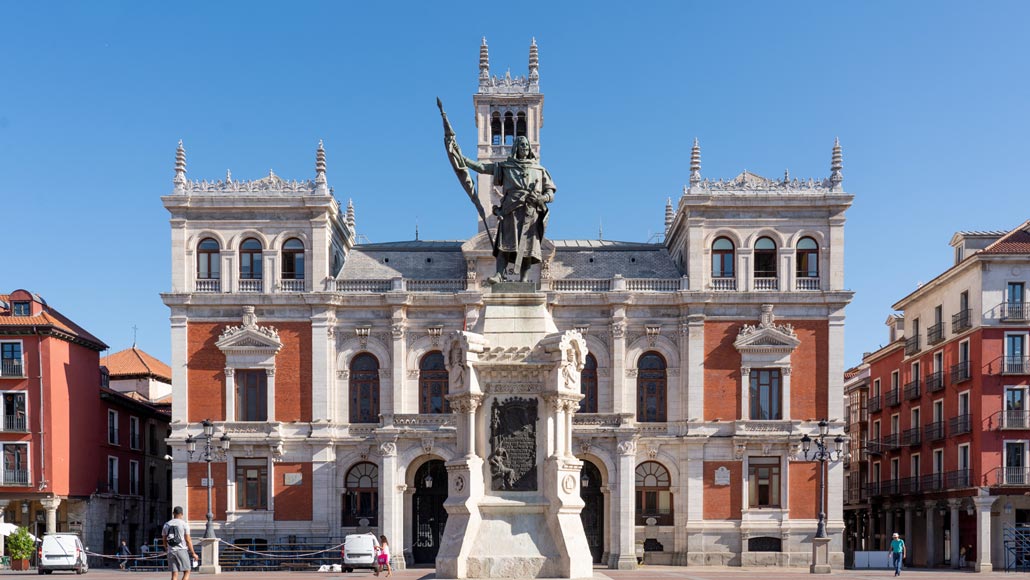
Born from a 10th-century village, Valladolid’s importance started to really grow in the 15th century. Plenty of money followed, leading to the countless Renaissance-period buildings gracing the city. For a brief moment, between 1601-1606, it even became the de facto capital of Spain .
While the city might be most famed for its religious and sacred art or the vines on its peripherals, there’s plenty more to enjoy over a weekend visit to Valladolid, Spain. My suggestions below are based on a Friday arrival and Sunday departure and should work with the varied opening hours. Still, it’s always best to check closing times (and remember Spain’s afternoon siestas) in advance.
Day one: arriving in Valladolid, Spain
If you’re arriving in Valladolid on a Friday afternoon, take a brief orientation walk, admire some of the city’s wealth of architecture, and dive straight into trendy dining and wine pairing.
Arrival: stroll through Campo Grande and by Academia de Caballería
From the train station, the shaded Campo Grande park provides a nice arrival stroll to the historic centre. Passing peacocks roaming free and pretty fountains, you’ll exit the parking with a view of the imposing Academia de Caballería, the cavalry academy.
Late afternoon: visit Palacio de Santa Cruz
Open until 9 pm on Friday evenings; the 15th-century Palacio de Santa Cruz provides a little pre-dinner culture.
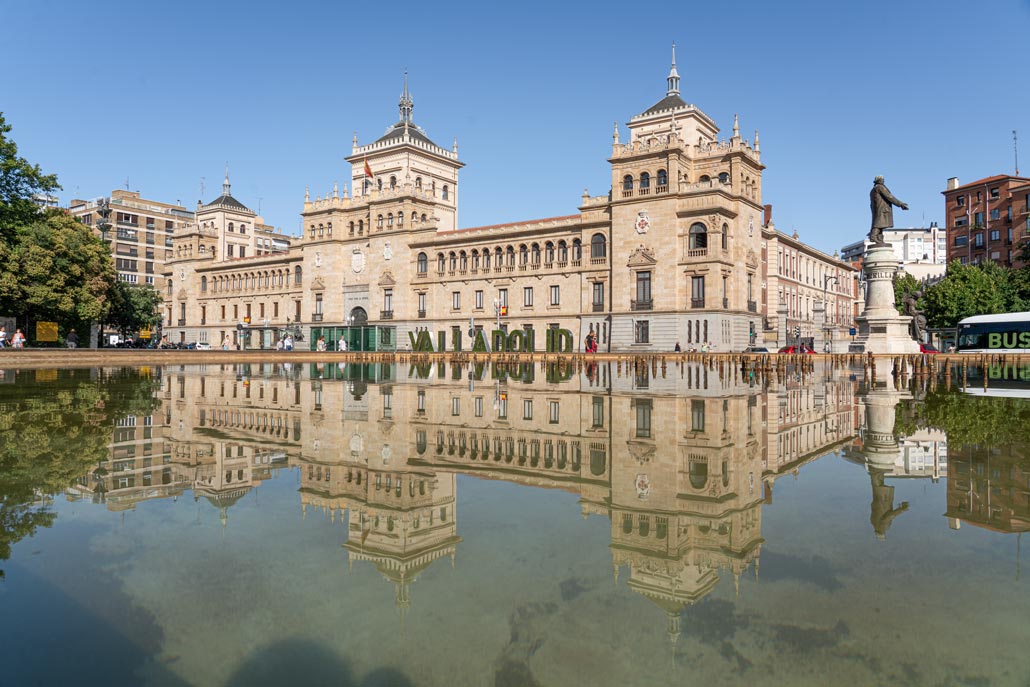
Established as a college, the building still retains its historical roots, as, alongside new governmental offices, it remains a student residence with a breathtaking library (requiring a pre-booking to visit).
The courtyard of the Palacio is particularly impressive, with Renaissance-style pillars and neoclassical windows. The building also houses the Museum of African Art (open until 7:30 pm), housing an extraordinary collection requiring at least an hour to appreciate fully.
Pre-dinner drinks and tapas: Calle Cascajares
Valladolid is very proud of its tapas (small snacks served with drinks) culture – even playing host to the World Tapas Championship – so, settle in for a pre-dinner drink at one of the lively bars and taverns along Calle Cascajares and dive in.
Leading its way to the cathedral’s facade, this spot has a handful of terraces perfect for a warm-evening pre-dinner drink, and with Vermouth making a big comeback in Valladolid, a fortified wine-based cocktail is the perfect pairing to your tapa .
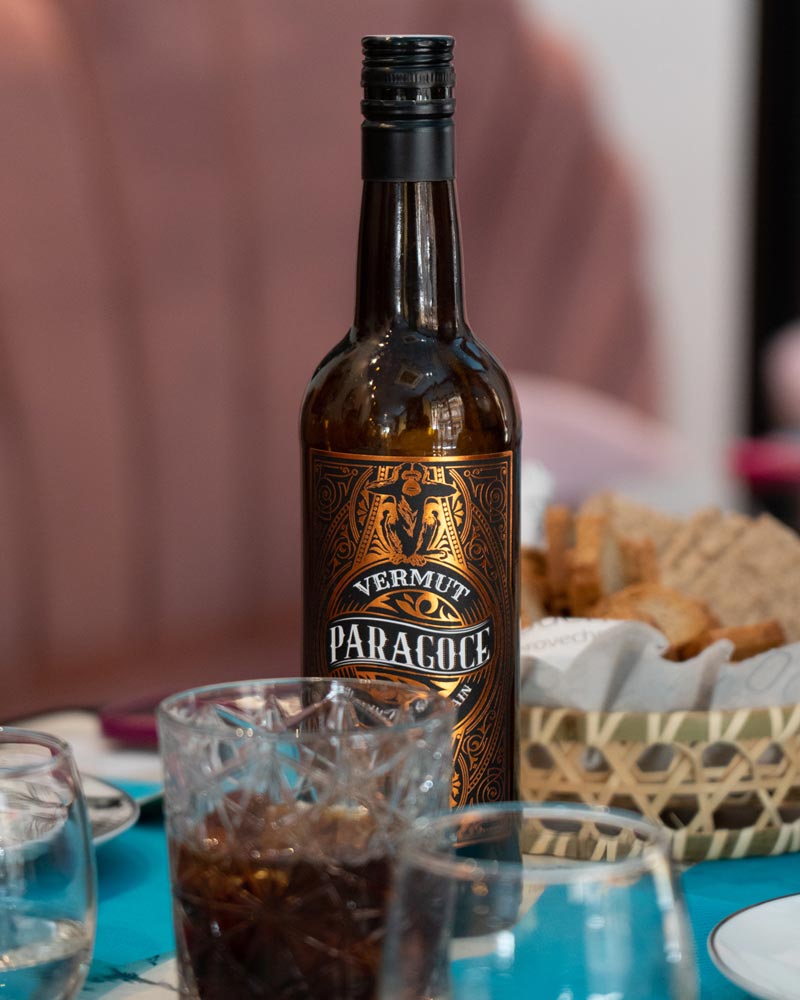
Dinner: Melêl
Just around the corner, Melêl restaurant hides its trendy interior behind the tables of the terraces. Inside, around a large, communal dining table, flanked by video screens projecting the staff eating and drinking so that you are all ‘part of the experience’, you’ll find the magic.
If you opt for the wine-pairing menu, you’ll enjoy a serenade for your palate. Innovative dishes with modern presentations are matched with quality wines from the region and beyond, and the atmosphere is fun with sharing the space with fellow diners. This was my favourite spot I ate in the city, and reservations are highly recommended.
Drinks: Bizarro Bar Independiente
On the same streets as Melêl, a handful of late-night bars will be closing their terraces post-dinner, with the party continuing inside.
Bizarro Bar Independiente, a welcoming-to-all space, is a good starting point for a post-dinner drink, with plenty more late-night options in this student-heavy city should you want to keep the party going.
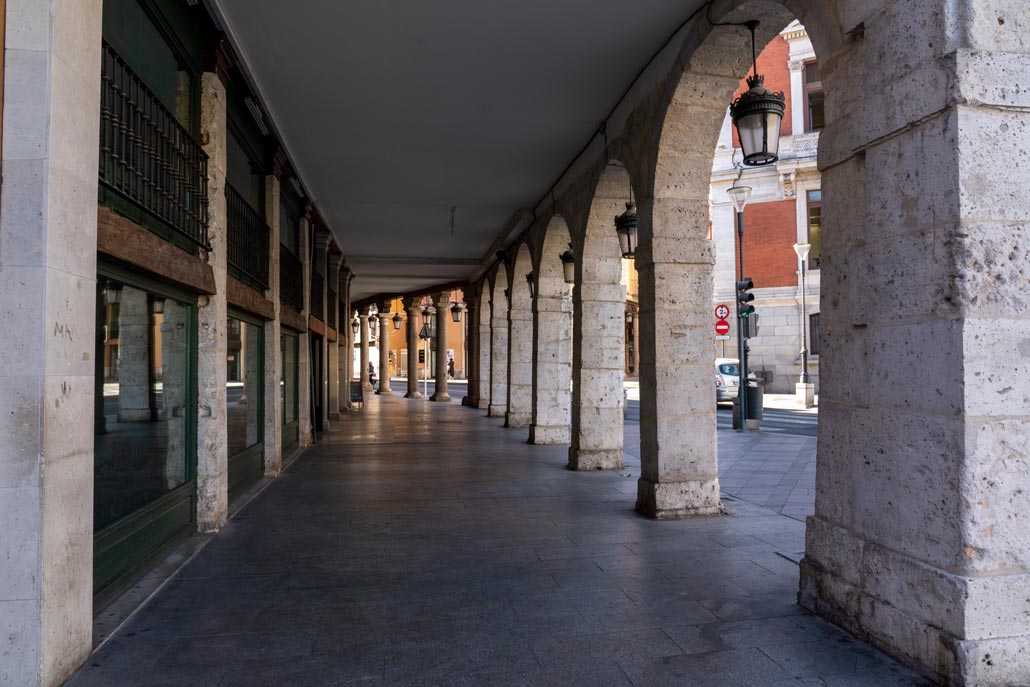
Day two: things to do in Valladolid, Spain
As this schedule is based on a Saturday stay, you’ll want to check opening hours should you be visiting on another day. The cooking school, for example, currently only offers public classes on Saturday mornings.
Morning: Cooking Workshop
Start your Saturday learning how to cook some delicious Spanish dishes at Valladolid’s International Cooking School .
While this renowned chef school is producing the culinary stars of tomorrow, Monday to Friday, on Saturday mornings, they offer public classes ranging from tortillas to rice dishes and anything in between.
You’ll need to book ahead to guarantee your spot, but it’s a fun activity followed by a feast of your own making.
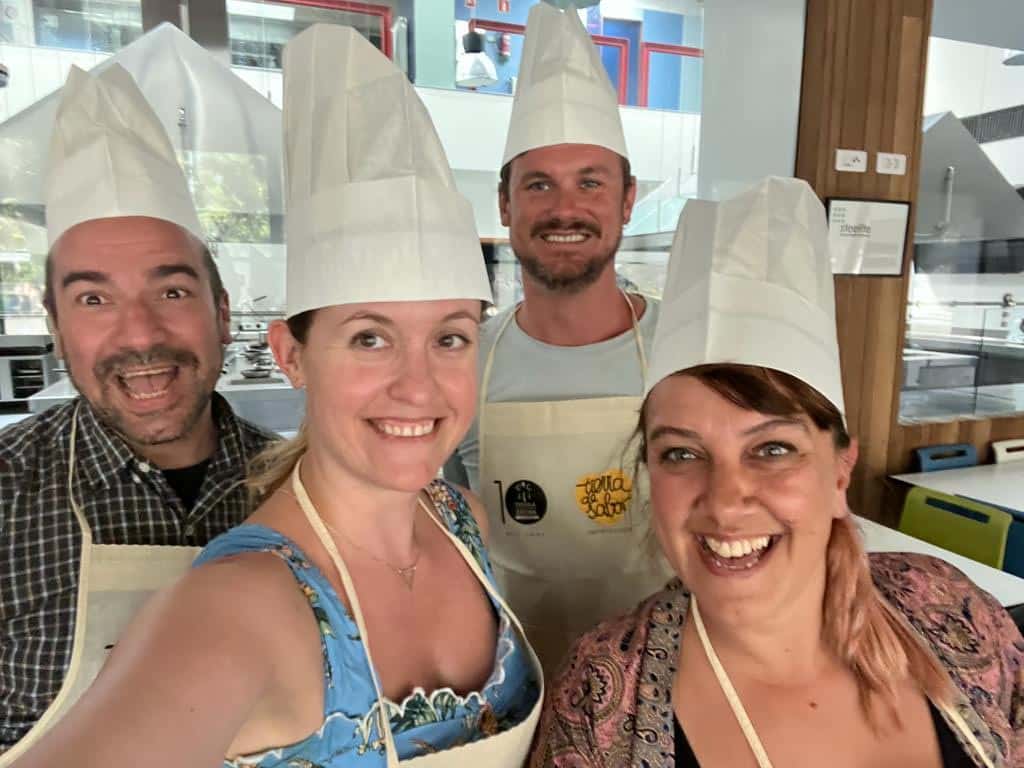
Late morning: Iglesia de Santa María la Antigua or Museo Patio Herreriano
Getting inside the 11th-century Iglesia de Santa María la Antigua isn’t an easy task, as opening hours vary. However, there’s a good chance to visit on Saturday mornings or at least to admire the architecture from the outside.
While the architecture has changed over the centuries, the now Gothic-presenting church has become a symbol of the city. Next door are the remains of Roman Baths, which finally confirmed a Roman presence in Valladolid when they were unearthed during the construction of a car park in 2012.
If you’re not interested in the church, an alternative is to head to the Museo Patio Herreriano. Here, you’ll find an impressive collection of modern art, mainly from Spanish painters, is housed here, inside a well-preserved 12th-century monastery.
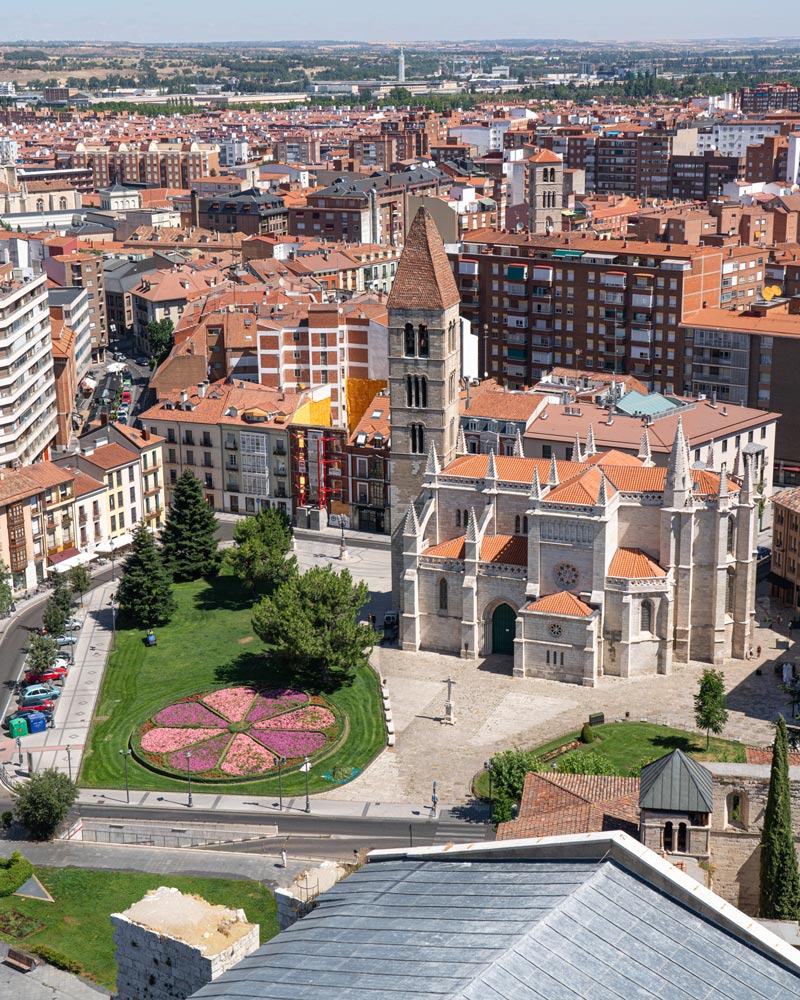
Lunch: wine tasting at Vinoteca Señorita Malauva
With more than 600 wines, 75 beers, and not much else to drink, the colourful and slightly flamboyant Vinoteca Señorita Malauva is the place to come to try Valladolid’s famous wines without venturing into the vineyards.
The charismatic Gustavo pairs wines from Valladolid’s five DOP appellations – Rueda, Cigales, Toro, Tierra de León and Ribera del Duero – with cold cuts, an array of cheeses, and creative dishes, all focused on local ingredients. Expect to over-indulge here, and for non-drinkers, alcohol free wines are offered.
Late afternoon: Admire the Iglesia de San Pablo and Museo Nacional de Escultura
The National Museum of Sculpture is open until 7:30 pm, allowing for a later afternoon visit to this magnificent building. While the Semana Santa (Holy Week) sculptures might not be to everyone’s taste – both due to religious and macabre reasons – the architecture of this grand 15th-century building is reason enough to visit.
Originally, this religious complex was the Colegio de San Gregorio, and it wasn’t until 1842 it was founded as a museum, originally with artworks confiscated from converts. Over the years, the collection has vastly expanded to show the city’s significant Semana Santa celebrations at Easter, although, from many of the self-flagellation sculptures, I can only assume it’s a much more sombre event here than in Andalucia.
Be sure to take time to appreciate the courtyards, ornate ceilings, and imposing staircase, as well as the Isabelline-style facade of the building and Iglesia de San Pablo next door.

Pre-dinner drinks and tapas: Pasaje Gutiérrez
Combine a pre-dinner drink with a slice of commercial history at one of the cocktail bars inside this 19th-century passageway. A vintage mix of steel, glass and frescoed-style ceilings make the setting an excellent spot for a glass of wine.
For dinner, take your pick of the many restaurants across the city, or consider an evening slice of culture at the Teatro Calderón de la Barca, a magnificent theatre of rich-ruby seating that opened in 1864.
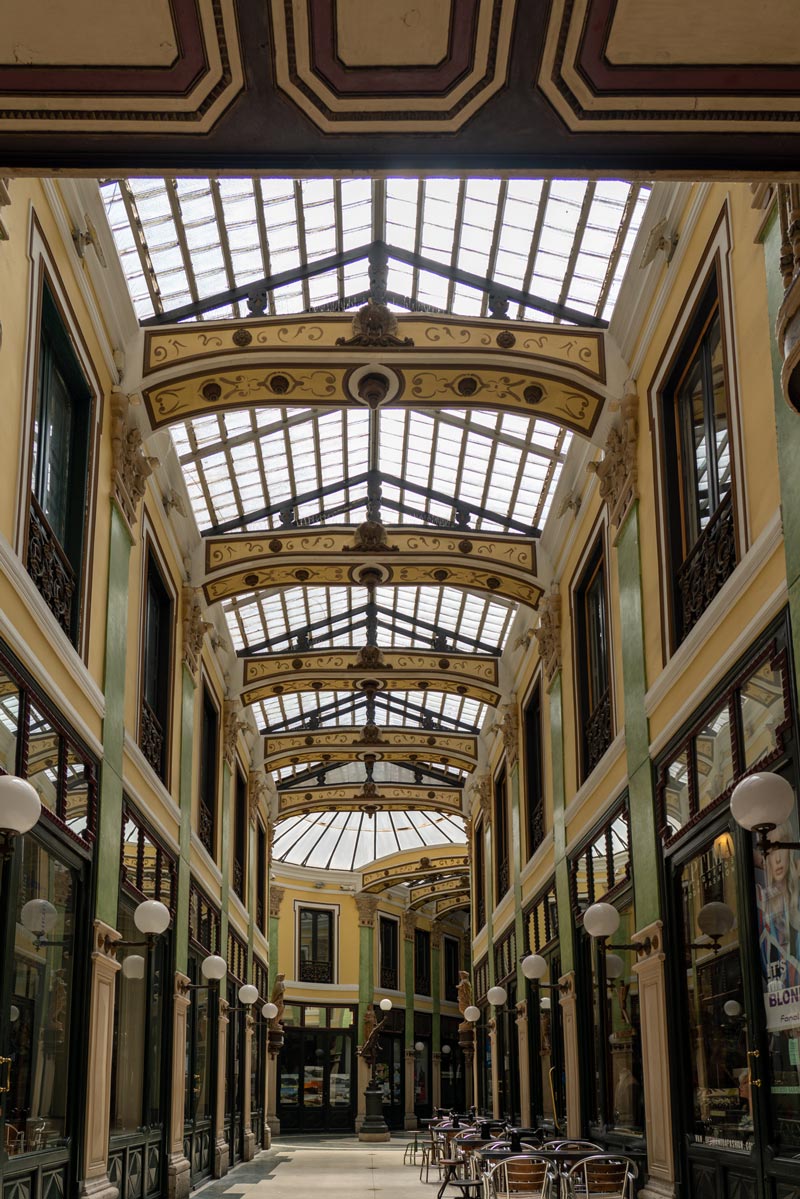
Day three: things to do in Valladolid, Spain
Enjoy a lazy Sunday breakfast before enjoying the few attractions in the city that remain open all weekend, although you’ll need to keep an eye on the watch for closing hours.
Prefer to head out of the city?
The city’s surroundings are awash with castles and vineyards and the artificial Canal of Castile , a dreamy setting to cycle along and see little villages alongside aqueducts and castles. The five appellations and twenty grape varieties make the vineyards equally tempting. However, you’ll need to check if any are open on a Sunday (or whichever day you are visiting) in advance.
Morning: visit the El Palacio Real
The Royal Palace has played host to many of Spain’s royal monarchs and was home of the Royal Court during Valladolid’s short-lived status as the defacto capital of Spain.
Nowadays, the military uses the building, making a visit complicated. Luckily, on Sunday mornings (10:30 am) you can join a guided tour to venture inside. While much of the space is restricted, you’ll have the chance to visit the opulent throne room, marvel at the intricate stonework on the courtyard’s floor, and visit the imposting staircase, amongst other open spaces.
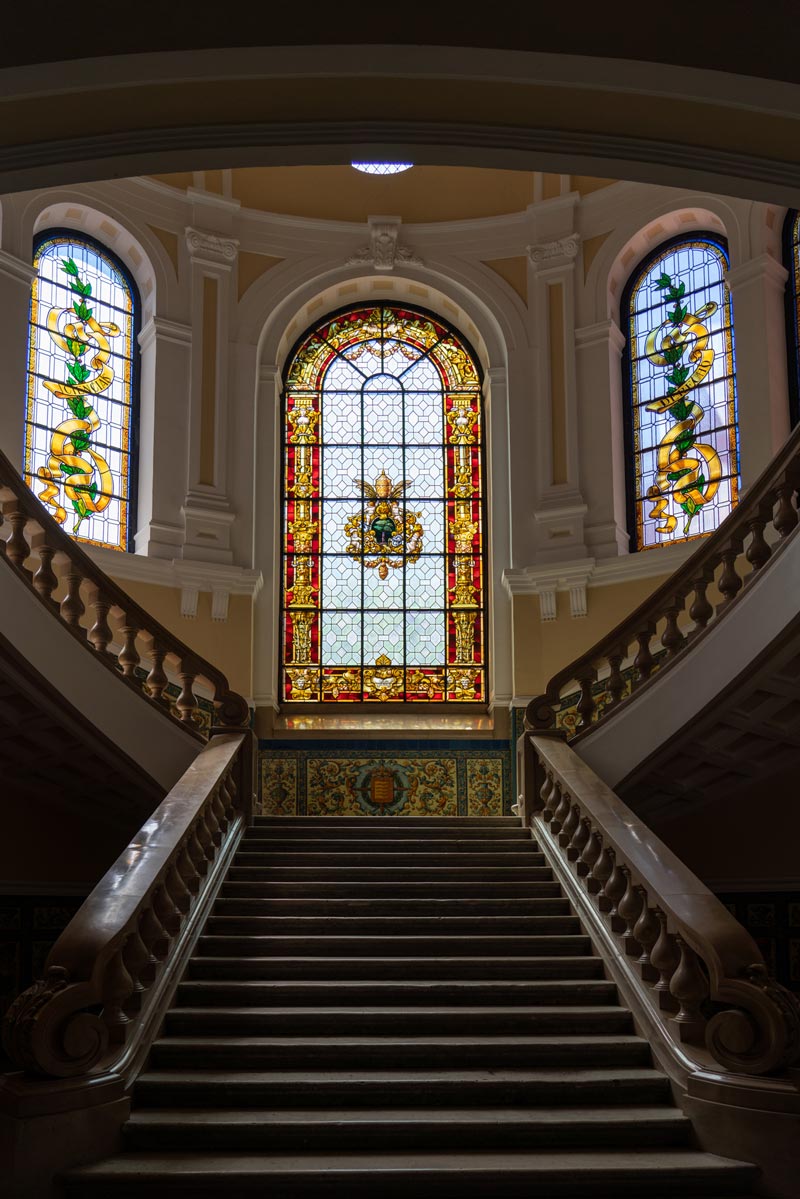
Late morning: tour the Cathedral’s Tower or Casa de Cervantes
On Sunday mornings, guides offer the chance to venture to the top of Valladolid’s cathedral tower every hour.
Thankfully, there is a lift, so you don’t need to climb all 364 wooden steps, although some stairs will need to be taken to reach the bell tower.
While this cathedral has never been completed, the original plans (on display) show how it planned to be the largest Christian building in the world during its construction time. From the top, the views aren’t as impressive as some other towers, however, the unique and historic timepiece that controls the bells ringing is intriguing to witness.
Lunch: Plaza Mayor
Head to one of the restaurants around Valladolid’s Plaza Mayor for lunch. There are a handful of options to choose from here – head to Helados y Turrones Iborra for post-lunch ice cream – and after 11 am, the road passing through closes, making it a more pleasant time to visit.
If you study the floor, you’ll eventually come across a plaque dedicated to Christopher Columbus. His first tomb is believed to have been here, inside a convent that used to exist before the plaza.

Afternoon: Real Monasterio de San Joaquín y Santa Ana
If you haven’t already departed and fancy a final slice of religion (there are a lot of Baby Jesus impressions) and the chance to see a panel by renowned painter Francisco Goya, wrap up your weekend in Valladolid at the 16th-century Monasterio de San Joaquín y Santa Ana.
Still inhabited by nuns today – their income comes from renting part of the space to a restaurant – the visitable areas house a small museum of religious art. The small church attached is where you’ll find the three pieces painted by Goya, but as it only opens at Easter to the public, you’ll need to pay the monastery’s entrance fee to see them.
Where to stay in Valladolid, Spain
Valladolid has a varied choice of accommodation, here are a few suggestions right in the heart of the city,
Budget: Hostal Ramón y Cajal Valladolid isn’t the cheapest destination for accomodation, and the most affordable options are usually far from the centre. These basic rooms therfore are a reliable choice.
Mid-range: Hotel Boutique Gareus I spent my visit in this hotel and found it a good choice. The rooms were very spacious, good blackout curtains, mid-way between the main centre and the train station, and the public spaces were nicely decorated.
Luxury: AC Hotel Palacio If you don’t mind being a little out of the centre, this incredible 5* hotel in a converted 18th-century monastery provides a rather grand and tranquil retreat.
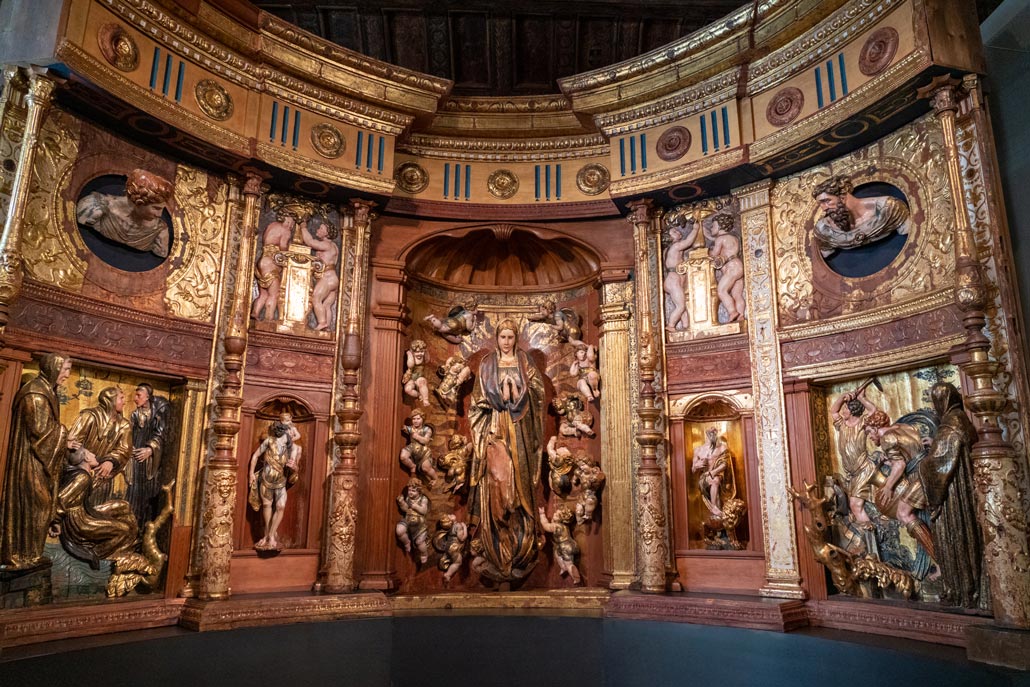
When to visit Valladolid, Spain
Summer is a very hot and dry time to visit Valladolid, Spain, although the evenings can still be quite chilly. The average daily temperatures of 30°C in summer seem okay, but they can often peak much higher.
Personally, I’d suggest heading here in Spring or Autumn when the weather isn’t as intense. In October, the wine harvest takes place, so this could be the best time to visit Valladolid if you want to be a part of these events in the vineyards.
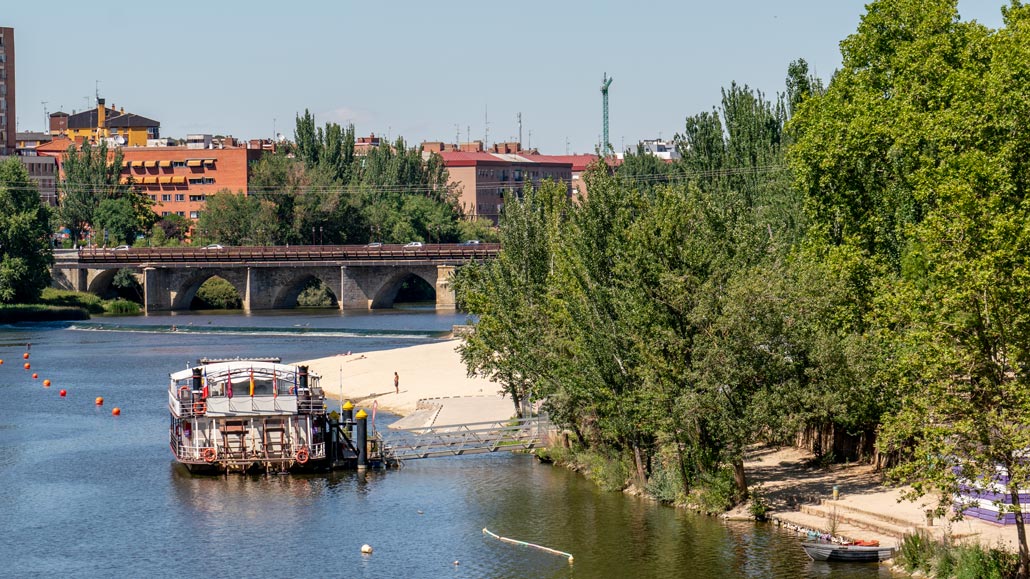
How to get to and around Valladolid, Spain
Exploring the city centre is easily done on foot, although if you plan to cross the river and head further afield, you might want to use the city bus network. Some public buses leave the city to small villages near some vineyards, but always check the weekend schedules as services can be reduced or non-existent, compared to the weekday routes.
Travelling to Valladolid by train
If you’re coming to Valladolid from elsewhere in Spain , then using the train service is likely the best connection, with buses being a decent alternative. From Madrid, the journey by train takes around 90 minutes on Renfe’s Avila service (high-speed rail), while from nearby León , you can reach Valladolid in less than an hour. Tickets can be booked on the Renfe website (usually the cheapest) or using one of the popular and best travel apps, such as Omio .
Travelling to Valladolid by plane
The nearest airport to Valladolid is Valladolid Airport. However, it is mainly used for domestic flights. If you choose to fly, then opt to arrive in Madrid, and from the airport, it’s about 90 minutes by train connection to the city.
Travelling to Valladolid flight free from the UK
If you want to visit Valladolid from the UK without flying, you have two options.
The first is to take the Eurostar from London, and from there, the train to Hendaye, followed by another train from San Sebastian . Alternatively, you can take a two-bus connection from London via Bilbao (likely slightly cheaper).
An alternative is to take the ferry from the UK, operated by Brittany Ferries, either to depart Portsmouth or Plymouth (though some sailings are only in summer) and arrive in Santander or Bilbao. Both journeys involve two nights aboard the ship. From either arrival point, you can continue by car if driving or take an approximately 3-hour train journey to Valladolid.
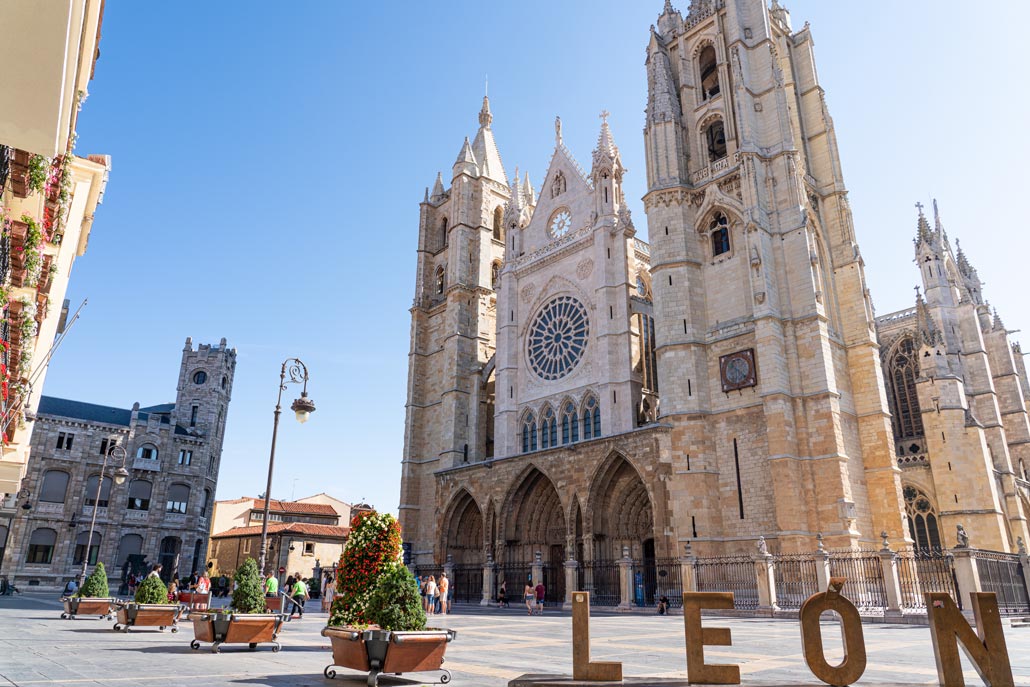
Where to travel after Valladolid
From Valladolid, it’s easy to continue your journey by train to explore the other cities of Castile and León , such as León or Salamanca. Beyond, plenty more of Spain’s hidden gem s await.
This article was supported as part of my #SpainByTrain in partnership bu Spain Tourism and Castilla y León Tourism .
Related Posts:
- Best Hidden Gems in Spain: 21 Unique Places To Visit in Spain
- How to spend a weekend in León, Spain: attractions, architecture and…
- Sample Spain in Seven Days With These 5 Itinerary Ideas
- A quick guide to Sri Lanka’s UNESCO attractions
- 11 Fantastic Things To Do in Northern Spain
- 20 Best Cities to Visit in Spain for Culture, Coast or Cuisine
the architectural beauty of Spain is amazing. when I was reading your blog it give me the feeling that virtually I am present in Spain and enjoying my travel. Every building picture you posted here is amazing.
Thanks for the great article. We are planning a trip to Madrid and wanted to extend the adventure to some place interesting outside of the city and accessible via train. This seems like a terrific option. Thanks!
Leave a Reply
Leave a reply cancel reply.
Your email address will not be published. Required fields are marked *

Hey, I’m Dan…
Sign up for (irregular) updates.
Email Address *
Recent Articles…
- Summer Highs in Innsbruck, Where the Alps Are for All
- 5 of Portugal’s Best Multi-Day Trails
- 12 Fantastic Things To Do in the UK
- 11 Unforgettable Things To Do in France
- 8 Alternative Spa and Wellness Destinations in Europe
- 9 Blissful Beach Destinations for Sun, Sand, and Serenity
- A Guide to Gijón, Spain: Asturias’ Beloved Beach Escape

- Top Things To Do And...
Top Things To Do And See In Valladolid, Spain

The city of Valladolid is located in the province of Castile and León, northwest of the Spanish capital Madrid . A small, but lively city, it showcases an impressive architectural display and has a handful of excellent museums. After dark the city really comes into its own with a buzzing nightlife scene. Did you know – Culture Trip now does bookable, small-group trips? Pick from authentic, immersive Epic Trips , compact and action-packed Mini Trips and sparkling, expansive Sailing Trips .
Marvel at the cathedral of valladolid.

The Catedral Nuestra Señora de la Asunción , also known as Valladolid Cathedral, was built in the 16th century, however its impressive facade was not added until the 18th century. It was designed by the architect Juan de Herrera, who also designed the celebrated Escorial in Madrid. Inside, look out for the 16th century altarpiece made by Juan de Juni and visit the Cathedral Museum to see a wider collection of religious sculptures and paintings.
Visit the Museo Nacional de Escultura

Valladolid’s National Sculpture Museum is one of the most important collections of Spanish sculpture in the country. Housed in the elegant San Gregorio College, it features everything from wooden sculptures to stone statues and altarpieces, some dating back to the 16th century.
Relax on the Beach of Las Moreras

Valladolid is not actually located on the coast, but that doesn’t mean it doesn’t have a beach. Located along the Pisuerga River you’ll find the Playa de las Moreras , a lovely stretch of sand where you can sunbathe during the day and make use of the beach bar at night.
Casa Museo de Colón
The great explorer Christopher Columbus (known as Cristóbal Colón in Spanish) died in Valladolid in 1506 and to commemorate this, the city has created a museum dedicated to his life. The museum is located in the former house of Diego Columbus, grandson of the explorer, and is spread out over four floors. It features everything from original old maps to interactive exhibits, models of his ships and even a tombstone in the courtyard, showing the spot where he died.
Walk Around the Atmospheric Plaza San Pablo

Dominated by the imposing San Pablo church, this wide square is worth a look around to see some of the city’s most striking architecture. As well as the church, you’ll see the Palacio de Pimentel, the birthplace of King Felipe II; the Palacio Real, the seat of the Royal Spanish Court between 1601 and 1606; and the Casa Museo José Zorrilla, the birthplace of one of the city’s most well-known writers.
Visit the House of Cervantes
One of Spain’s most famous authors, Miguel de Cervantes lived at this 16th century house in Valladolid between 1604 and 1606, during the time when his most famous book Don Quijote de La Mancha was being published. Cervantes’ library and all his rooms have been preserved to look just the way they did when the author lived there.

Become a Culture Tripper!
Sign up to our newsletter to save up to $1,395 on our unique trips..
See privacy policy .
Look Around the Museo Patio Herreriano
Housed in cloisters of a former monastery, this contemporary art museum is dedicated to post-World War II art and displays works by artists such as Joan Miró, Antoni Tápies, Salvador Dalí and Jorge Oteiza.
Go for a Stroll in the Campo Grande Park

Measuring over 100,000 square meters, the Campo Grande Park is the largest and most celebrated green space in the city. It features over 100 different species of trees and many flower gardens, as well as various water features such as fountains, lakes and ponds. It’s ideal to visit at any time of year – to go boating on the lake in spring, sit under shady trees in summer, or enjoy autumnal walks in fall.
Culture Trips launched in 2011 with a simple yet passionate mission: to inspire people to go beyond their boundaries and experience what makes a place, its people and its culture special and meaningful. We are proud that, for more than a decade, millions like you have trusted our award-winning recommendations by people who deeply understand what makes places and communities so special.
Our immersive trips , led by Local Insiders, are once-in-a-lifetime experiences and an invitation to travel the world with like-minded explorers. Our Travel Experts are on hand to help you make perfect memories. All our Trips are suitable for both solo travelers, couples and friends who want to explore the world together.
All our travel guides are curated by the Culture Trip team working in tandem with local experts. From unique experiences to essential tips on how to make the most of your future travels, we’ve got you covered.
Culture Trip Summer Sale
Save up to $1,395 on our unique small-group trips! Limited spots.

- Post ID: 979749
- Sponsored? No
- View Payload
- Fueteventura
- Gran Canaria
- All Portugal Tours
- All Spain Tours
- All Azores Islands
- Santa Maria
- Mont Saint Michel
- Chefchaouen
- All Portugal
- Castro Marim
- São Brás de Alportel
- Vila do Bispo
- Vila Real de Santo António
- Sintra & Cascais
- Azeitão & Sesimbra
- Ericeira, Peniche & Mafra
- Douro Valley
- Braga & Gerês
- Costa Verde
- Spanish Border
- Viana do Castelo
- All Northern Spain
- San Sebastian
- Vitoria-Gasteiz
- Castro Urdiales
- Santiago de Compostela
- Picos de Europa
- Ciudad Real
- Guadalajara
- All Andalucia
- Jerez de la Fronteira
- Sherry Route
- Sierra Nevada
- All Canary Islands
- Fuerteventura
- Lanzarote & Graciosa

Design Your Next Adventure

Request a quote>
Things to do in Valladolid, Spain - 2-day itinerary
Valladolid is a small and vibrant city a few miles north of the capital of Madrid. It is part of the Castile and León region and is famous for its impressive medieval architecture, with iconic churches like the Valladolid Cathedral and monumental squares like Plaza Mayor.
There are also museums dedicated to famous figures such as Cervantes and Christopher Columbus. After dark, Valladolid comes alive as the large student community fills the city’s bars and clubs.
Join us as we explore this historic city in our two-day itinerary. You’ll find all the top attractions in Valladolid, plus tips on where to stay and eat.
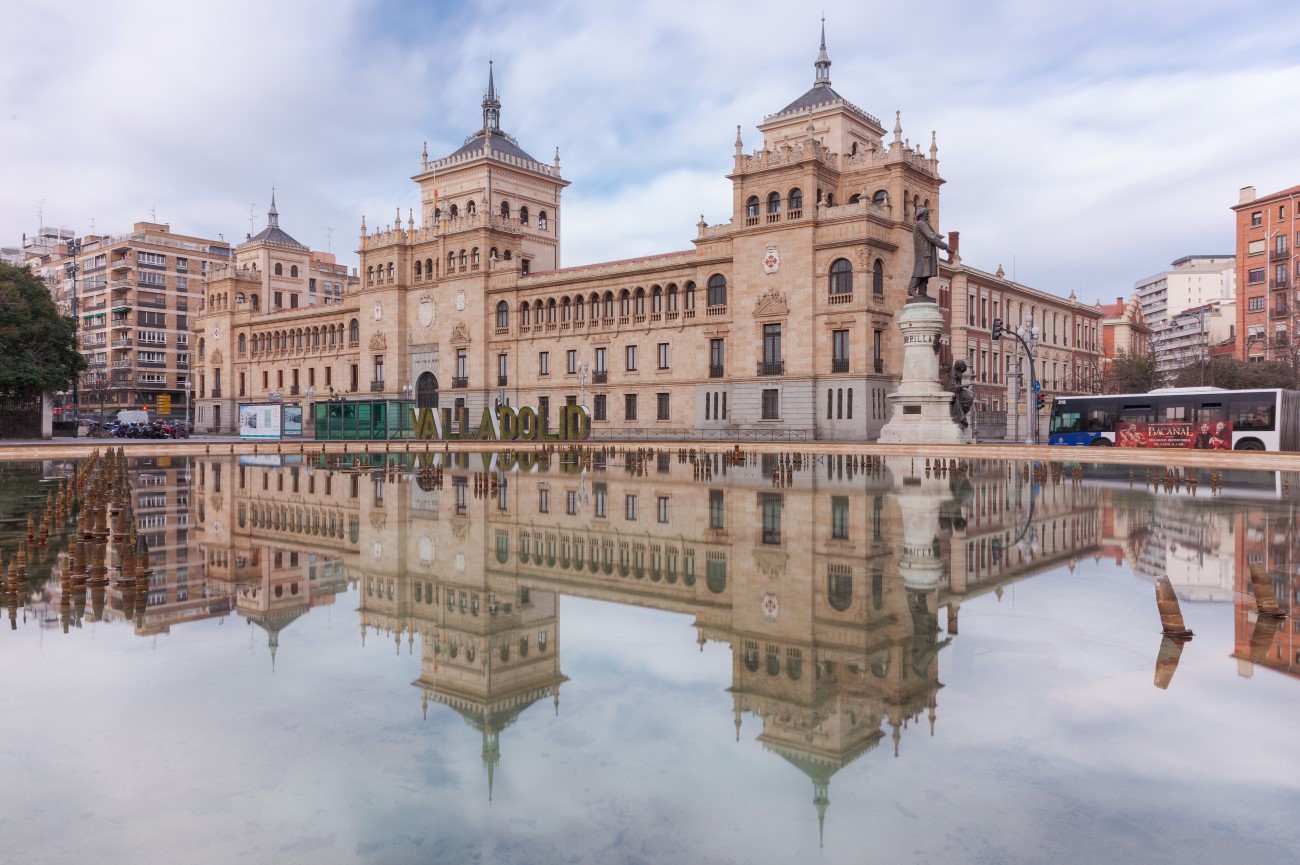
Morning: Valladolid Cathedral
Start your day exploring one of the city’s landmarks, the Catedral Nuestra Señora de la Asunción. This incredible cathedral was built in the 16th century and designed by the famous architect Juan de Herrera, who also created the Escorial in Madrid. More recent additions include the facade, reconfigurated in the 18th century.
It is worth stepping inside to admire the church’s bold altarpiece created by Juan de Juní and the processional monstrance by Juan de Arfe featured in the attached museum. Guided tours last around 45 minutes and include a visit to the cathedral and bell tower (the tower is only accessible through guided tours). Alternatively, you can combine this ticket with the museum and extend your visit to two hours.
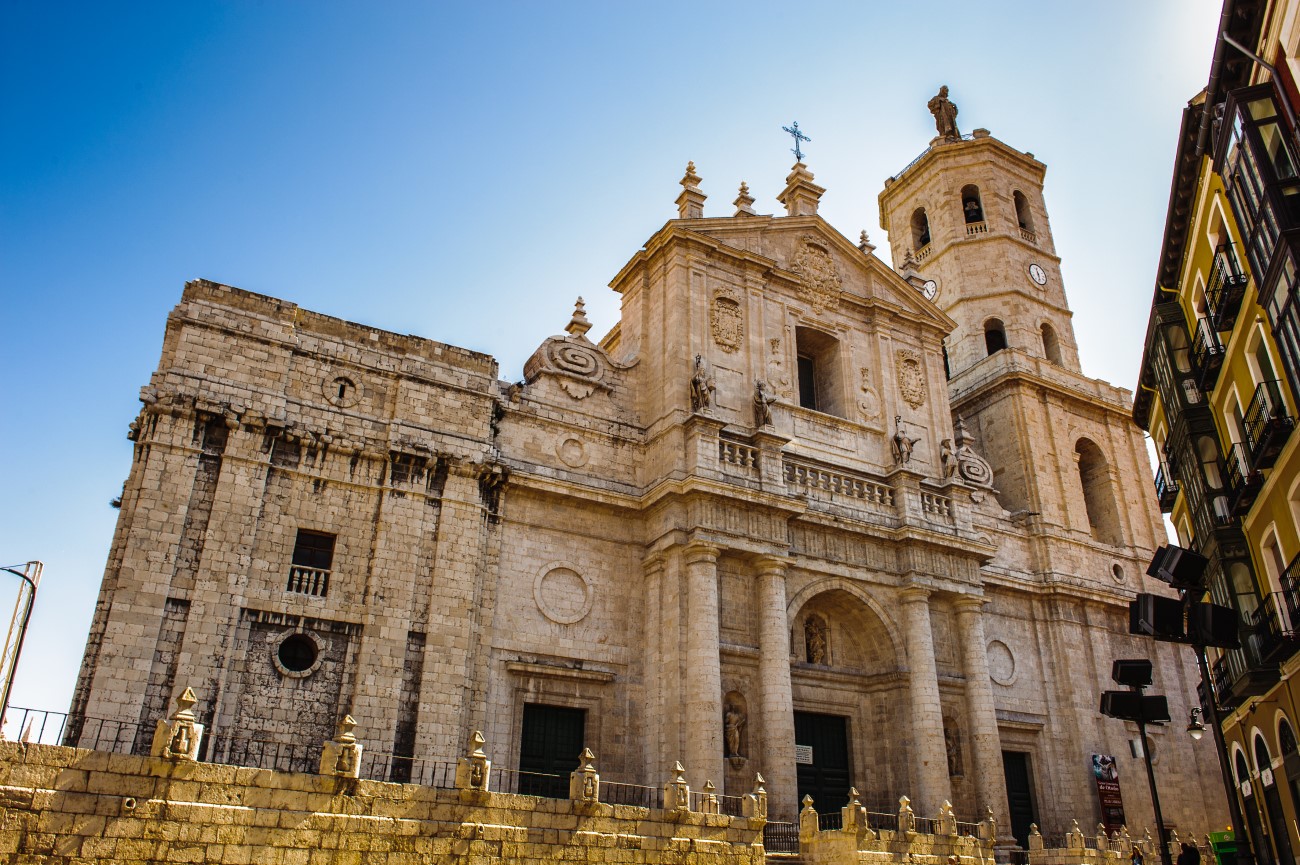
Santa Cruz Palace
Take a short walk up to the Palacio de Santa Cruz. The palace was built in 1491 to serve as the Colegio Mayor, and became the first Renaissance building in Spain. During your visit you’ll see a stunning inner courtyard with a guarded clock, a bookshop that belonged to the Cardinal’s College and an incredible back garden perfect for a morning stroll.
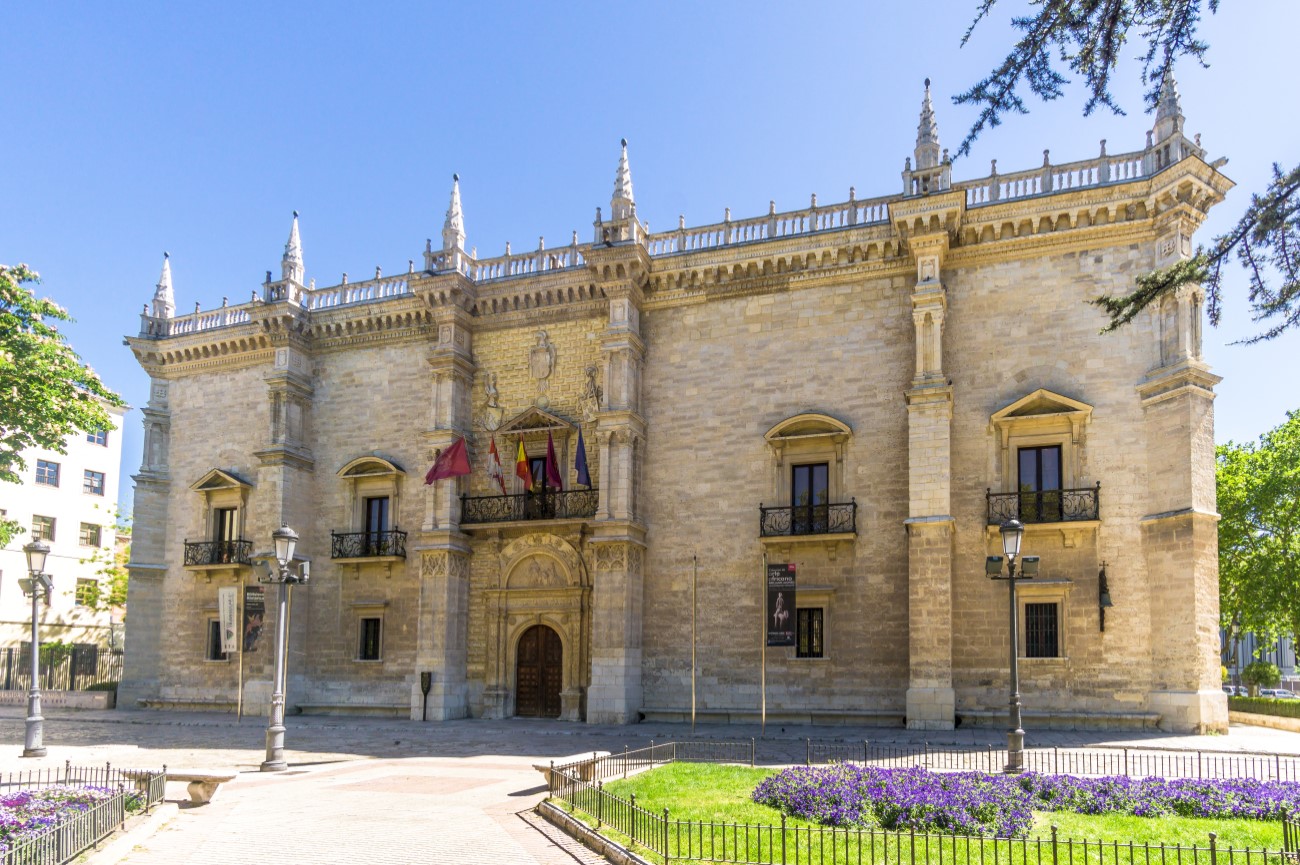
Casa-Museo de Colón
History buffs will love a visit to the Casa-Museo de Colón, a museum dedicated to the life of Christopher Columbus (known as Cristóbal Colón in Spanish). This iconic explorer died in 1506 in the city of Valladolid. The museum is located in the former house of Christopher’s grandson Diego Columbus and reveals every detail of his ancestor's life and explorations. Inside is a vast collection of items, from original old maps to interactive exhibits and models of his ships. There is even a tombstone in the courtyard, showing the exact spot where Colombus passed away.
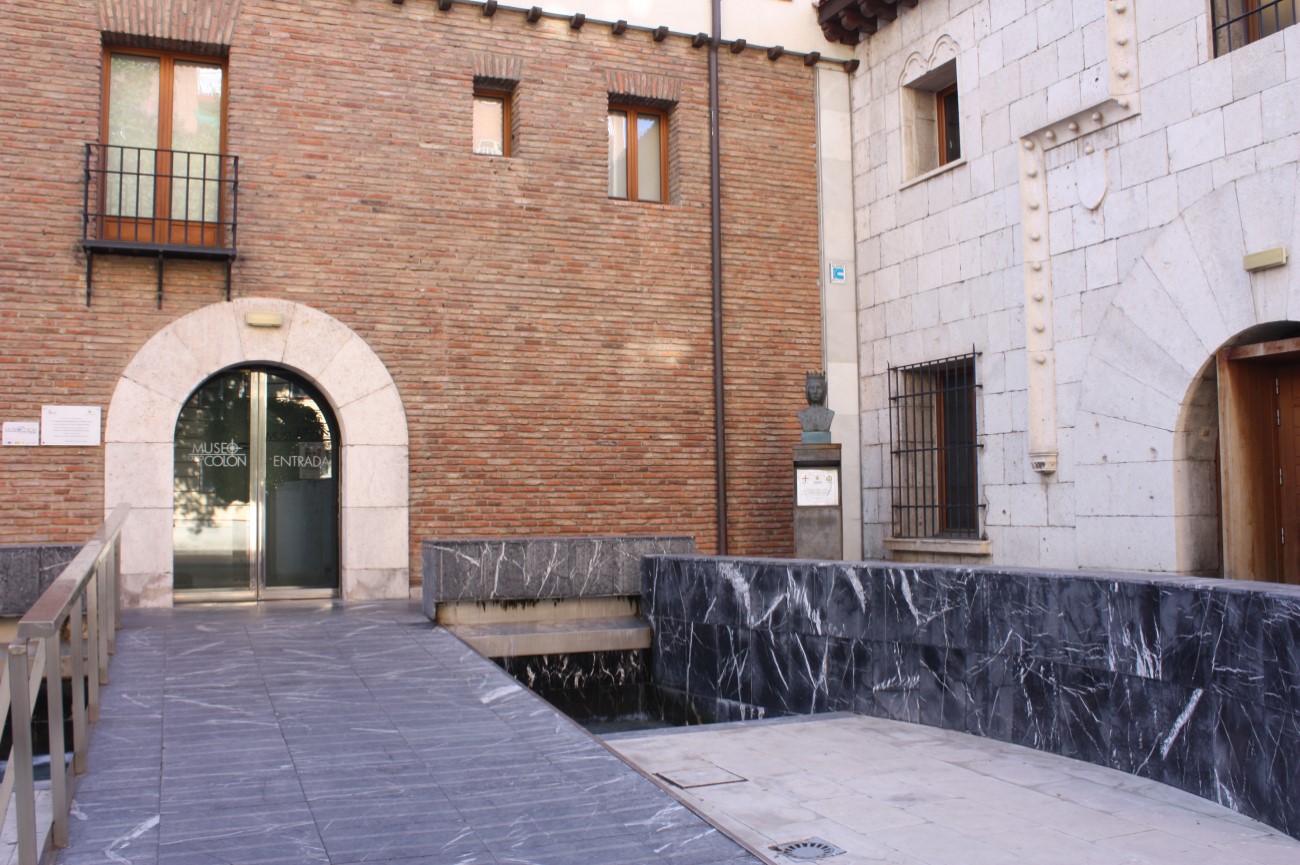
Church of Santa María de la Antigua
Finish your morning with a visit to the Church of Santa María de La Antigua. There's been a temple here since the 11th century, but the building you see today is from the 14th century. During your visit, you can explore the glorious interiors and gardens and capture the elegant Romanesque tower, one of the few remaining features of the original site. Around the church are a series of bars and restaurants where you can stop for a drink.

Afternoon: Casa de Cervantes
Miguel de Cervantes, one of Spain’s most famous authors, lived in Valladolid between 1604 and 1606, right when his most famous book Don Quijote de La Mancha, was launched. His 16th-century house is now a museum dedicated to his life. All the rooms were kept the same way as when the author lived here, featuring personal objects like his book collection, furniture and examples of his writing.

Parque Campo Grande
After visiting a few monuments, it is time to relax at the Parque Campo Grande, the biggest green space in the city. Here you'll find over 100 species of trees and flowers, along with fountains and ponds. Take a seat under a tree or go boating on the central lake. If you're lucky, you might catch a peacock or two roaming around.
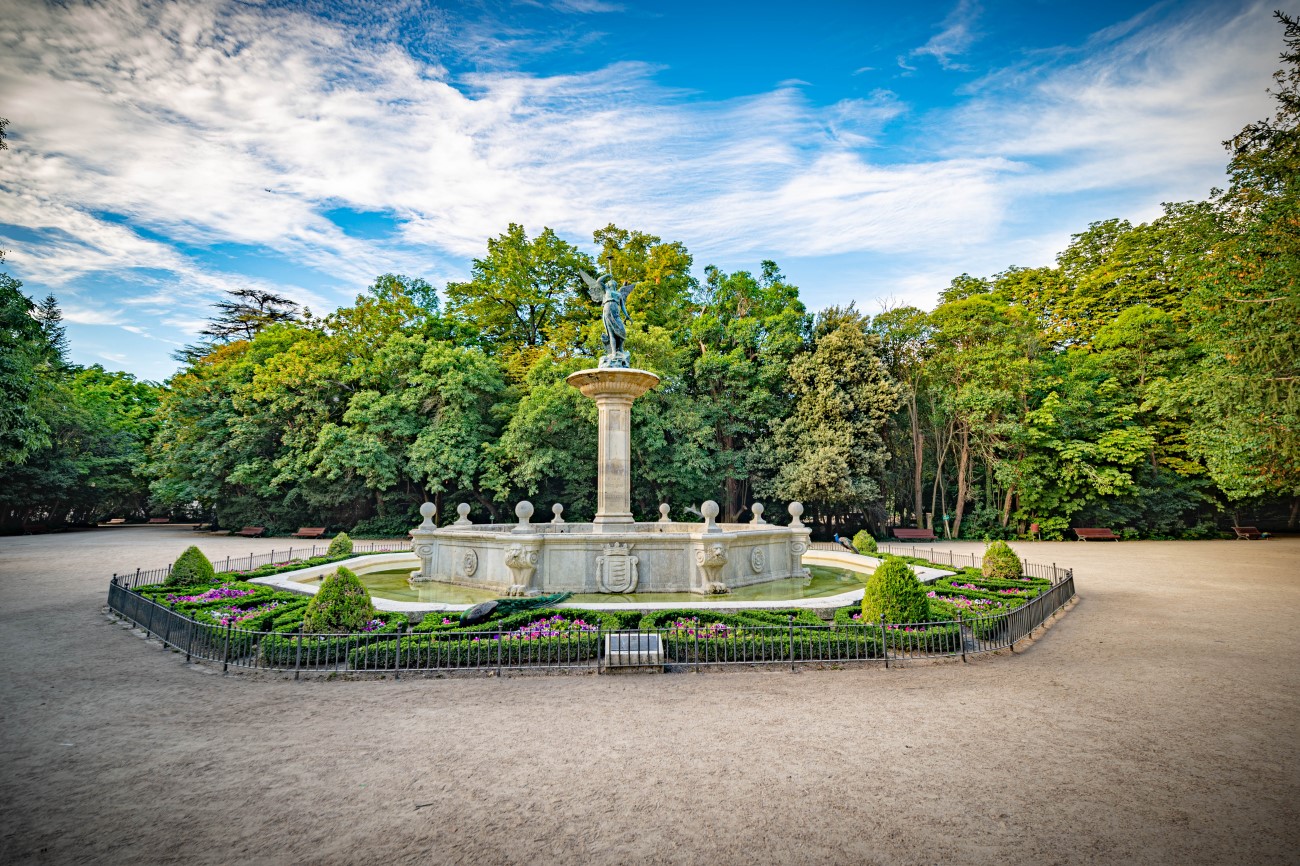
Plaza Mayor
End your day in the heart of the historic centre at Plaza Mayor. This imposing square stands out with its striking red floor and buildings. Standing in the middle is the town hall, better known as the Casa Consistorial. The plaza is the perfect spot for an evening stroll or a drink in the surrounding bars. Many shows and concerts take place here throughout the year.

Day 1 - Valladolid Tour Map
Morning: Plaza de San Pablo
Begin your second day with a visit to the Plaza de San Pablo. This square is an important architectural landmark. Here you can admire a series of iconic buildings such as the Palacio de Pimentel (the birthplace of King Felipe II), the Palacio Real (the seat of the Royal Spanish Court between 1601 and 1606) and Casa Museo José Zorrilla. Another dominating site in the square is the beautiful Iglesia de San Pablo. The church has one of the most impressive Isabelline Gothic facades in Spain.
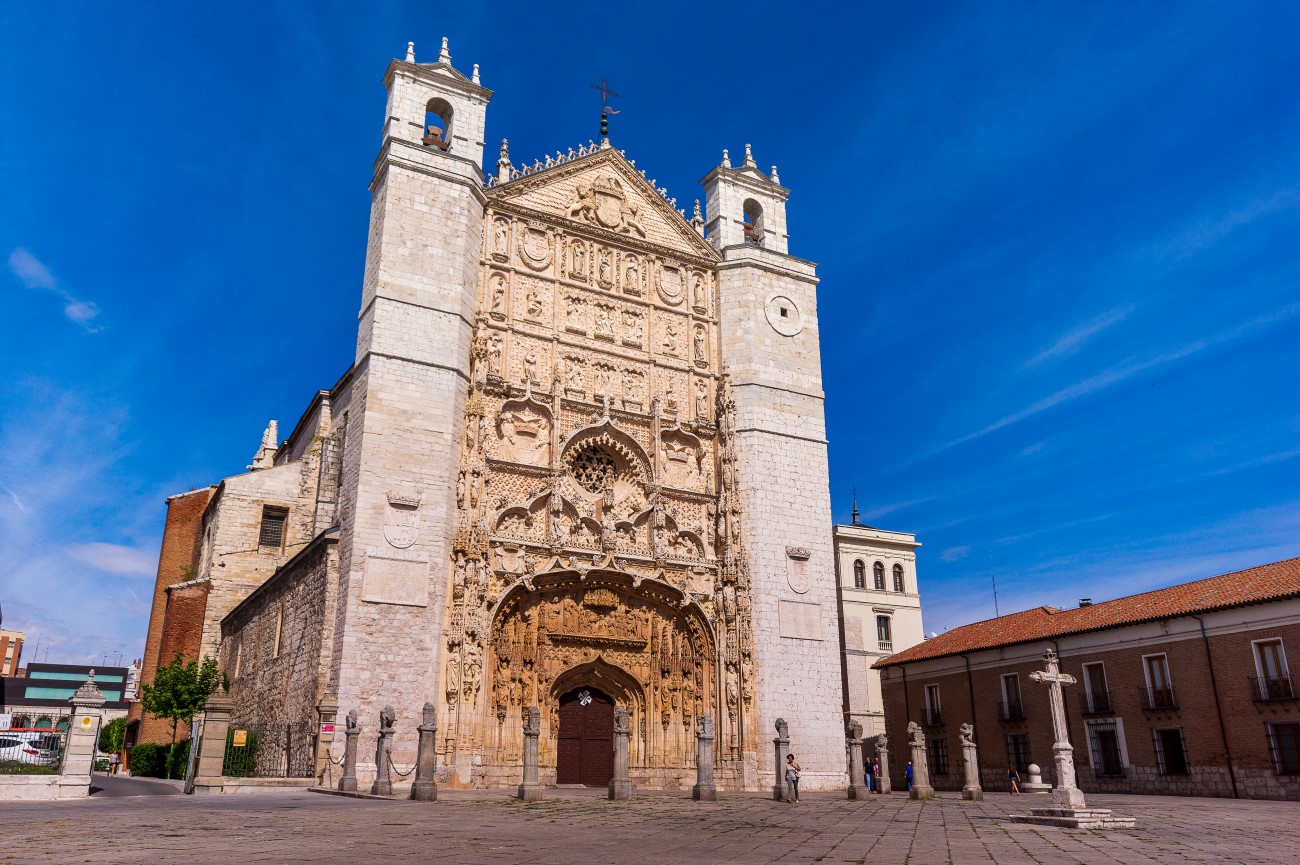
Museo Nacional de Escultura
Close to the square is the Museo Nacional de Escultura. The museum occupies the 15th-century San Gregorio College and showcases some of Spain’s greatest sculpture collections, from stone statues to wooden sculptures and altarpieces. Highlights include the works of Alonso de Berruguete, Juan de Juní and Gregorio Fernández.
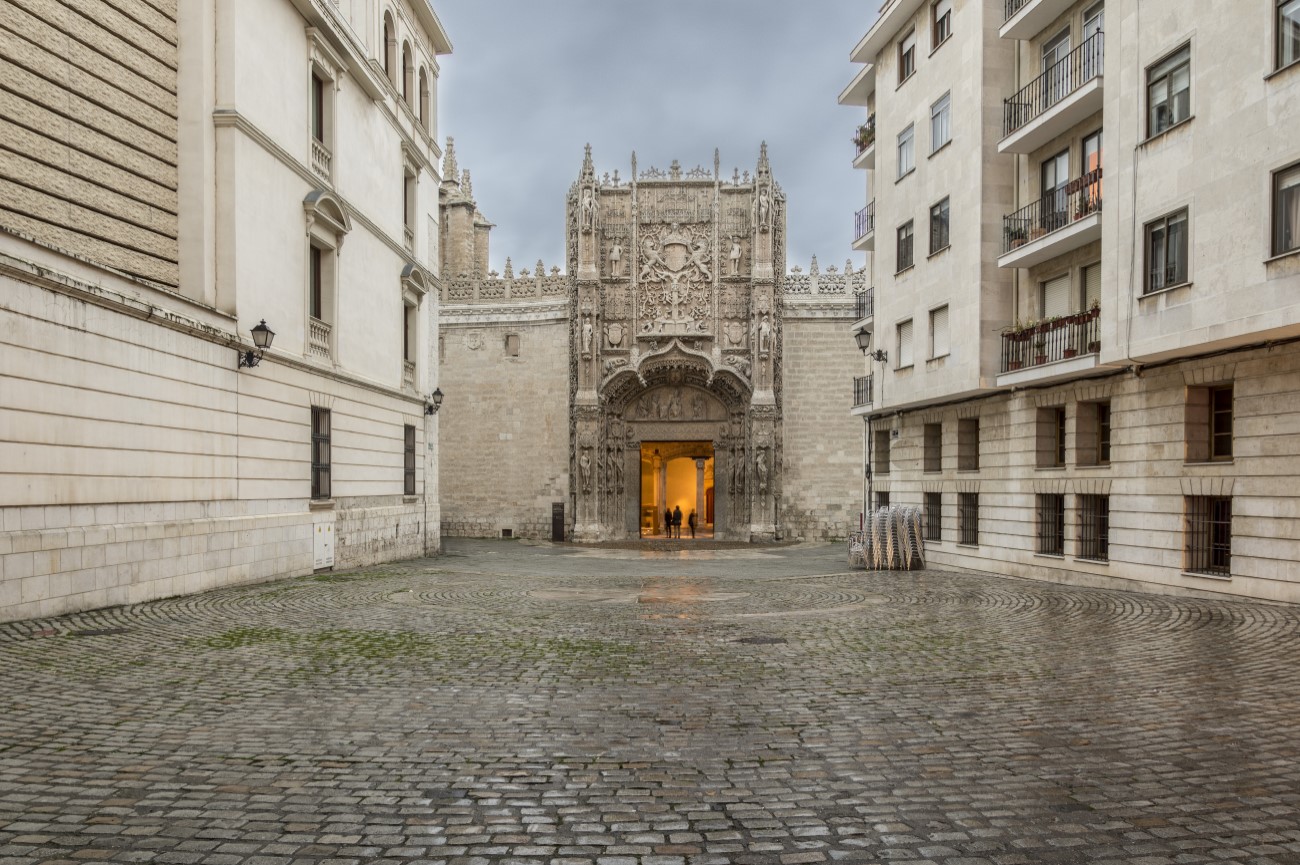
Mercado de Val
From the museum, take a walk down to Mercado de Val. This historic market has numerous little stalls selling fresh ingredients alongside restaurants and bars where you can grab a bite to eat. It's the oldest market in Valladolid, dating back to 1892.
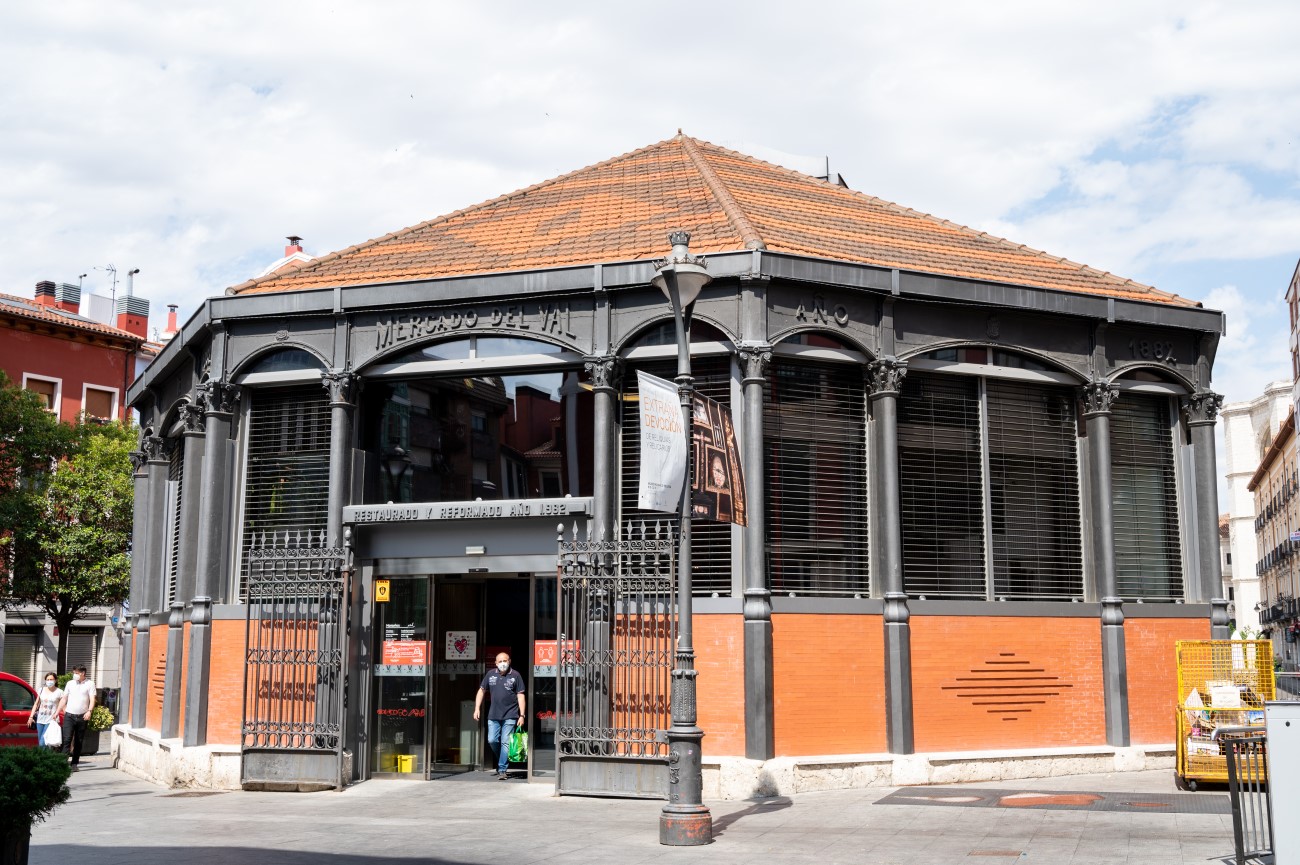
Afternoon: Church of San Benito
Continue your tour of the city by visiting the Church of San Benito. This 16th-century building was erected above the remains of the city’s first fortress. The most striking characteristics include the octagonal columns and its stunning altarpiece.

Museo Patio Herreriano
Occupying a former monastery is the Museu Patio Herreriano, a contemporary art museum dedicated to post-World War II art. Here you can admire the works of Joan Miró, Antoni Tàpies, Salvador Dali and Jorge Oteiza.
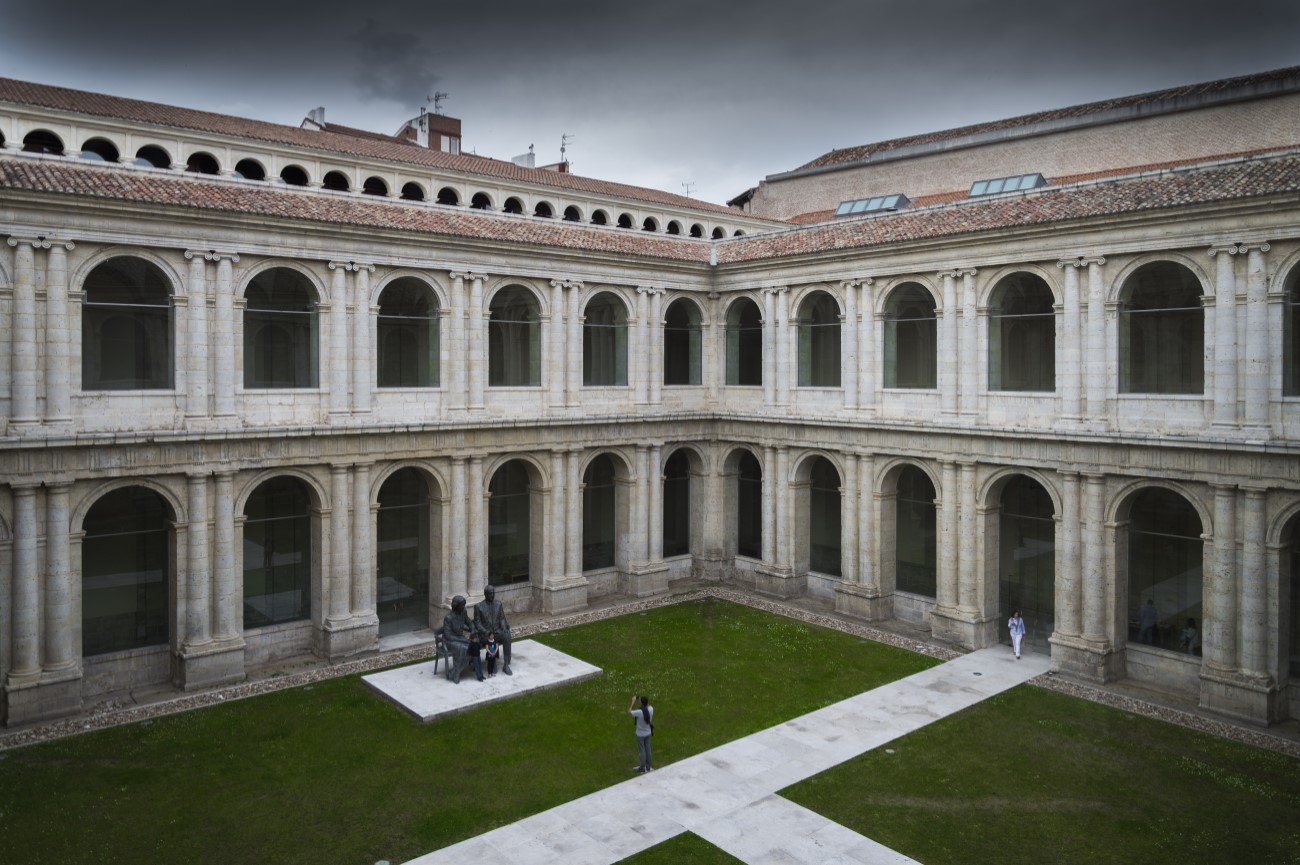
Playa de Las Moreras
Spend the rest of the afternoon relaxing at Playa de las Moreras. Despite not being on the coast, Valladolid has this lovely stretch of sand on the bank of the Pisuerga River, where locals come to sunbathe and escape the summer heat. At night, head to the beach bar for some drinks and tapas.
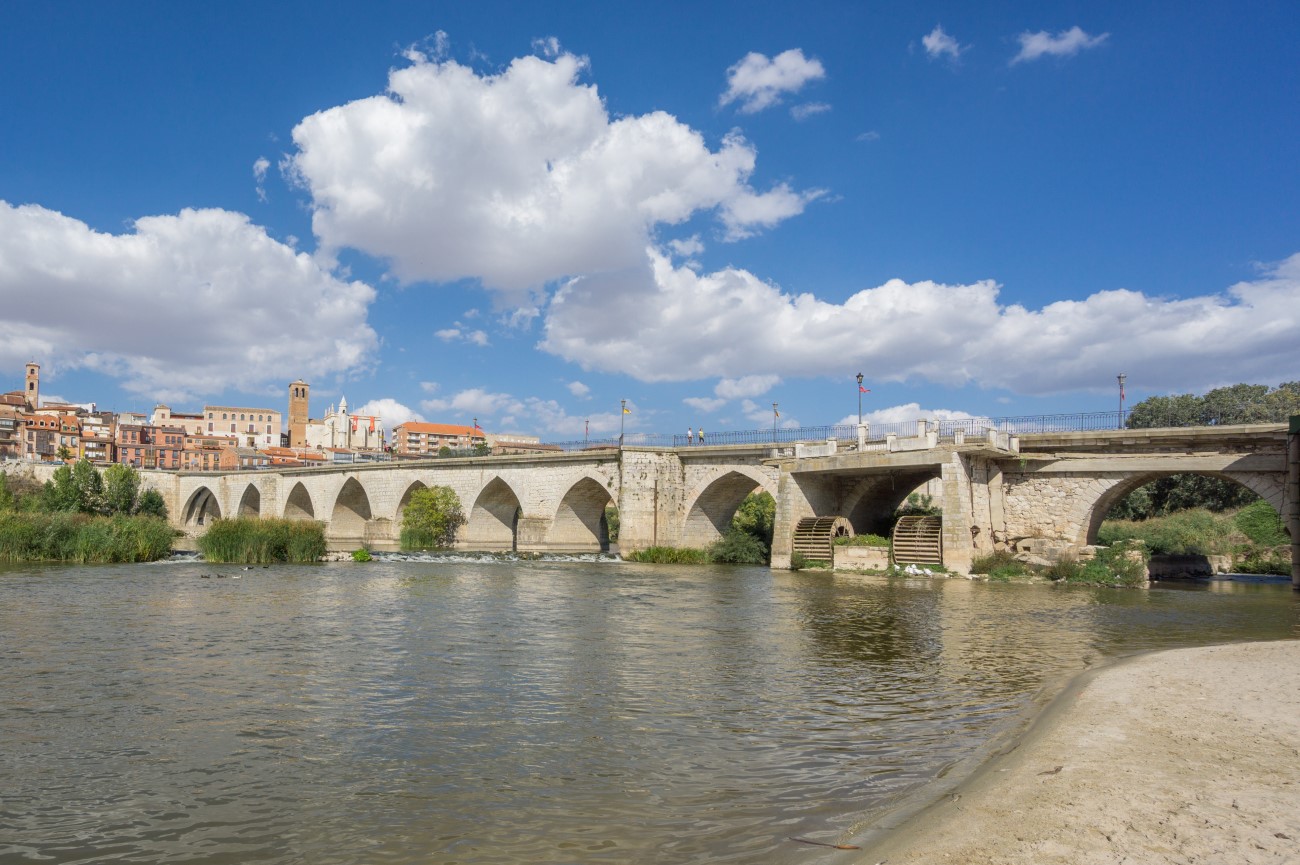
Day 2 - Valladolid Tour Map
Day trips from Valladolid
- Urueña: This tiny village of less than 200 residents was declared a Historic-Artistic Site thanks to its medieval heritage. It’s about 50km west of Valladolid. While you're here, make sure to visit the Wall, the Castle and the Church of Santa Maria.
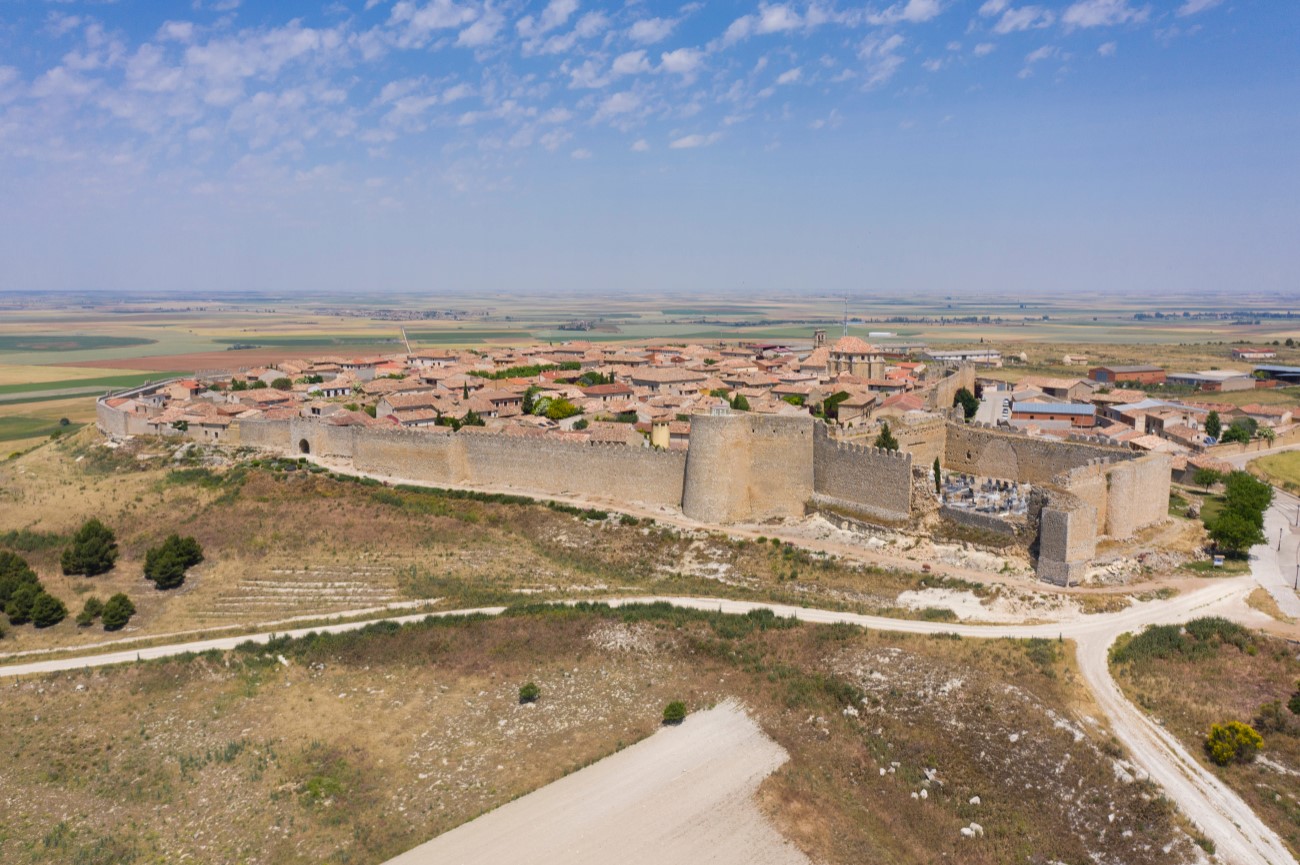
- Medina del Campo : Just 60km south of Valladolid is the town of Medina del Campo. Much bigger than Urueña (reaching 20,000 inhabitants), this town stands at 720 metres above sea level and has a long history. The most iconic site here is the 15th-century Castillo de la Mota, one of the most beautiful castles in Spain.
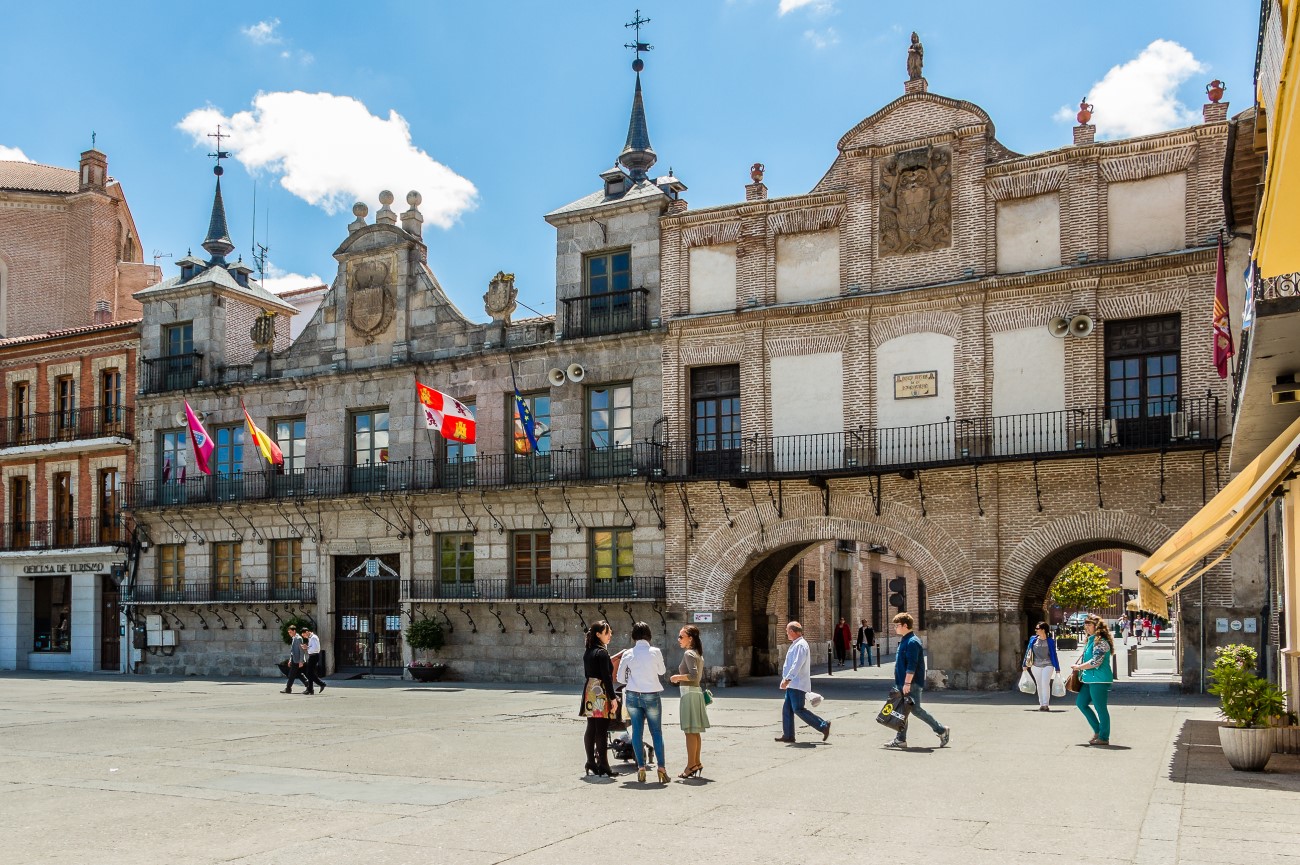
- Tordesillas: You might have heard the name of this town from the Treaty of Tordesillas, a treaty signed here in 1494 dividing the world between the Portuguese and the Spanish empires. This town is only a 35-minute drive from Valladolid. Its most iconic sites include the Church of San Antolin, the Monastery of Santa Clara and the Casas del Tratado.
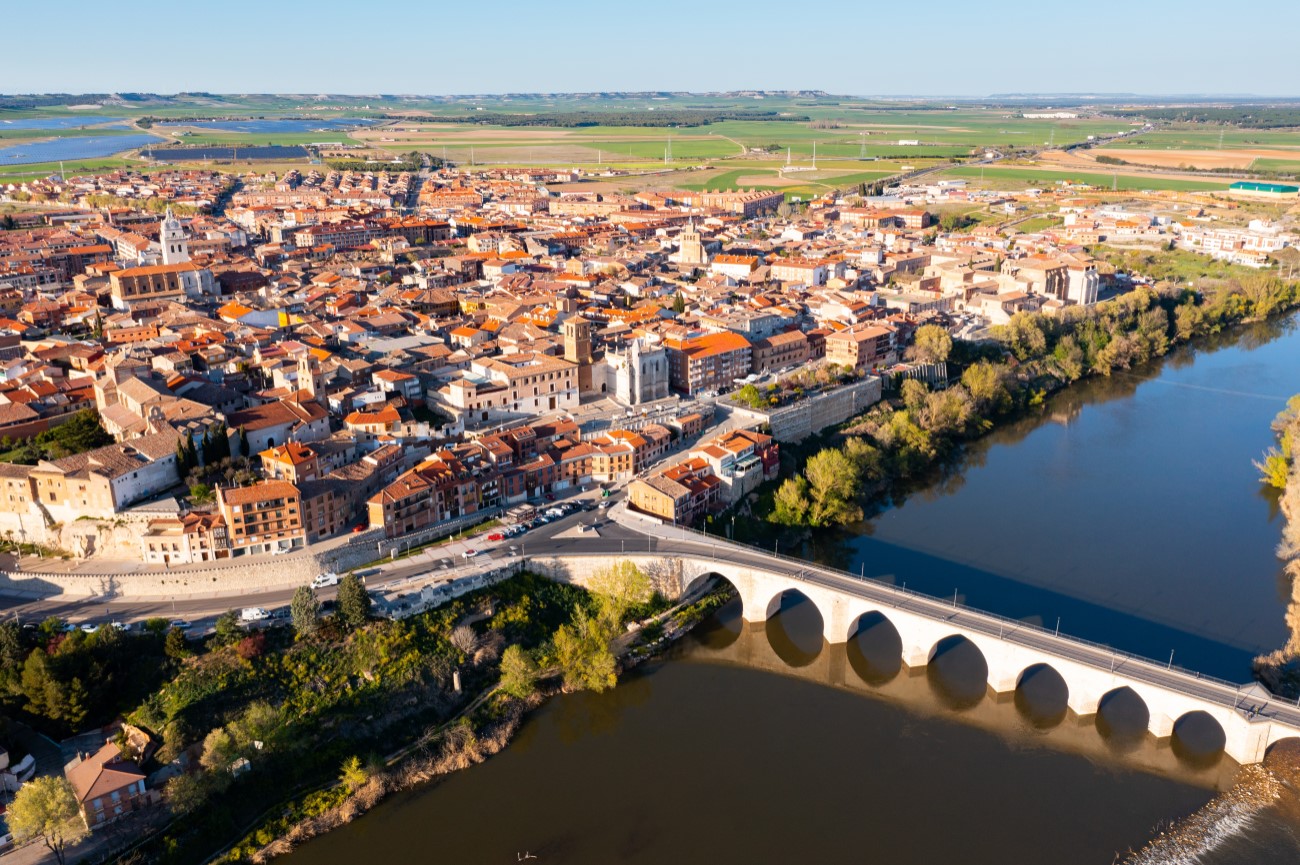
Top things to do with kids in Valladolid
Valladolid is a small city, making it easy to explore with kids. Families will enjoy a visit to the Valladolid Science Museum. Set on an old flour mill, this interactive museum is spread across multiple floors dedicated to scientific discoveries, from chemical elements to fossil fuels and climate change. The space also includes a planetarium, where you can watch regular projections. Other kid-friendly sites include the Parque Campo Grande. Stretching for 115,000 square metres, the park offers plenty of shady paths and a lake where you can go boating.

In the summer, you can relax by the Playa de las Moreras set along the banks of the Pisuerga river. This urban beach was created in the 1950s and is still active today. Kids can play in the sand and enjoy a swim in the calm waters. Afterwards, you can take a stroll along the attached Parque de las Moreras.
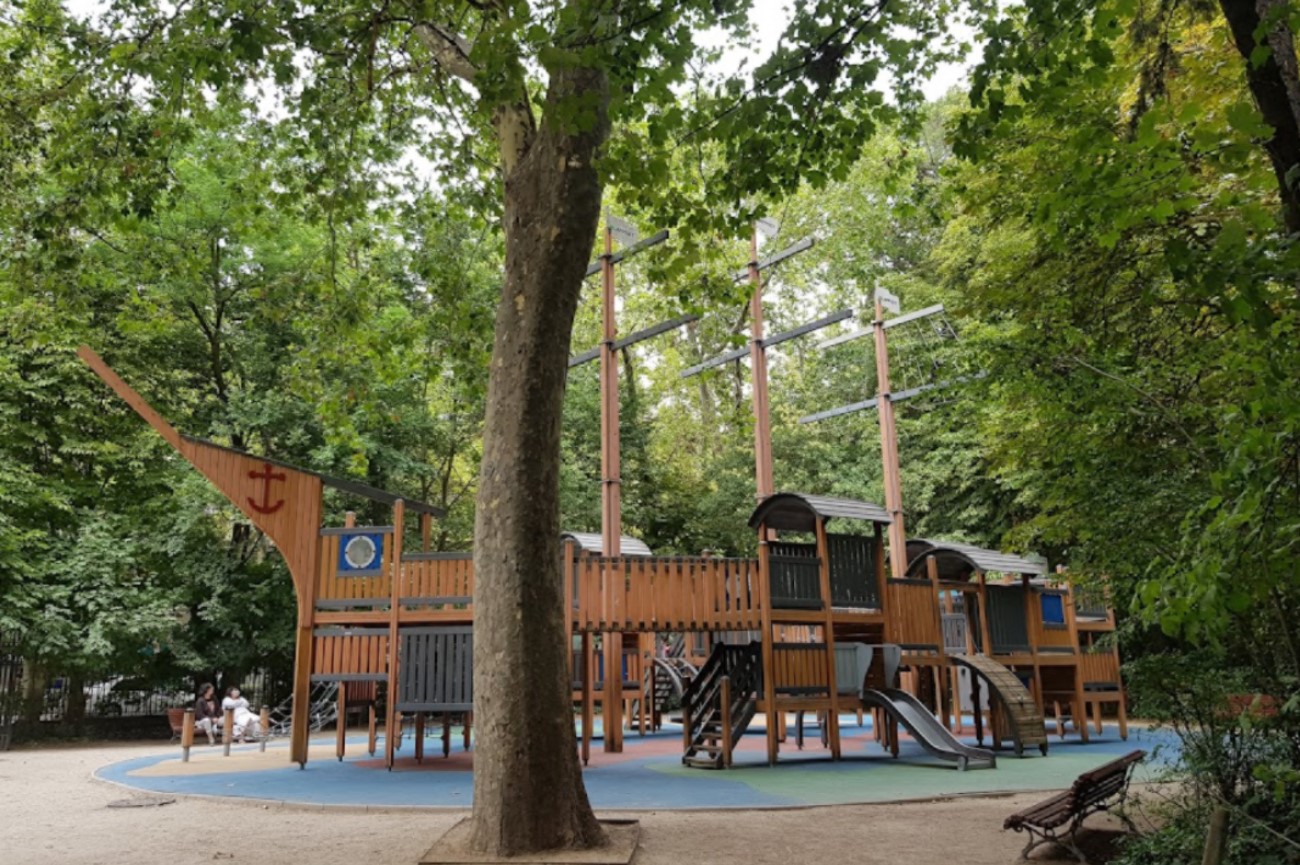
Where to eat in Valladolid
Valladolid offers a diverse cuisine. One of the main specialities here is the lechazo (baby lamb). The meat is slowly roasted in a wood oven and paired with salad. Other iconic dishes include the tortilla de chorizo, the patatas a la importancia (potatoes coated in egg and flour, fried and bathed with a broth) and garlic soup, usually served in winter. Below are some of the best places to eat in Valladolid:
- La Parrilla De San Lorenzo: Housed within a 16th-century monastery, this restaurant stands out with its stone walls and ceiling frescoes. It focuses on high-end Castilian cuisine, including steaks and hearty stews. It's the ideal place to sample roasting lamb and suckling pig. Make sure to reserve ahead.
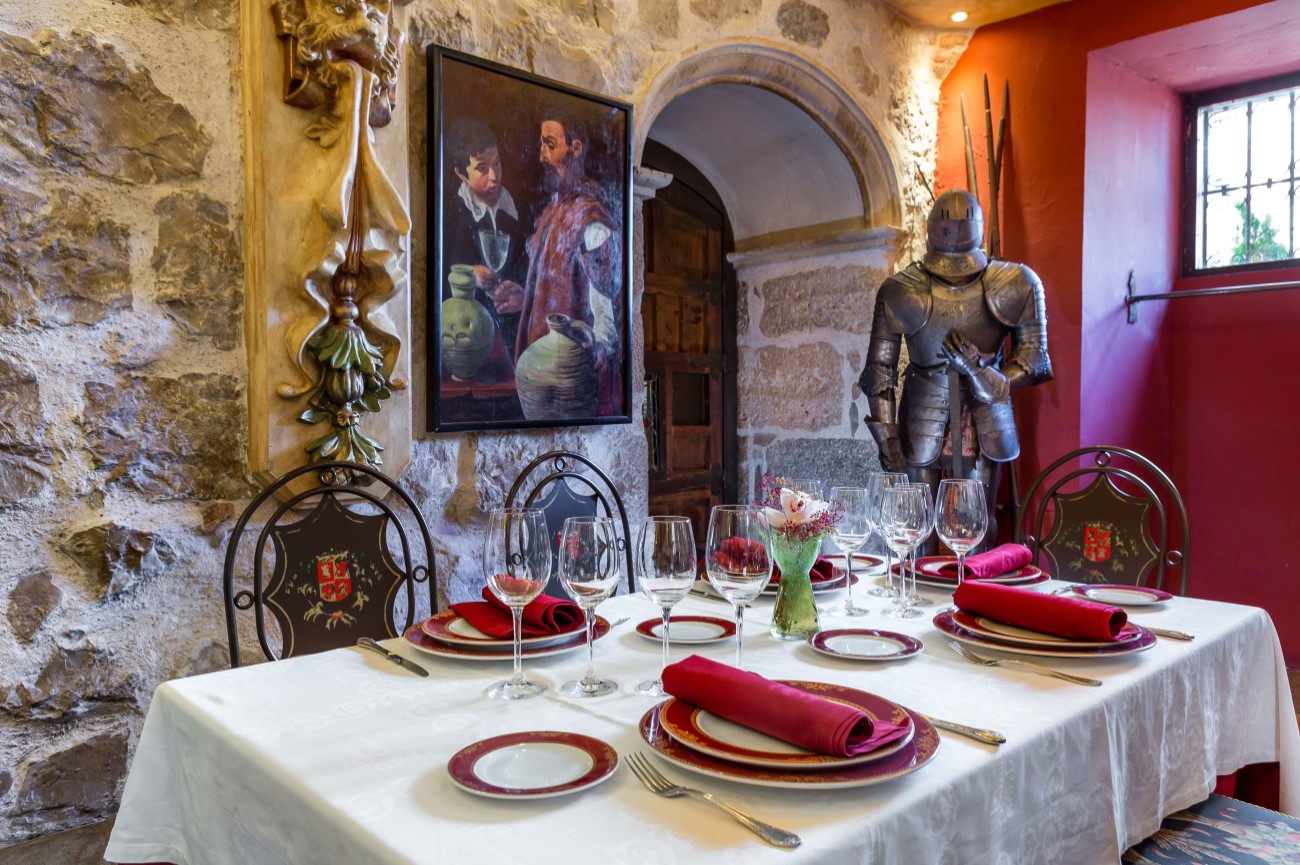
- MQ Martín Quiroga: It's worth booking a table to sample a meal at this tiny gastrobar. There is no fixed menu. Dishes change according to what is in season and available at the local market.
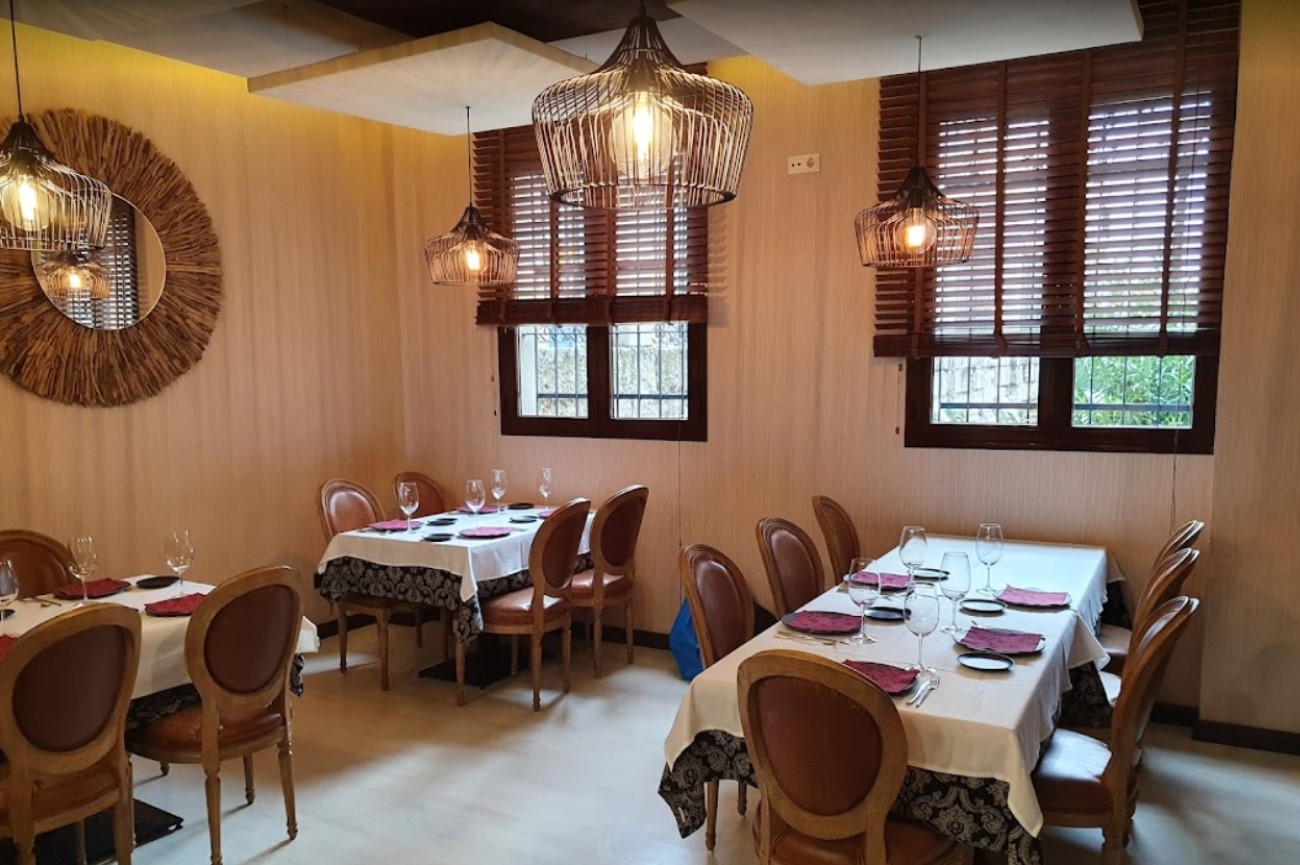
- El Corcho: Located on Calle de Correos, a street lined with tapas bars, this place stands out with its delicious toasts featuring a variety of toppings. The croquetas are a must-try.
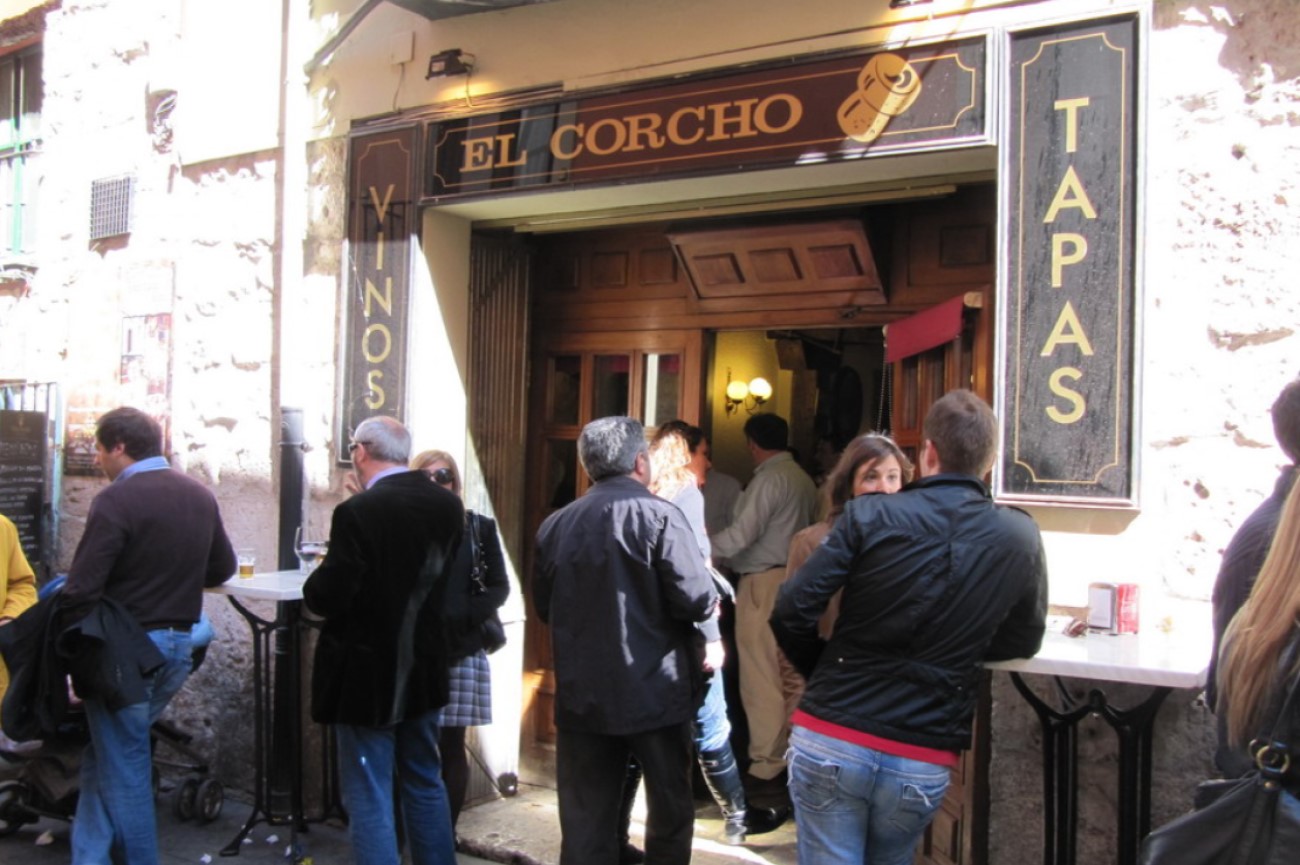
Where to stay in Valladolid
- AC Hotel by Marriott Palacio de Santa Ana (5 stars): Located on the outskirts of Valladolid, this chic hotel is housed inside an 18th-century convent. The rooms have minimal decor, with some overlooking the park. Guests also have access to a traditional restaurant, a fitness room, a pool and a Turkish bath.

- Hotel Nexus Valladolid (4 stars): This modern boutique hotel is close to many of the city's main attractions, including the Plaza Mayor and the Church of Santa María de la Antigua. It features 27 rooms, some of which offer views to the church. Additionally, guests can take advantage of the wine bar offering regular tastings.
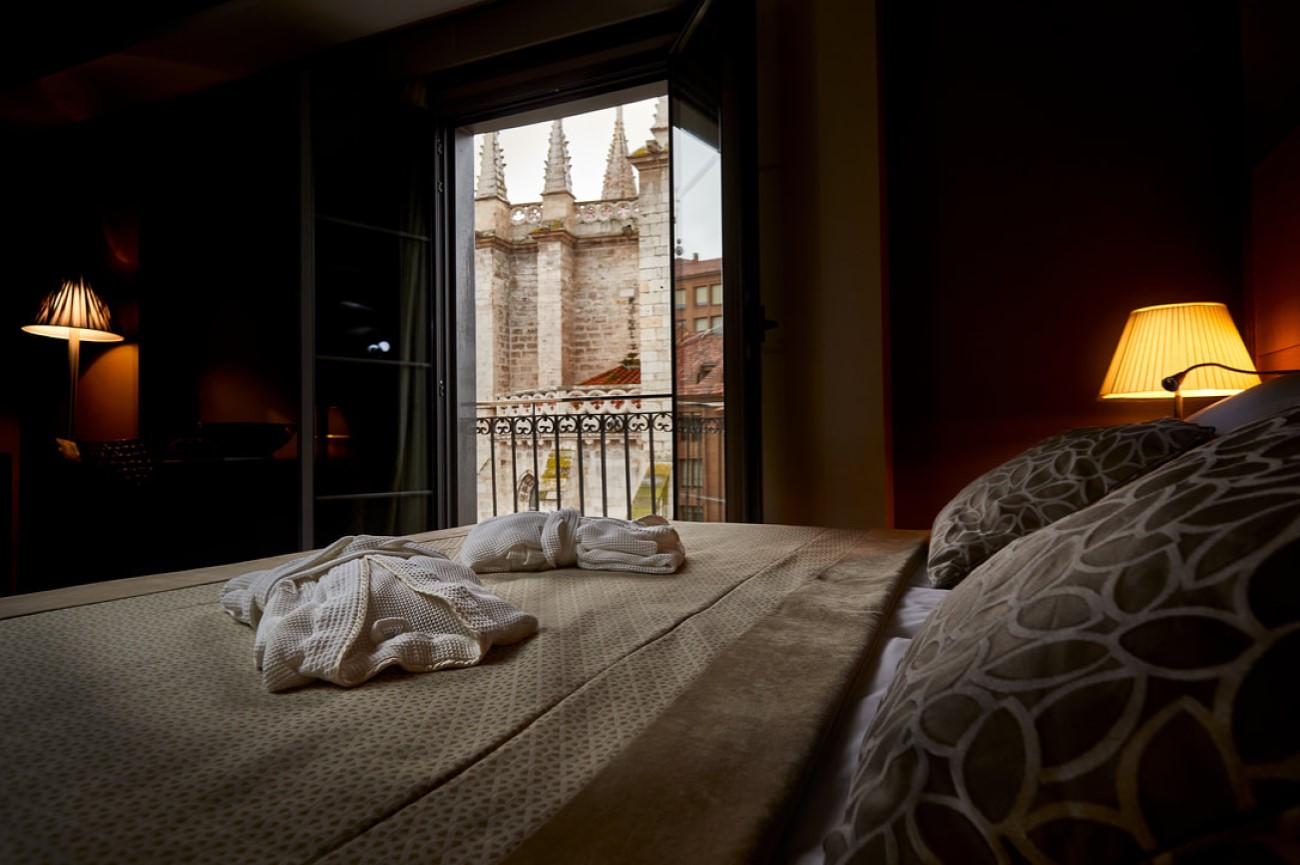
- Hotel Recoletos (4 stars): Just a few minutes from the Parque de Campo Grande, this four-star hotel stands out with its cosy courtyard and gardens. There's a restaurant on-site serving breakfast, plus a bar and meeting rooms.
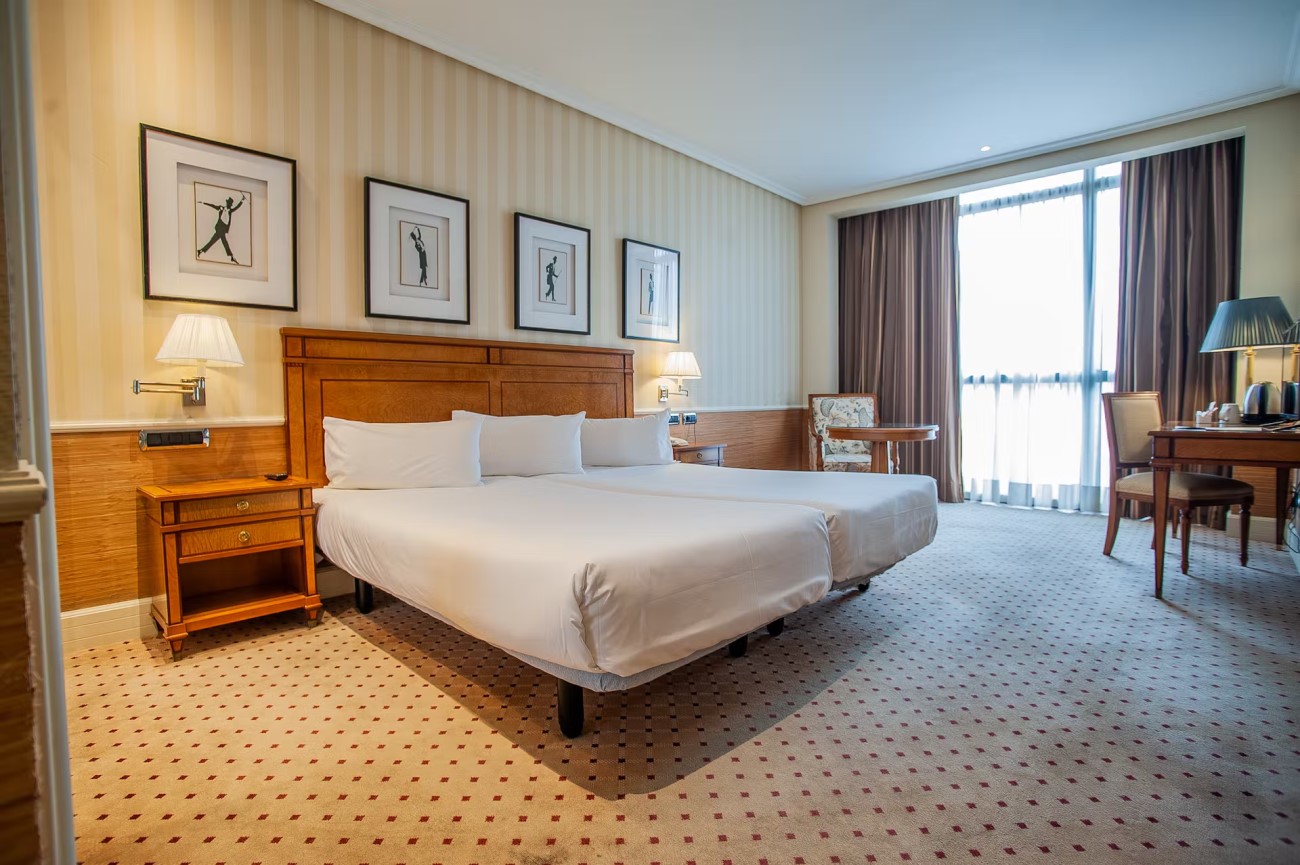
Best time to visit Valladolid
April to October is the best time to visit Valladolid. Between July and August you'll catch the driest and hottest weather. This is also when most tourists come to visit. April and October have the highest rainfall, but the temperatures are still mild enough to explore the city. January is the coldest month here.

Valladolid Festivals
- Holy Week: Like in most of Spain, the Holy Week is one of the most important events of the year, and Valladolid is no exception. Semana Santa is celebrated between March and April, depending on the first full moon in spring, with processions of famous altarpieces taking over the city's streets.
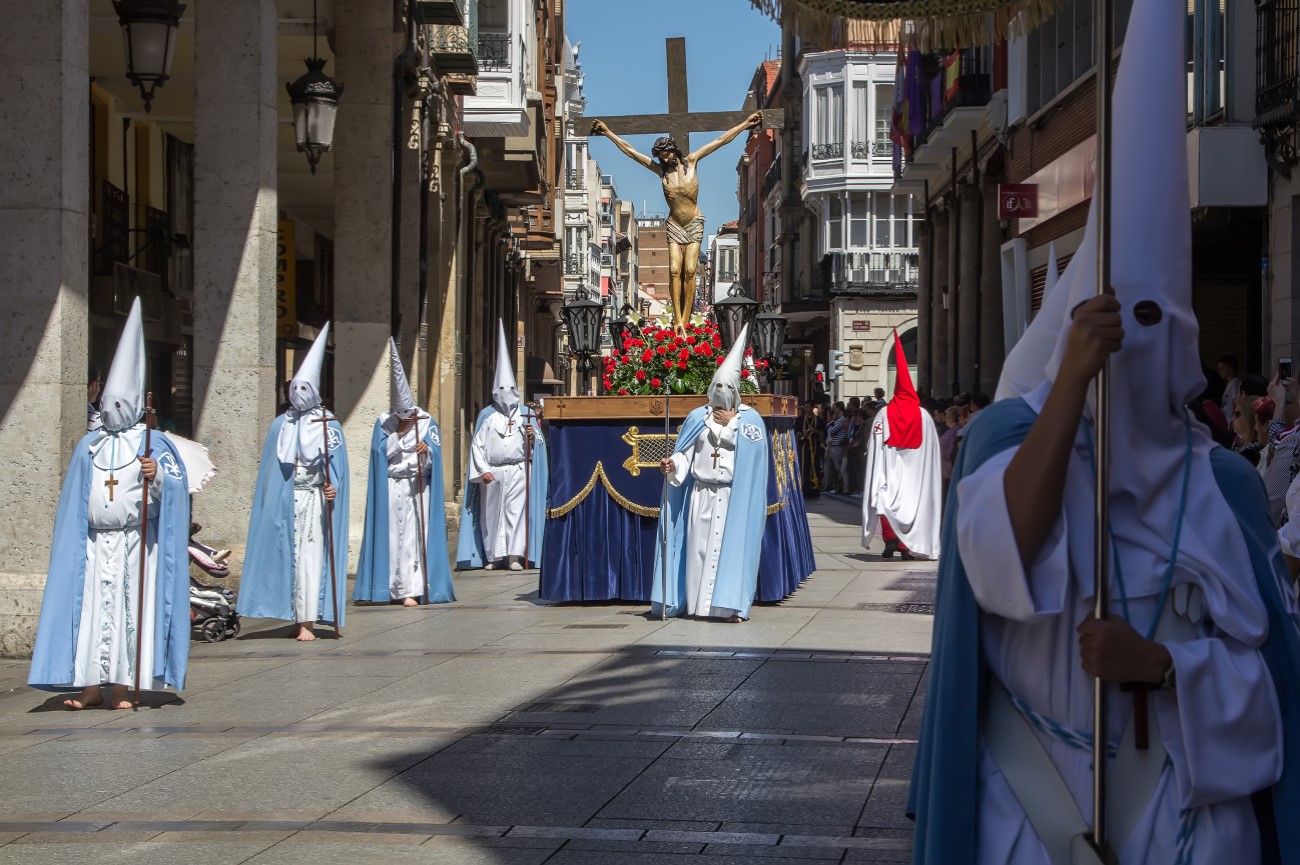
- Our Lady of San Lorenzo: Starting on the first Friday in September, the fiestas of Our Lady of San Lorenzo begin with parades of various associations (peñas) and the mayor’s opening speech. During the day, you can explore the local fair and stock up on snacks sold in the street stalls, while the evenings are full of concerts and shows. The whole thing lasts a week.
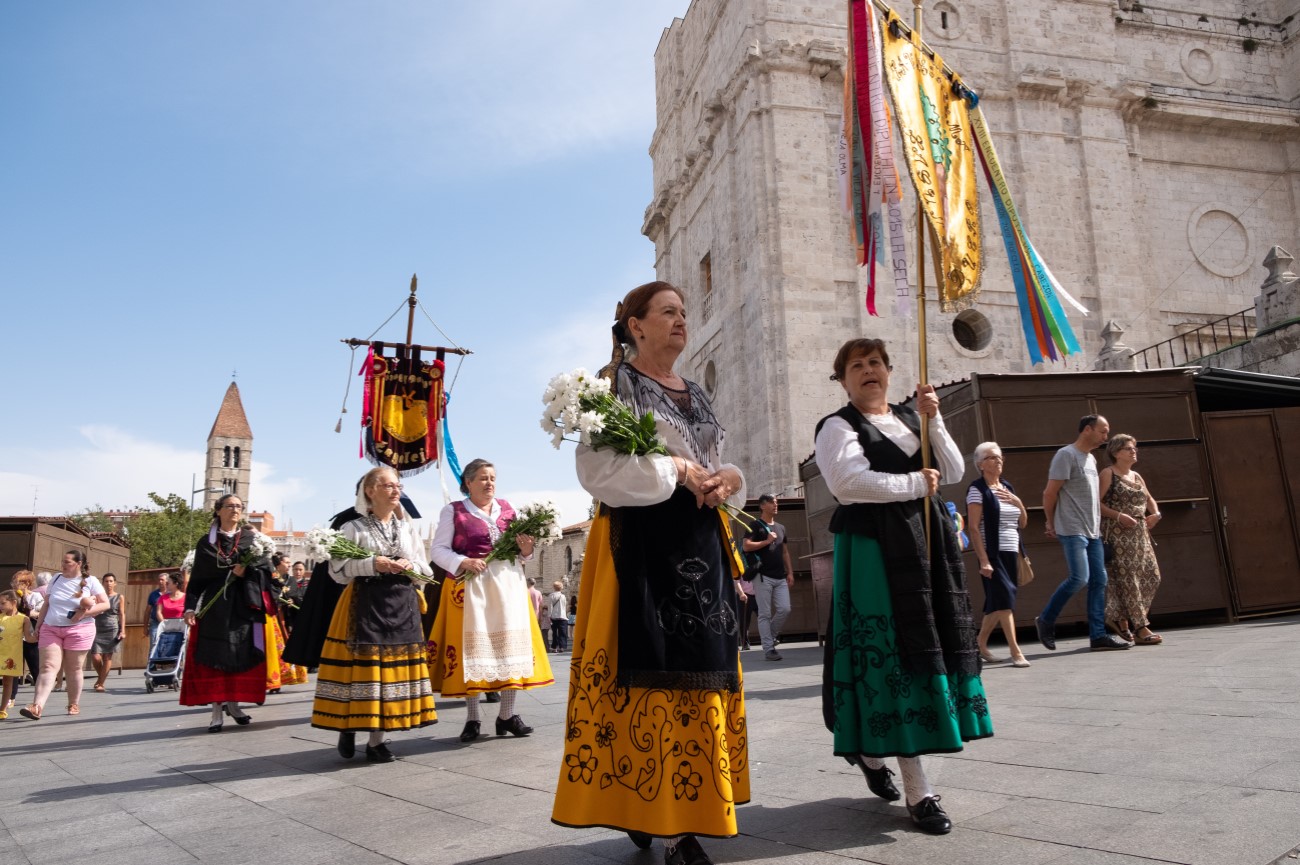
- Valladolid International Film Festival: The Valladolid International Film Festival (Seminci) is among the most well-established film festivals in Europe. It starts at the end of October with screenings held at the Teatro Calderón.
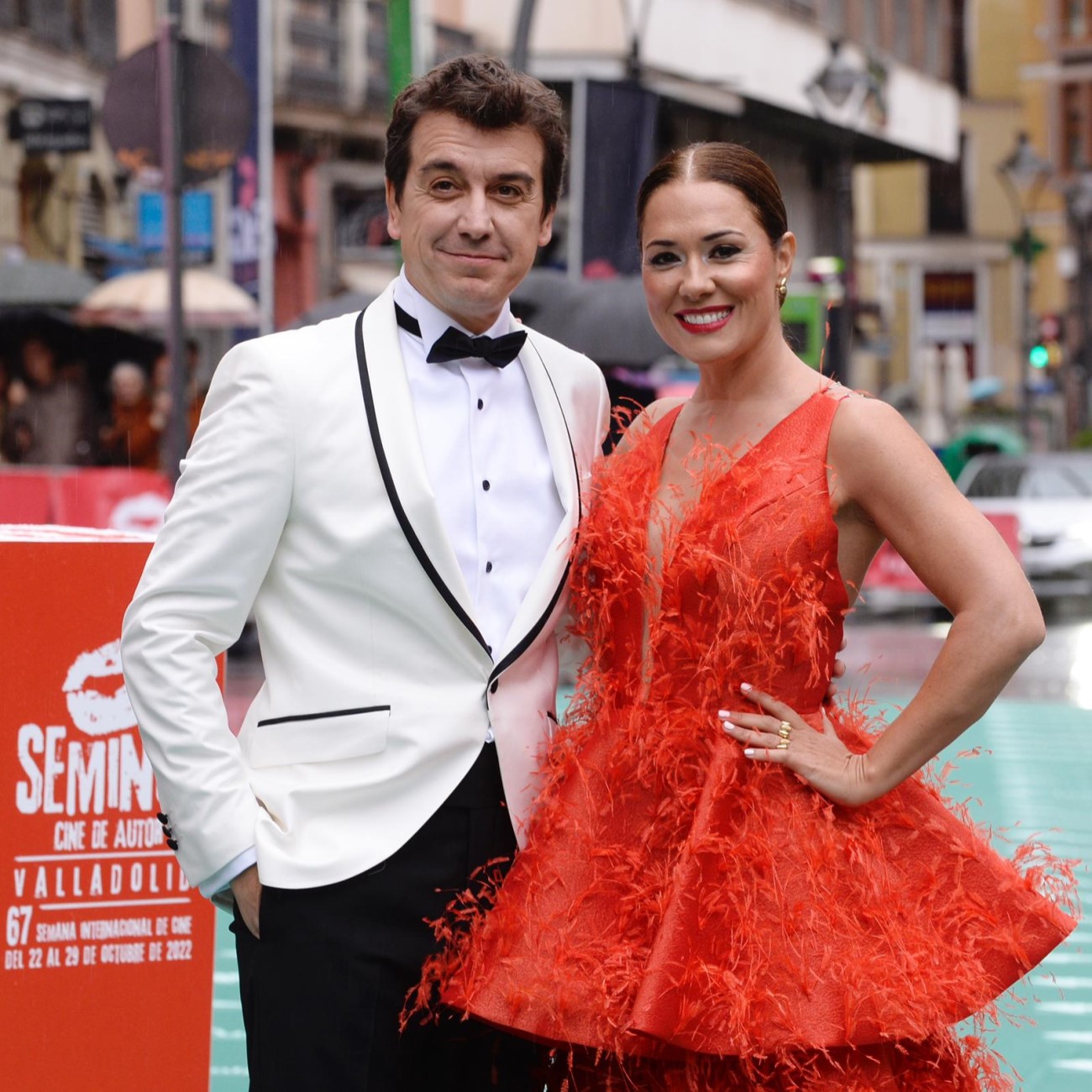
At our office
Send an inquiry
Return to Spain tours

Iberian Escapes and Algarve Lifestyle are the brand names of APCS Lda and Travel Iberica Ltd. We are a travel agency fully authorized by Turismo de Portugal RNAVT / 6867
PRIVACY POLICY
NEWSLETTER SIGN UP
© 2024 iberian-escapes.com. All rights reserved.
You are using an outdated browser. Please upgrade your browser .

- Valladolid travel guide
- What to do?
- Where to go?
- Transportation
- Activities & Attractions
Welcome to Valladolid
Valladolid is the administrative capital of Castilla y León, and a city known by its class, sophistication and architectural diversity.
Less than two hours by car from Madrid, it is located in the western part of Spain and right in the heart of the Autonomous Region of Castilla y León, surrounded by the provinces of León, Zamora, Salamanca, Ávila, Segovia, Soria, Burgos and Palencia.
Valladolid played a prominent role in the history of Spain, it was here that King Fernando and Queen Isabel married in 1469 and it served as venue of the Spanish Court in several occasions during the Middle and Modern Ages. It was also a meeting point for explorers, such as Fernando de Magallanes who came here to discuss their navigation plans, it was the city of residence of Miguel de Cervantes, author of Don Quijote and the place where Christopher Columbus died. Valladolid was a city of Kings, Queens and prominent figures of the Spanish history. History has left an imprint in the city which is visible in its architectural diversity.
Today it is one of the largest cities in Castilla-Leon with a population of around 500.000 inhabitants. It has an extensive network of roads, good services and a lively atmosphere with plenty of artistic and cultural activities. It is a perfect place for shopping as well as for relaxing with plenty of charming cafés, terraces, and excellent hotels.
Valladolid has an international airport, Villanubla, served by air companies such as Ryanair, Lagunair, Iberia and Air France and it will be one of the new destinations for the Spanish speed railway with the project of a line between Valladolid and Madrid.
The city looks to the future with new projects such as the Museum of Spanish Contemporarty Art “Patio Herreriano”, the Science Museum. New administrative infrastructures such as the Courts of Castilla y León renew its political influence in the 21st century Spain.
Valladolid has a continental climate with cold winters and hot summers, its average temperatures throughout the year are 16 Celsius degrees maximum and 6 minimum. It is not a very rainy region, rain being more frequent in autumn and spring.
Don’t miss a visit to Valladolid, walk trough its streets, discover its monuments, enjoy its gastronomy and explore its artistic heritage. Your journey begins here!
Best hotels in Valladolid
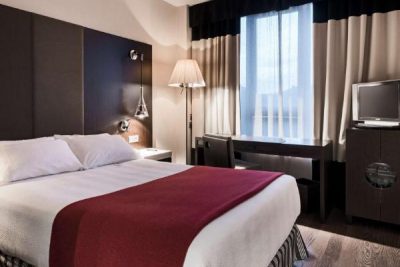
NH Valladolid Bálago
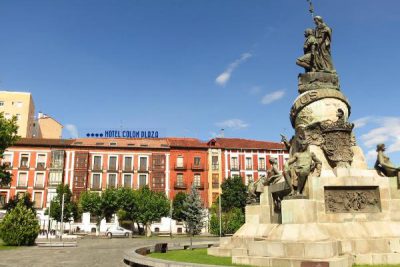
Hotel Colón Plaza
See more hotels in Valladolid
Activities & Attractions in Valladolid
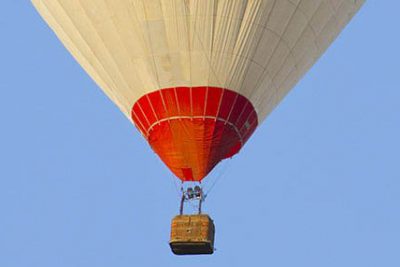
Valladolid Hot Air Balloon Ride
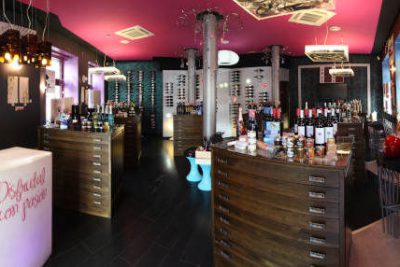
Cheese and Wine Tasting at Señorita Malauva
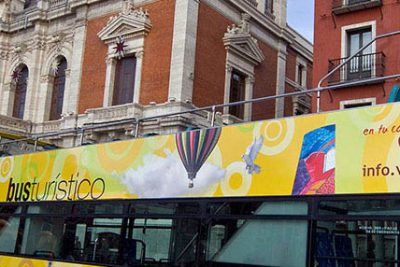

Valladolid Tourist Bus & Card
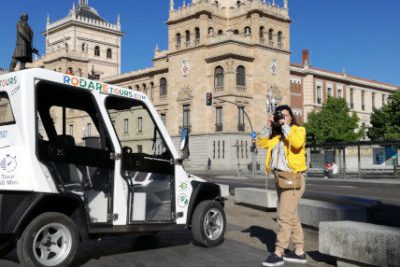
Valladolid Electric Car Tour
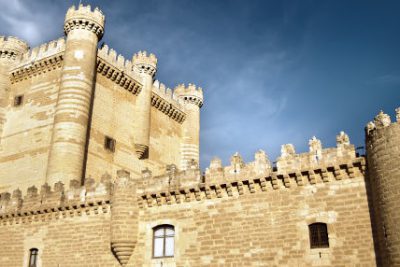
Fuensaldana Castle Ticket
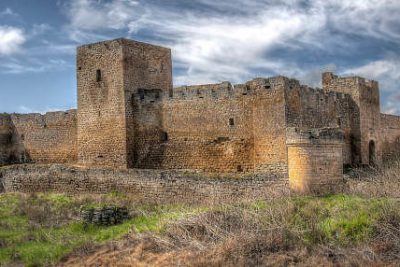
Trigueros del Valle Enchanted Castle Ticket
Car rental in valladolid.

Large car rental in Valladolid

Premium car rental in Valladolid

Family car rental in Valladolid
Show offers
Valladolid and around
Book your individual trip , stress-free with local travel experts
Select Month
- roughguides.com
- castilla-y-leon-and-la-rioja
- valladolid-and-around
- Travel guide
- Itineraries
- Local Experts
- Travel Advice
- Accommodation
Plan your tailor-made trip with a local expert
Book securely with money-back guarantee
Travel stress-free with local assistance and 24/7 support
Maureen C, USA
The hotels were fabulous and we were greeted and treated with care. The itinerary proved outstanding. The drivers were wonderful. He was always on time, ma...
Valladolid, at the centre of the meseta and capital of the Castilla y León region, ought to be dramatic and exciting. Many of the greatest figures of Spain’s Golden Age – Fernando and Isabel, Columbus, Cervantes, Torquemada, Felipe II – lived in the city at various times, and for five years at the turn of the seventeenth century it vied with Madrid as the royal capital. It had wealth and prestige, yet modern Valladolid – a busy, working city of 400,000 – lost much that was irreplaceable, as many of its finest palaces and grandest streets were swept away during subsequent centuries. Nonetheless, much that remains is appealing in a city centre of restored squares and gleaming churches, including a series of excellent art museums, one of which holds the finest collection of religious sculpture anywhere in Spain. While it doesn’t have the overriding beauty of Salamanca, or the stand out monumental presence of Burgos or León, Valladolid is an easy city to like – whether it’s the pretty shaded gardens of the Campo Grande, or the student bars lined up under the shadow of a majestic Gothic church. The best time to get a sense of the city’s historic traditions is Semana Santa (Holy Week), when Valladolid is host to some of the most extravagant and solemn processions in Spain.
Footsteps of the famous
Museo nacional colegio de san gregorio.
Outside the city, there are easy side-trips to the handsome small towns of Tordesillas and Medina del Campo, both now on the quiet and sleepy side but, like Valladolid, also boasting significant histories.
Travel ideas for Spain, created by local experts

Andalucía Explored
Discover the best of Andalucía's breathtaking palaces, churches, museums, vineyards, and more, as you travel through spectacular scenery dotted with pueblos blancos and bordered by rugged mountains and coast en route to Granada, Seville, Ronda and Jerez de la Frontera.

A culinary experience in Seville
Explore the cuisine and surroundings of Seville in Andalucia. From Iberian ham over sherry wines to the production and secrets of olive oil, this tour is an ideal weekend getaway. Decide yourself if you prefer a rental car or a chauffeur-driven car to explore the beauty of Andalucia.

Spanish Honeymoon
Discover Andalusia, starting with the cultural city of Seville, then on to Córdoba and Granada, home of the stunning Alhambra Palace. Next you'll visit Granada and the Albayzin Arab quarter, then enjoy a stunning hot-air balloon ride, before ending your trip with a luxury boat trip from Marbella!
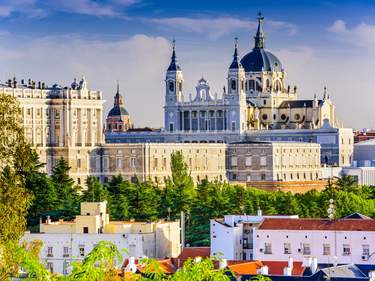
Made for Madrid
Take to the Spanish capital for art, culture and a taste of life in the city, Madrileño-style. Explore age-old churches and pretty plazas, stroll through the lovely Buen Retiro Park and visit captivating Toledo. Then, come sundown, discover the city's vibrant barrios and lively nightlife.
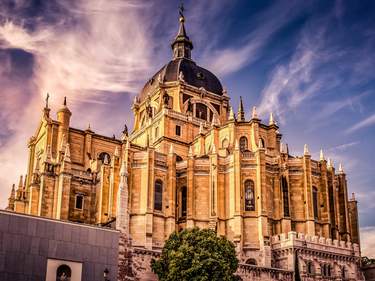
A Madrid getaway
Spend four days discovering the wonders of Spain's capital Madrid: from fascinating museums like El Prado and Reina Sofia over exploring unknown corners with your private guide to a day trip to the surroundings, this itinerary packs the best of Madrid.

Hidden Spain - From Barcelona to Basque Country
Do you want to explore highlights in Spain while staying in nature at the same time? Look no further. Start your Spanish adventure in Barcelona before heading off to the mountains - drive your rental car to Andorra and further on to Basque Country. Decide between driving yourself or guided tours.
Felipe II was born (1527) in Valladolid, and in other circumstances perhaps his home city might have become the permanent Spanish capital, and not Madrid. As it was, Valladolid was only briefly the capital (1601–06), but Felipe’s birthplace, the Palacio de los Pimentel (c/Angustias), has a memorial plaque, and his statue is over the way in Plaza San Pablo. Another surviving palace, Palacio de los Viveros (c/Ramon y Cajal), is where the royal teenagers Fernando and Isabel married in 1469, later to be the “Catholic Monarchs” of a new, triumphant Spain; while the widely travelled Miguel Cervantes spent a few years in the city, too – what’s thought to have been his house (Casa Cervantes, just off c/Miguel Iscar) is now a small museum. However, the city is perhaps proudest of Christopher Columbus (Cristóbal Colón), who died here in 1506 – Valladolid devoted an entire year in 2006, and spruced up the old town, to celebrate the five-hundredth anniversary of the old mercenary’s demise, and there’s a replica of the house he died in, known as Casa Colón, on c/Colón.
The most extraordinary sculpted facade of all in Valladolid is that of the Colegio de San Gregorio, adorned not just with coats of arms and crowned lions, but sculpted twigs, naked children clambering in the branches of a pomegranate tree and long-haired men carrying maces. Considered to be from the workshop of master sculptor Gil de Siloé, it’s very much like icing on a cake – Jan Morris, for one, was convinced that the flamboyant facade must be edible. The collegiate church was built by the Bishop of Burgos – Chancellor of Castile and confessor to Queen Isabel – as a theological college, and was richly endowed, most obviously with a gleaming two-tier courtyard of twisted stone columns, and an upper gallery that’s a sculpted Plateresque flight of fancy of heraldic, mythic and regal symbols. Inside, too, the building has been majestically restored and now contains the unmissable religious art and sculpture collection of the Museo Nacional.
The stunningly presented collection from the sixteenth to eighteenth centuries includes some of the most brilliant works of the Spanish Renaissance. Set in majestic galleries on two floors, ranged around the San Gregorio courtyard, the hugely expressive statues, sculptures, retablos and other artworks were often commissioned directly for churches and monasteries, and it’s rare to see such vibrant pieces at these close quarters – while if you look up, almost every gallery has its own antique coffered ceiling of gilt and painted wood, transplanted here from other religious foundations.
Sixteenth-century artists such as Alonso Berruguete (1490–1561), Diego de Siloé (1495–1565) and the Frenchman Juan de Juni (1507–77) adapted the classical revival to the religious intensity of the Spanish temperament, and the results are often magnificent and sometimes quite beautifully brutal: weeping crucifixion wounds, severed heads, cadaverous bodies, agonized faces and rapt expressions fill the galleries. The dissolved Valladolid monastery of San Bento el Real provides two pieces that are typical of the richness and power on display: its retablo mayor has a life-sized St Benedict almost striding out from the surrounding scenes of his miracles, while in an upper gallery sit the intricately carved and painted choir stalls, preserved in their jaw-dropping entirety.
Palacio de Villena
Across the street from the San Gregorio facade stands the Renaissance Palacio de Villena, used as the museum’s centre for temporary exhibitions and public events. It also contains one final, and extraordinary, flourish, namely the so-called Belén Napolitano or Nativity tableau – in an eighteenth-century Neapolitan street, between the hanging laundry, itinerant musicians and fruit sellers, the three Wise Men troop towards the manger on camels.
Discover more places in Spain

- Travel Guide Morocco
- Travel Guide Namibia
- Travel Guide South Africa
- Travel Guide China
- Travel Guide India
- Travel Guide Indonesia
- Travel Guide Japan
- Travel Guide Laos
- Travel Guide Malaysia
- Travel Guide Myanmar (Burma)
- Travel Guide Nepal
- Travel Guide Philippines
- Travel Guide Singapore
- Travel Guide South Korea
- Travel Guide Sri Lanka
- Travel Guide Taiwan
- Travel Guide Thailand
- Travel Guide Australia
- Travel Guide Fiji
- Travel Guide New Zealand
- Travel Guide Belize
- Costa Rica Travel Guide
- Travel Guide Cuba
- Travel Guide Guatemala
- Travel Guide Honduras
- Travel Guide Jamaica
- Travel Guide Nicaragua
- Travel Guide Panama
- Puerto Rico travel guide
- Travel Guide Trinidad and Tobago
- Travel Guide Albania
- Travel Guide Austria
- Travel Guide Belgium
- Travel Guide Bosnia-Herzegovina
- Travel Guide Bulgaria
- Travel Guide Cyprus
- Travel Guide Czechia (Czech Republic)
- Travel Guide Denmark
- Travel Guide England
- Travel Guide Estonia
- Travel Guide Finland
- Travel Guide France
- Travel Guide Germany
- Travel Guide Greece
- Travel Guide Hungary
- Iceland Travel Guide
The Rough Guides to Spain and related travel guides
In-depth, easy-to-use travel guides filled with expert advice.

Find even more inspiration here

Planning your own trip? Prepare for your trip
Use Rough Guides' trusted partners for great rates
written by Rough Guides Editors
updated 27.04.2021
Ready to travel and discover Spain?
Get support from our local experts for stress-free planning & worry-free travels.
- Where to stay
- Travel advice
- Mexican Edition
- German Edition
- Italian Edition
- Turkish Edition
- Portuguese Edition
- Order back issues
- Login / Register
Valladolid - Spain
An hour from Madrid, this elegant Spanish city offers glorious art, sprawling parks and historic architecture, plus hearty dishes and great local wines. Imogen Lepere explores
- Where to Stay
Where to eat and drink
Travel information.
Sophisticated Valladolid offers an authentic Spanish city experience in the country’s traditional Catholic heartlands. Despite the fact it is a name few travellers are familiar with, it has hosted some key events in European history: Isabella of Castile and Ferdinand of Aragon, the great unifying monarchs, were married here; Philip II – creator of the Spanish Armada – was born here; and Christopher Colombus died here. While only an hour by high-speed train from Madrid, the city’s palace-lined plazas have a timeless, mystical quality to them, helped by their association with the birth of the Castilian language. The celebrations during Holy Week (5-12 April) are among the most colourful in the country, with Good Friday’s Passion Procession seeing priceless baroque statues paraded through the streets and the city’s 21 brotherhoods making proclamations from horseback.
Crouching in the centre of the city, the cathedral catedral-valladolid.com is a mishmash of styles and remains only 45 per cent complete – despite building having begun more than 500 years ago. Take the lifts and stairs to the top of the bell tower to orientate yourself. A short walk away, the ornate National Sculpture Museum culturaydeporte.gob.es is filled with 17th-century statues, works by masters like Alonso Berruguete and altar pieces plundered from convents that were forced to close across the country during the 1800s. Often likened to Shakespeare because he died the same week as the bard and produced works of equal influence, Miguel de Cervantes lived in Valladolid when the first part of Don Quixote was published. Visit his house museocasanataldecervantes.org with its humble wooden writing desk still in place, then retire to the Campo Grande Park to reread the masterpiece. This triangular Eden luxuriates over 100,000 sq m and has an aviary, pheasant sanctuary and dovecote dotted among its flowers and fountains. To enjoy the balmy April weather, head to Playa de las Moreras, a man-made beach with unspoilt golden sands on the Pisuerga River that’s perfect for long strolls.
Where to stay
There are plenty of traditional, intimate hotels to choose from here, but they tend to share common features, as if imagined by the same moustached Forties designer: dark furniture and heavy curtains, historic settings and warm, if slightly formal, hospitality. AC Hotel Palacio de Santa Ana marriott.com – a converted monastery perched on the banks of the Pisuerga, is an exception. Rooms are generous and contemporary, with black-painted shutters and polished floorboards, plus pretty gardens and a Turkish bath. Ideally situated next to the cathedral, Boutique Atrio Hotel hotelesvalladolid.com is a four-floor modernist house with cosy bedrooms, while its more elegant older sister, Colón Plaza Boutique Hotel hotelesvalladolid.com overlooks the Campo Grande. Or for haute cuisine feasts, try the restaurant of Meliá Recoletos melia.com which also boasts sizable rooms.
Valladolid’s food scene is as drenched in history as everything else in this city. Hare à la royale at El Trigo restaurantetrigo.com is as rich as one of Isabella I’s ermine-trimmed cloaks, while El Mercado de tu Vida mercadodelval.com has been selling everything from suckling pig to local sobao bread since the 1800s. The area is famous for its hearty meat dishes and La Parrilla de san Lorenzo laparrilladesanlorenzo.es does a mean line in kid goat served with red wines from the Ribera del Duero. Cerveceria el Trebol’s street tables are ideal for a well-poured caña of beer and langoustine lunch, Señorita Malauva vinotecamalauva.com is a buzzy spot in which to taste local wine paired with sheep’s cheese and Los Zagales Tapas loszagales.com does a creative black bread take on the classic morcilla (blood sausage).
Time running out?
Combine wellness with wine at Abadía Retuerta LeDomaine, a spa hotel that offers vinotherapy treatments – it’s well worth the 30-minute drive. abadia-retuerta.com
Currency is the euro (EUR). Time is 1 hour ahead of GMT. There are no direct flights. Flight time from London to Madrid is 2 hours 25 minutes, from where the train takes 1 hour.
Getting There
Iberia flies from London Heathrow to Madrid-Barajas Adolfo Suárez Airport. iberia.com Vueling offers flights to Valladolid from London Gatwick with a short layover in Barcelona. vueling.com
Discover Valladolid is the official tourist board and provides essential travel tips, plus a wealth of accommodation, restaurant, and event information. valladolidturismo.com
Average daily temperatures and rainfall
Get premium access to all the latest content online.
Subscribe and view full print editions online... Subscribe

Don’t miss these things to do in Valladolid during your stay
Be tempted by these things to do in Valladolid and book a Spanish city break to discover one of Spain’s most captivating cities
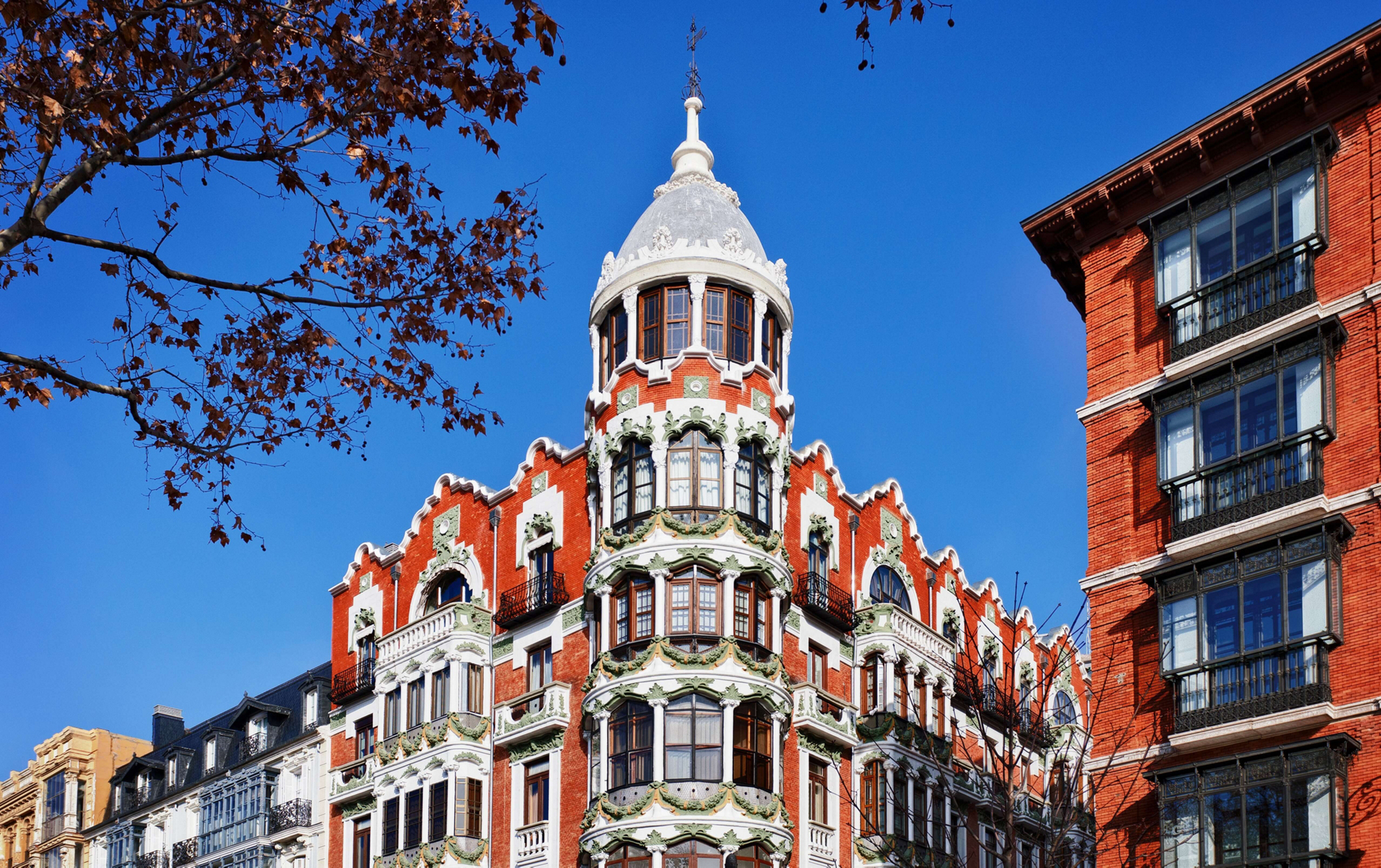
Not to be confused with the destination of the same name in Mexico, Spain’s Valladolid offers an enchanting mix of old-world charm, delicious gastronomy and tonnes of culture to get your teeth into. If you are looking to enjoy a weekend getaway but you are not drawn to the beachy vibes of Barcelona and Madrid’s hectic pace of life is not your groove, opt for the historical city of Valladolid, Spain’s old capital. Located in the heart of Castilla y León, just north of Madrid, this area is famous for the Pisuerga River and its rich array of Medieval and Gothic architecture. But, it is also worth shouting about its green credentials since it has been awarded a European Mission 100 Smart and Climate Neutral Cities seal. Get ready to explore all the things to do in Valladolid and start planning your next city break.
Interesting facts about Valladolid, Spain
We all know that Madrid is the Spanish capital, yet few know that Valladolid took this title twice during Spain’s history. The first time was during the reign of King Charles I in the 16th century later from 1601 to 1606 under King Philip III . However, this is not Valladolid’s only claim to fame. The famous explorer Christopher Columbus died here in 1506 and Miguel de Cervantes lived and worked in Valladolid, even finishing his famous work Don Quixote during his time here. If that isn’t enough to tempt you to visit, let us dive into all the things to do in Valladolid during your stay.

The streets of Valladolid at sunset
These are the things to do in Valladolid for your to-do list
From late-night strolls through the Plaza Mayor to savouring traditional Spanish tapas washed down with local wine in an inner-city bar, discover all the best things to do in Valladolid.
Start your adventures in the Old Town
It is a universally known fact that the best way to get to know a new city is by getting lost in its winding streets. There is no better place to discover the things to see in Valladolid than the old town quarter. Allow yourself to float on the ebb and flow of people discovering the city and head towards key landmarks such as the Romanesque church of Santa María, or the impressive Casa del Príncipe.
Those interested in Spanish literature will want to pay a visit to the Casa Cervantes, the writer’s home
Those interested in Spanish literature will want to pay a visit to the Casa de Cervantes , the writer’s home. But, it is the Plaza de Zorrilla that will really steal your heart thanks to its eclectic mix of local shops and cute cafés where you can stop and watch the world go by in between exploring Valladolid’s things to see.

Plaza Zorilla in Valladolid’s Old Town
Plaza Mayor, a Valladolid sightseeing must-see
On the topic of photo-worthy plazas, Plaza Mayor is certainly a must-visit during your trip to Valladolid . It is the oldest Plaza Mayor in Spain and it has played witness to centuries of fun and adventure in Valladolid . Admire the imposing Renaissance and Baroque architecture that surrounds this 13th-century square and soak up the vibrant atmosphere in this central meeting point. The city’s town hall and an impressive clock tower are two landmarks of note at the Plaza Mayor.

Plaza Mayor, Valladolid
Visit Campo Grande, a Valladolid must-see
If you still have the energy to explore, head over to Campo Grande . This green oasis is a natural haven for those keen to escape the hustle and bustle. Lose yourself along the park’s winding trails through perfectly manicured gardens with their ornate fountains and peacocks roaming freely. There are over 100 different varieties of trees and flowers to admire and for those looking for romantic things to do , boating on the lake is a nice way to bond as a couple.

Campo Grande, Valladolid
Looking for culture? These are the best things to do in Valladolid
Apart from picturesque plazas and streets full of charm, there are so many cultural things to do in Valladolid during your stay. Here are some of our favourites to add to complete your travel plans.
The National Sculpture Museum, Valladolid
Art lovers , rejoice! With a collection that spans Renaissance art to works from the present day, this is one of the most important sculpture museums in Spain. As you stroll through the many halls inside the museum, you can witness the evolution of sculpture art unfold before your eyes. Avid sculpture fans will be transfixed by the polychrome wood designs from artists like Alonso Berruguete, Juan de Juni, Felipe Bigarny, Pompeo Leoni and Pedro de Mena - a stand-out sub-genre that will be sure to capture your imagination. Admire the vast range of over 4000 works of art on display but also take time to appreciate the building itself, the 15th century Colegio de San Gregorio, which is an Asset of Cultural Interest.

The Sculpture Museum, Valladolid
Explore the Valladolid Cathedral
Regardless if you are religious or not, a trip to the Cathedral is one of the unmissable things to do in Valladolid during your stay. Known colloquially as the “unfinished one” due to its half-completed appearance, the Cathedral of Our Lady of the Assumption dates back to the 16th century when Juan de Herrera designed it. Admire the eclectic mix of baroque, rococo and neoclassical styles as you explore both the interior and exterior of this impressive building.

Valladolid Cathedral
Add the Palace of Santa Cruz to your Valladolid to-do list
If you are on the hunt for Valladolid things to do, the Palace of Santa Cruz is a must. This is an example of Early-Renaissance architecture and is one of the oldest buildings to visit in the city.
The building is now being used by the University of Valladolid but you can still admire its ornate gardens, beautiful interior patios and splendid arched walkways
The building is now being used by the University of Valladolid but you can still admire its ornate gardens, beautiful interior patios and splendid arched walkways. If you are an art enthusiast, you will be thrilled to know that one part of the building is dedicated to the Arellano Alonso Museum of African Art - something to satisfy curious minds.

Palace of Santa Cruz, Valladolid
Enjoy some shopping in Valladolid, Spain
If you have some room in your suitcase, head to Pasaje Gutiérrez , just a stone’s throw from the cathedral. Declared a Cultural Asset, this is one of the only shopping galleries in Spain. It was built in 1886 but after a few decades, it fell into disrepair. Today, it has been restored back to its former glory and is now a bustling destination for locals and tourists keen to browse the latest fashion or enjoy a relaxing refreshment in one of its many cafés.

Pasaje Gutierrez shopping arcade, Valladolid
Valladolid’s attractions for foodies
If you have read any Valladolid travel guide , you will be well aware of its fierce foodie culture. Thanks to its prime location in the heart of Spain’s major wine region, you will be spoilt for choice when it comes to delicious fare when dining out.
One of the top things to do in Valladolid? Try the city’s pinchos
With so much exploring to do and that is without a Valladolid day trip to a neighbouring city, it won’t be long before you will be craving a bite to eat. While Bilbao may be famous for its pinchos culture, Valladolid wows residents and visitors year after year with its Pincho de Oro competition . Restaurants rustle up tasty tapas dishes with the aim of winning a prize. Famous competitors are establishments such as La Sepia, La Mejillonera or Los Zagales, the most awarded restaurant during the Pincho de Oro contest. Not sure what to try? The sirloin sandwich in a sauce is a traditional dish or for seafood lovers, the prawn toasts are the ideal accompaniment for a cold glass of white Spanish wine.
You don’t need to choose between a Ribera de Duero or a Rueda
Valladolid is home to four internationally recognised D.O., Denomination of Origin categories: Rueda, Ribera de Duero, Toro and Cigales . This makes it a fantastic place to visit if you are interested in a spot of wine tourism . Visit local wineries and discover the age-old processes involved in turning the grapes into wine. Or, simply enjoy a splendid selection of locally produced wines while you are relaxing on a bar’s sun terrace or dining in one of Valladolid’s restaurants.

Enjoy a glass or two of Spanish wine
Enjoy Valladolid’s nightlife
After a long day exploring the things to do in Valladolid, spend some time soaking up its vibrant nightlife. Whether you are looking to enjoy a romantic meal out for two, quiet drinks or a raucous night out on the town, Valladolid offers something for all tastes and ages. Head to the areas of Plaza Coco or San Miguel , passing through Cantarranas and Paraíso along the way and take a look at the various trendy drinking spots to choose from.

Please try modifying your search
- All hotels - 180 hotels
España (all) - 81
Select your dates (optional)
This hotel has a maximum occupancy per room of people
Unfortunately, we do not have availability for this distribution.
We suggest splitting guests into more rooms and updating your search.
Do you have a promotional code?
You get a discount

Suscríbete a la newsletter de Barceló Hotel Group para no perderte nada
Ofertas, promociones especiales, novedades…
Acepto y confirmo que he leído la Política de Privacidad *
Acepto que Barceló Hotel Group pueda enviarme comunicaciones comerciales por cualquier medio sobre productos o servicios de Barceló Hotel Group*
Top 10 Best Things to Do in Valladolid, Spain
Valladolid tourist spots, activities, and best places to visit in valladolid, spain.
- shares
- Share on Facebook
- Share on Twitter
Valladolid Bucket List: What are the top attractions in Valladolid, Spain?
Table of Contents
Valladolid is the de facto capital of Castile and León, Spain. Being the meeting point of the rivers Pisuerga and Esgueva, this city is a favorite destination for tourists and locals alike.
As of 2013, this city is inhabited by around 309,714 people. Valladolid’s inhabitants are so accommodating that you can quickly feel like a part of the community during your stay in Spain.

Valladolid, Spain, offers a range of attractions and activities for visitors to enjoy. Some of the best things to do in Valladolid include exploring the historic Plaza Mayor, admiring the stunning architecture of the Valladolid Cathedral, visiting the National Sculpture Museum to view its impressive collection, strolling along the scenic Campo Grande Park, discovering the historic Casa de Cervantes, tasting the local cuisine and wines at traditional taverns and restaurants, exploring the vibrant Ribera Market, enjoying cultural performances at the Calderón Theater, and experiencing the lively atmosphere during the Semana Santa (Holy Week) celebrations.
Visiting Valladolid will make you realize that you won’t run out of things to do in this city as it is home to many activities and tourist spots. This list gives you only the best things that you could do in Valladolid, Spain:
Experience Spanish theatres
During the Festival of Theatre and street arts of Valladolid, held every May, companies worldwide show their performances.
These concoctions of performances make a theatre out of the unique streets of this city. The event showcases works by starting actors and new groups wanting to establish their professional careers.

The city of Valladolid is never short of theatres. The Lope de Vega Theatre is another must-visit on María de Molina Street.
The world-renowned architect, Jerónimo de la Gándara designed this theatre’s majestic building. This theatre offers various plays and classical and ancient music concerts that play jazz, new age, flamenco, and more.
Another famous theatre in the city is the Teatro Calderón de la Barca. This theatre is named after Pedro Calderón de la Barca, one of Spain’s foremost dramatists and among world literature’s finest playwrights.
Enjoy the plays and musicality of this city with friends, family, and new acquaintances!
Be inspired by the Valladolid Museum.
This educational and inspiring museum was built in the 16th century with two sections—archaeology and fine art. Museum enthusiasts are sure to have a memorable experience in a place where history meets creativity.
In the archaeology section, artifacts from the Palaeolithic age to the middle ages can be found here.
Meanwhile, exciting pieces like paintings, old furniture, traditional Spanish ceramics, and Flemish tapestries are stored in the Fine Arts section. Indulge in a little bit of history and art through this refined museum.
Enjoy a great bar scene and nightlife.

Valladolid has some of Spain’s most fabulous bar scenes in a university town. Nightlife in Spain can be later than the rest of the world; hence, the siestas.
Ensure you have ample energy until the early morning because dinner is usually at ten while the nightlife begins at 2 or 3 am.
Learn Authentic Spanish

Valladolid is the birthplace of the Spanish language. Hearing the language’s purest and most precise form and intonation is a great learning and practicing opportunity.
So, be part of the crowd and do your best to converse with them in Spanish!
Attend the Seminci

Valladolid is home to the Valladolid International Film Festival, also known as Semana Internacional de Cine de Valladolid.
Seminci, for short, this film festival has been held annually in Spain since 1956. Experience one of Spain’s ongoing traditions by attending this festival and more!
Join a sporting event.
Another annual event in Valladolid is the Internation Winter Motorcycle Rally, also called Penguins. This takes place in the village of Puente Duero, where an encounter between motorcycle lovers takes place.
Bikers of diverse nationalities come together over motorbike outings, concerts, the Penguin Christmas and New Year’s parties, and the Penguin Prize awards.
If this is not enough, fret no more. Another event, the 20K Simancas Villa, is a racing event in Valladolid’s pine forests. Be an audience or participant in these energetic events for that unique travel experience!
Stroll in Castles

Valladolid houses historical and eye-catching castles. In fact, the Royal Palace of Valladolid used to be the King of Spain’s official residence between 1601 and 1606.
Another castle that awaits your visit is the Castle of Torrelobatón, a fortress initially built to express the strength and influence of the notable Enríquez family.
Lay your eyes on some of the country’s most preserved castles at Valladolid!
Have a taste of the best wines in Spain.

Valladolid, the land of great Spanish wines, has five wine regions offering only the finest. Among these wine regions is the Ribera del Duero, one of the world’s most recognized.
Most wines here are from red grapes, primarily produced using the Tinto Fino grape variety. Don’t forget to make time for wine tasting when you visit Valladolid.
Further your studies

In this province, you will find the University of Valladolid. This public university was established in the 13th century, making it one of its oldest.
Experience what it is like to study in one of Spain’s oldest higher education institutions by furthering your studies here.
Eat Lechazo Asado

The primary specialty of Valladolid is lechazo (suckling baby lamb). The lechazo is slowly roasted in a wood oven and served with salad.
Indulge in Spanish cuisine.

Spain is home to some of the most flavourful dishes and sauces globally. Have a taste of the authentic gazpacho when you visit Valladolid.
In Spain, a blend of the reddest and ripest of tomatoes, olive oil, garlic, bread, peppers, and cucumber is made to reach a smooth consistency.
After which, the mixture is chilled and poured into bowls or glasses, and the result? A no less than delicious and refreshing gazpacho. If you love prawns, gambas al ajillo is also a must-try!
Best Time to Visit Valladolid Spain
The best time to visit Valladolid, Spain, is during the spring and fall seasons when the weather is mild and pleasant. Here’s a breakdown of the seasons in Valladolid:
- Spring (March to May): Spring brings mild temperatures and blooming landscapes to Valladolid. It’s an ideal time to explore the city’s outdoor attractions, such as parks and gardens. The weather is generally comfortable, with temperatures ranging from 10°C to 20°C (50°F to 68°F). The city also hosts various cultural events and festivals during this time.
- Fall (September to November): Fall in Valladolid is characterized by mild temperatures and beautiful autumn foliage. It’s an excellent time for outdoor activities and exploring the city’s historic sites. Temperatures range from 10°C to 20°C (50°F to 68°F), making it pleasant for sightseeing and strolling through the streets.
- Summer (June to August): Summers in Valladolid can be hot and dry, with temperatures ranging from 20°C to 35°C (68°F to 95°F). While some visitors may enjoy the sunny weather, it can be quite warm for extended outdoor activities. However, this season coincides with various festivals and events, such as the Semana Santa (Holy Week) and the Valladolid International Film Festival.
- Winter (December to February): Winter in Valladolid is chilly, with temperatures ranging from 0°C to 10°C (32°F to 50°F). While the city experiences fewer tourists during this time, some attractions may have reduced operating hours. However, winter can be an excellent time to explore indoor attractions, visit museums, and enjoy the cozy atmosphere of the city’s cafes and restaurants.
Spring and fall offer the most comfortable weather for exploring Valladolid, with milder temperatures and pleasant conditions. However, personal preferences and specific events or festivals may influence your choice of when to visit.
How to Get to Valladolid Spain
Valladolid, a city in Spain, can be reached by various modes of transportation. Here are the common ways to get to Valladolid:
- By Air: Valladolid has its own airport, Valladolid Airport (VLL), located approximately 10 kilometers northeast of the city center. However, the airport has limited international connections. If you’re traveling from outside of Spain or Europe, you may need to fly into a major international airport, such as Madrid-Barajas Airport (MAD) or Barcelona-El Prat Airport (BCN), and then take a domestic flight or other means of transportation to Valladolid.
- By Train: Valladolid is well-connected to other major cities in Spain by train. The city has a train station called Valladolid-Campo Grande, served by the national rail operator, Renfe. High-speed trains (AVE) connect Valladolid with cities like Madrid, Barcelona, and Sevilla. The train journey from Madrid to Valladolid takes approximately one hour.
- By Bus: Valladolid has a bus station called Valladolid Estación de Autobuses, which is centrally located and provides bus services to various destinations within Spain and neighboring countries. Several bus companies operate routes to Valladolid, including ALSA and Avanza. The duration and frequency of bus services will depend on your starting location.
- By Car: Valladolid is accessible by car, and the city is located along major highways, including the A-62 and A-6, which connect it to other parts of Spain. The journey time and route will depend on your starting location.
It’s advisable to check the schedules and availability of flights, trains, or buses in advance and make necessary bookings to ensure a smooth journey to Valladolid.
Valladolid Travel and Tour Packages
Searching for the best Valladolid Spain hotels, resorts, and affordable flights in the nearby Cities? Check out our complete list of cheap hotels and resorts via Agoda and Booking , or you may also see available Airbnb properties in the city.
Want more updates about new tourist attractions in Valladolid, Spain? Follow #TeamOutofTown, on Facebook , Twitter , Instagram , Bloglovin, and Pinterest for more travel ideas.
- Zorita & Faenas Camperas – Two Spanish Farms In Castilla Y Léon, Spain
- Visiting Rondilla De Santa Teresa In Valladolid
- Castilla Y Leon: The Tuscany Of Spain
- A Culinary And Cultural Tour Of Castilla Y Leon
- Hotel Review: Boutique Hotel Gareus In Valladolid Spain
Written by Melo Villareal
Melo Villareal is the Online Publisher of Outoftownblog.com. He is an Accountant by profession who left the corporate world at the age of 23 to explore his beautiful country and the rest of the world. Today, Melo works as a part-time Social Media Manager for local and international clients. His full-time work focuses on discovering interesting culture, explore different cuisines and take memorable photos from local and international destinations he's visiting.
What do you think?

A Guide to Portugal Schengen Visa Application for Filipinos

Travel worry-free with Cebu Pacific
© 2024 by Team Out of Town
With social network:
Or with username:.
Username or Email Address
Remember Me
Forgot password?
Enter your account data and we will send you a link to reset your password.
Your password reset link appears to be invalid or expired.
Privacy policy.
To use social login you have to agree with the storage and handling of your data by this website. Privacy Policy
Add to Collection
Public collection title
Private collection title
No Collections
Here you'll find all collections you've created before.
Must-see attractions in Valladolid

Casa-Museo de Colón
The Casa-Museo de Colón is a superb museum spread over four floors. It has interactive exhibits, as well as wonderful old maps that take you on a journey…

Museo Nacional de Escultura
Spain's premier showcase of polychrome wood sculpture is housed in the former Colegio de San Gregorio (1496), a flamboyant Isabelline Gothic–style…

Plaza de San Pablo
This open square is dominated by the exquisite Iglesia de San Pablo, which has one of northern Spain's most extraordinary church facades. Excepting some…
Valladolid's 16th-century cathedral is not Castilla's finest, but it does have an extravagant altarpiece by Juan de Juní and a processional monstrance by…
Casa de Cervantes
Cervantes was briefly imprisoned in Valladolid; his house is happily preserved behind a quiet little garden. The museum is a mix of period furnishings…
Iglesia de San Pablo
The main facade of this church is an extravagant masterpiece of Isabelline Gothic, with every square centimetre finely worked, carved and twisted to…
Museo Patio Herreriano
Dedicated to post-WWI Spanish art, this surprising museum contains works by Salvador Dalí, Joan Miró, Basque sculptor Eduardo Chillida, Jorge Oteiza,…
Colegio de Santa Cruz
Check out the lovely colonnaded patio and chapel (replete with a super-realistic Cristo de la Luz sculpture). Off the ground floor of the patio is…
Palacio de Pimentel
Fronting the Plaza de San Pablo is the Palacio de Pimentel, where, on 12 July 1527, Felipe II was born. A tiled mural in the entrance hall shows scenes…
Museo Diocesano y Catedralicio
Attached to the cathedral, this museum of religious art and sacred objects includes a processional monstrance by Juan de Arfe; visit as part of a guided…
Ruins of the Collegiate Church
Check out the 13th-century ruins of the Collegiate Church (atop which the cathedral was partly built) along the cathedral's northeastern perimeter.
Iglesia de Santa María la Antigua
This pretty 14th-century Gothic church just north of the cathedral has an elegant Romanesque tower.
Iglesia de San Benito El Real
One of the loveliest church facades in Valladolid, with unusual, 16th-century octagonal columns.

Valladolid, Spain
Travel guide.
- Things to Do
- Best Hotels
- Things to See
- Best Nightlife
- Planning a Trip
Things to Do in Valladolid, Spain
201km (125 miles) NW of Madrid, 134km (83 miles) SE of León
From the 13th century until its eventual decay in the early 17th century, Valladolid was a royal city and an intellectual center attracting saints and philosophers. Isabella and Ferdinand were married here, Philip II was born here, and Columbus died here, on May 19, 1506, broken in spirit and body after Isabella had died and Ferdinand refused to reinstate him as a governor of the Indies.
Valladolid is bitterly cold in winter, sweltering in summer. Today, after centuries of decline, the city is reviving economically and producing, among other things, flour, ironware, and cars. Consequently, it's polluted and noisy, and older buildings have been replaced by more modern, utilitarian ones, although many attractions remain.
From the tourist office, you can pick up a map that marks all the major monuments. These attractions can be covered on foot, although you may want to take a taxi to the two most distant points recommended: the Museo Nacional de Escultura and the Museo Oriental.

- All Regions
- Australia & South Pacific
- Caribbean & Atlantic
- Central & South America
- Middle East & Africa
- North America
- Washington, D.C.
- San Francisco
- New York City
- Los Angeles
- Arts & Culture
- Beach & Water Sports
- Local Experiences
- Food & Drink
- Outdoor & Adventure
- National Parks
- Winter Sports
- Travelers with Disabilities
- Family & Kids
- All Slideshows
- Hotel Deals
- Car Rentals
- Flight Alerts
- Credit Cards & Loyalty Points
- Cruise News
- Entry Requirements & Customs
- Car, Bus, Rail News
- Money & Fees
- Health, Insurance, Security
- Packing & Luggage
- -Arthur Frommer Online
- -Passportable
- Road Trip Guides
- Alaska Made Easy
- Great Vacation Ideas in the U.S.A.
- Best of the Caribbean
- Best of Mexico
- Cruise Inspiration
- Best Places to Go 2024

- CONTACT US HOW TO REGISTER?

The city of Valladolid
Valladolid is without doubt an ideal place to learn Spanish . It is a medium-sized city that is safe and offers a warm welcome and a friendly atmosphere in which to take a pleasant stroll.
It is strategically located in the northern half of Spain. It is the capital of the region of Castilla y León and currently plays a key role in development .
The city’s history stretches back a thousand years and now boasts a rich historical heritage . The old part of the city preserves an interesting architectural ensemble comprising palaces, churches, squares, and emblematic buildings.
Renowned as the birthplace of Spanish, the city of Valladolid has been home to such prominent Spanish writers as José Zorrilla or Miguel Delibes.
The University of Valladolid has over 27,000 students and forms a central part of the city’s life, its university atmosphere bringing vitality and youth to its streets.
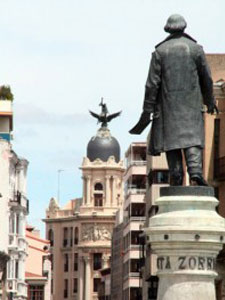
It is also a modern city with pedestrian streets, parks, and spacious shopping centers, and is an ideal place to enjoy cinema, concerts, and exhibitions.
Taking a walk around the Plaza Mayor or visiting the city’s important museums are just some of the many activities Valladolid has to offer.
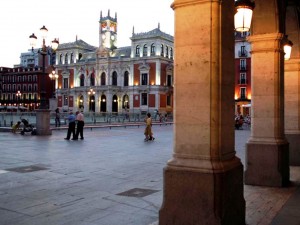
A visit to the National College of San Gregorio Museum is a must. It is one of the most important museums in Spain thanks to the original quality of its collection of sculpture, and the beauty of the 15 th century building in which it is housed. The Patio Herreriano Museum of Contemporary Art houses a major collection of works tracing the development of the main artists and trends since the early 20th century.
Other museums of interest are the Science Museum , devoted to the culture of science and offering visitors the chance to see, contemplate, and interact, the Oriental Museum, housing the largest collection of Chinese, Filipino, and Japanese art in Spain, the Cervantes House Museum, the Columbus House Museum, or the Zorrilla House Museum.
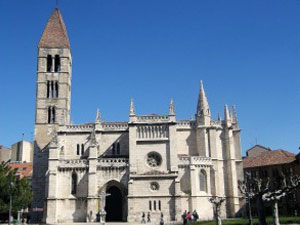
Any cultural trip around the city of Valladolid must include the route of the churches, visiting such churches as Santa María de la Antigua , one of the symbols of the city, San Pablo , founded in the 13th century, San Miguel, and the magnificent church of San Benito . Work on Valladolid Cathedral was begun in the 16th century by the famous renaissance architect Juan de Herrera. The area surrounding the cathedral is full of pleasant street cafés.
The oldest and most emblematic park in the city is the Campo Grande, a large romantic garden area set in the very heart of the city and home to a wide variety of trees and birds, including its famous peacocks.
The night route “ Valladolid Rivers of Light ” covers a number of the city’s areas, and offers an interesting illuminated trip around the city. The lighting from the streets, buildings, and monuments is projected forming a spectacular nightscape.
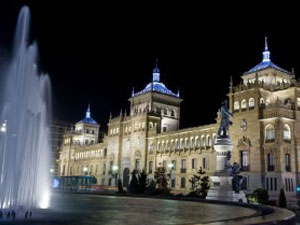
You can also enjoy the rich cuisine in the city’s many restaurants. The main dish in Valladolid is lamb, together with cheeses and the bread!
Another attraction is the tapas . You can get to know the city’s tapas bars through Vallatapas as well as the various tapas areas.
The city is well communicated with the rest of Spain thanks to its extensive coach and train network. The high speed train can get you to Madrid in under an hour.
Valladolid-Villanubla airport also gives you the chance to fly to a number of destinations both in Spain and Europe.
These are just some of the many attractions the city has to offer. To see others, visit the Tourist Information Office where you can discover many more possibilities.
For further information, see:
- Valladolid Culture and Tourism
- Valladolid City Council
Other guides:
- Tourist Guide to Valladolid
- University of Valladolid Cultural Agenda
WATCH A VIDEO ON VALLADOLID
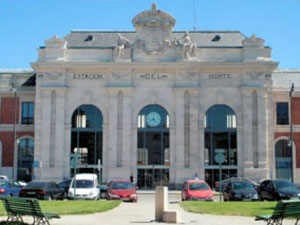
- University flats
- Other options
- Accommodation fees
- Medical insurance
After you have typed in some text, hit ENTER to start searching...
- Search Please fill out this field.
- Manage Your Subscription
- Give a Gift Subscription
- Newsletters
- Sweepstakes
American Retirees Flock to This International Destination — and It's Got Great Health Care, Low Taxes, and High Quality of Life
Hint: it’s in Europe.
:max_bytes(150000):strip_icc():format(webp)/Dobrina-Zhekova-2885480a814f40a2801fda922af4d135.jpeg)
georgeclerk/GETTY IMAGES
Retiring abroad is trending among senior Americans. According to the Social Security Administration, the number of U.S. citizens receiving their benefits abroad has risen from 413,000 to 760,000 in three years , and 38 percent of them relocated to Europe.
But a new report gives more clarity on where Americans can go for the best health care, quality of life, and security. According to Global Citizen Solutions, a visa and relocation consulting company, Spain and Portugal are the most popular retirement destinations among senior U.S. citizens.
Spain scored a perfect 100 out of 100 for quality of life, which was assessed based on factors like health care, climate, and flight accessibility.
"With a public health care system and affordable supplementary private insurance options, Spain prioritizes the well-being of its residents, a key factor that entices retirees to relocate," Laura Madrid, research lead at Global Citizen Solutions, told Travel + Leisure . "Moreover, Spain offers an excellent public transportation network, known for its efficiency and affordability a plus for retirees ditching the daily use of private cars."
Portugal is a very close second with 99.79 points in the overall rankings. The report notes that in recent years, many Americans have settled in both countries for sunny weather and access to affordable health care.
“A lower cost of living is also an important factor in the decision to relocate, with living expenses in Spain and Portugal being considerably lower compared to other European nations and the U.S. Moreover, both nations offer special tax regimes for expatriates during their initial years of residence, making the Iberian Peninsula even more appealing,” the report states.
In the overall ranking, Costa Rica is third, and Uruguay and Mexico are fourth and fifth, respectively.
However, a slightly different picture emerges in the quality of life category, where our southern neighbor takes the silver medal, and Portugal drops one spot to No. 3. The winner in the economics category, which measured factors like cost of living, tax optimization, and rent prices, is Malaysia, which offers foreigners financial incentives like no tax on foreign-sourced income. (Americans living abroad still need to pay taxes in the U.S.)
When it comes to social factors like migrant acceptance and integration, the top retirement destination is New Zealand.
The report also identified the leading factors for retiring abroad. Affordable housing options, quality health care, and tax incentives are the top three motivators for seniors when choosing to retire in a foreign country. An increasing number of adults also opt to spend their golden years outside the borders of our country to acquire a second citizenship “as a strategic insurance plan,” according to the report.
You can see the full report on globalcitizenssolutions.com .
Related Articles

The 10 most scenic rail journeys in Spain
T here are few countries where train travel is as cheap , accessible and downright enjoyable as Spain . Much as the locals love to complain about state-run railway company Renfe, the truth is that the lines and rolling stock in Spain are constantly updated and the network reaches into the most remote corners of the country.
Prices are reasonable too, even for the high-speed AVE trains that connect a handful of the major cities. Government funding is generous; a scheme involving free local trains to get people moving after the pandemic has been extended to ease the cost of living crisis, and there are further subsidies on long-distance trains.
Spain’s trains have always been within most budgets, however, and the country’s extensive rail network makes train travel a relaxed way to experience Spain at a gentle pace. The north-west of the country, Madrid , Barcelona and Andalucia , are all particularly well-served, along with the eastern coast from Murcia right up to Alicante, Valencia and beyond.
Complementing this efficient structure criss-crossing the land is a handful of quirky and heritage side routes, often using trains made up of rolling stock from rail travel’s glory days. Some were constructed for the convenience of royalty and local dignitaries, others to transport produce or coal. Some are unabashedly kitsch, staffed by serving wenches and minstrels in medieval ruffs, but will nevertheless delight children as well as railway buffs.
Local tourist boards have also seized the opportunities of regular train lines to create themed routes showing the best of their regions or to access parts of the landscape that would be impossible to reach by car.
This is all great news for the sustainable traveller, and the journeys below are unforgettable experiences in themselves.
Tren de la Fresa
Start point: Museo del Ferrocarril, Madrid
End point: Aranjuez
Madrid’s first train line was opened originally in 1851 as a way for the Spanish Royal Family to travel between the capital and their spring residence, the elegant Royal Palace in Aranjuez, about 30 miles south of the city. The train once cut through fields of strawberries (fresas – hence the train’s name) and this special service includes a strawberry tasting on the return leg, with servers in period costume. The rolling stock is made up of carriages from different periods, comprising wooden, open-sided passenger coaches and two 1920s dining cars. The train takes around an hour, and leaves from Madrid’s Museo del Ferrocarril at weekends in spring and autumn. It can include walking, tourist train or boat tours of Aranjuez and its spectacular palace and gardens.
How to do it: Stay at the colourful Only You Hotel (doubles from £188 per night; 00 34 9100 52746; onlyyouhotels.com ), close to the railway museum. Plan the perfect trip to Madrid with our guide.
Tren dels Llacs
Start point: Lleida
End point: La Pobla del Segur
The “Lake Train” meanders up into the foothills of the Pyrenees from the quiet city of Lleida, known for its looming cathedral and its annual snail-eating festival. The train is a 1960s diesel locomotive in jaunty green and yellow trim, with a vintage mail carriage and dining car. It runs along the banks of the rivers Segre and Noguera Pallaresa on a single-track railway, passing the four lakes (reservoirs, strictly speaking), to the town of La Pobla del Segur. The journey takes just under two hours and the train runs on Saturdays from April to October.
How to do it: Stay at the stately Parador de Lleida (doubles from £83 per night; 00 34 9730 04866; parador.es ), set in a 17th-century convent, with rooms around the former cloister
Start point: La Tor de Querol
End point: Villefranche de Conflent
The jolly little “yellow train”, also known as the Canary, is a French/Catalan concern, beginning at the station of La Tor de Querol on the border between France and Spain and running up through the eastern Pyrenees through 63km of mountainous landscape and over vertiginous viaducts and a dizzying suspension bridge. It runs between four and nine times a day and is best taken in summer, when you can sit in one of the open-topped carriages. Passengers can embark from any one of its 22 stations, or settle down for the full three-hour route from La Tor de Querol to Villefranche-de-Conflent.
How to do it: Stay in nearby Puigcerdà for a wider range of eating and sleeping options. Try the smart Villa Paulita (doubles from £63 per night; 00 34 9728 84622; villapaulitahotel.com )
Mr Henderson’s Railway
Start point: Algeciras
End point: Ronda
The train that runs from Algeciras to Ronda might not be historically interesting in itself, but the story behind the line is a fascinating one. It took place in the late 19 th century, when bored British officers garrisoned at Gibraltar were frustrated with the difficulties of travelling into Spain and a British financier, Sir Alex Henderson, stepped in. With the help of a British engineer they created a single-track line through difficult terrain and bandit country. Regular Renfe (the state-owned railway) trains still run along here today, through magnificent scenery – described by Michael Portillo as “one of the most picturesque train journeys in Europe”.
How to do it: Stay at one of the luxury hotels specially constructed to house the passengers at the time: the Hotel Reina Cristina (doubles from £50 per night; 00 34 9566 02622; globalesreinacristinahotel.com-hotel.com ) in Algeciras, or the Catalonia Reina Victoria (doubles from £127 per night; 00 34 9528 71240; cataloniahotels.com ) in Ronda
Ferrocarril de Sóller
Start point: Plaça de Espanya, Palma de Mallorca
End point: Sóller
Built in 1912 to transport fruit from Sóller’s citrus groves, this narrow-gauge line now serves to carry daytrippers to and from Palma de Mallorca in a wooden train with mahogany panels and brass fittings. The train runs several times a day and connects with the similarly picture-book tram from the town of Sóller to its port. The hour-long journey takes passengers north out of Palma past olive plantations and oak forests, through tunnels and over viaducts, into the heart of the Serra de Tramuntana.
How to do it: Stay at the Sóller Plaza (doubles from £123 per night; 00 34 8712 01 188; hotelsollerplaza.com ) overlooking the café terraces of the town’s main square. Plan the perfect holiday in Palma de Mallorca with our guide.
Tren de Felipe II
Start point: Príncipe Pío station, Madrid
End point: El Escorial
Named for the fanatically devout Philip II, who built the vast and austere monastery at San Lorenzo de El Escorial, this handsome green 1960s diesel locomotive with yellow art deco “speed whiskers” is one of Spain’s finest, and pulls a series of 1940s carriages patrolled by actors in period dress. It leaves Madrid once a day at weekends, and cuts through the Sierra de Guadarrama to the town of El Escorial (the ticket includes entry to the monastery). The journey time is 50 minutes.
How to do it: Stay at the Exe Victoria Palace (doubles from £65 per night; 00 34 9189 67066; eurostarshotels.co.uk ) in El Escorial. It is set in an 18th-century palace close to the monastery. Plan the perfect trip to Madrid with our guide
The Rack Trains
Start point: Ribes de Freser/Monistrol
End point: Vall de Núria/Montserrat
Catalunya has two rack trains; one at the monastery of Montserrat and the other in the foothills of the Pyrenees at the Vall de Núria. The first was opened in 1892, created to whisk pilgrims from the town of Monistrol up the mountain to the sacred Montserrat monastery, and is still used to this day, though mostly by daytrippers. The train at Núria slices up through glorious scenery from the pretty little town of Ribes de Freser to the mountain resort of Núria, set around an impressive lake. Both run frequently, every day.
How to do it: Stay in Barcelona for Montserrat, taking a train out from Plaça d’Espanya, but in Ribes de Freser try the cosy, family-run Els Caçadors de Ribes (doubles from £64 per night; 00 34 9727 27006; hotelelscacadorsderibes.com-hotel.com ).
Trenes Turísticos de Galicia
Start/end points: Various
14 routes, traversed by small, modern trains, are a stress-free way to see the best of this uniquely verdant corner of Spain. The rides come with guides and are loosely themed around traditional Galician sights: lighthouses, monasteries, gardens, wine and of course the Camino de Santiago pilgrims’ route. There is even a route based around fishing and the lamprey, a gruesome prehistoric-looking creature that resembles an eel and tastes surprisingly good. Tourist train ticket holders are eligible for the Galicia Rail Pass, which allows unlimited further travel through the region for a period of three days.
How to do it: Stay at the Parador Hostal dos Reis Católicos (doubles from £261 per night, including breakfast; 00 34 9815 82200; parador.es ) in Santiago de Compostela.
Tren del Vino
Start point: Chamartín station, Madrid/Segovia
End point: Valladolid
The “Wine Train” is actually a series of trains running between Madrid or Segovia and Valladolid, an undervisited city in the northwestern region of Castilla y León. The trains on this occasion are gleaming and modern, whisking visitors through the different wine provinces entitled to the protected label of ‘ denominación de origen’ : Ribera del Duero, Rueda, Toro and Cigales. The routes run through vineyards and past winemaking bodegas , and the price includes wine tastings, guided tours and lunch. Join departures on the first Saturday of the month from February to November.
How to do it: Stay, if you can, in the fairy-tale town of Segovia, at the atmospheric La Casa Mudéjar (doubles from £84 per night; 00 34 9214 66250; lacasamudejar.com )
Tren de Arganda
Start point: Estación-Museo del Tren de Arganda, Arganda del Rey
End point: Laguna del Campillo
“The Arganda train whistles more than it moves” as the saying goes. Straight from the pages of a children’s book, these two century-old steam locomotives pull vintage passenger carriages along a four-kilometre track from Arganda del Rey to the Laguna del Campillo, a short train ride south of Madrid, crossing the wrought-iron bridge that was at the centre of the infamous Battle of Jarama during the Spanish Civil War. The train runs four times a day, on the first Saturday of the month and every Sunday in spring and autumn.
How to do it: Stay in Madrid at the NH Madrid Atocha (doubles from £85 per night; 00 34 9153 99400; nh-hotels.com )
Need to know
Spain’s extremes of temperature mean that some of these services, particularly those with open-topped carriages, do not always run at the height of summer or in the depths of winter, but otherwise do not require too much forward-planning.
The Spanish train system
Renfe is the national train operator, with a network of long-distance, regional and local commuter trains (known as Cercanías) covering every region of the country. Trains are comfortable and generally punctual, with WiFi and sockets on most longer routes. For medium and long-distance trains it’s wise to book in advance, online or at a station. Cercanías rarely cost more than a few euros, but you can also buy 10-journey tickets, which reduce the price further.
Those planning an extended stay in Spain might investigate the Renfe Spain Pass. Available to non-residents, it is valid for four, six, eight or 10 medium or long-distance journeys and lasts for a period of a month. See renfe.com .
This article was first published in July 2022, and has been revised and updated.
Play The Telegraph’s brilliant range of Puzzles - and feel brighter every day. Train your brain and boost your mood with PlusWord, the Mini Crossword, the fearsome Killer Sudoku and even the classic Cryptic Crossword.

Avios
Hello
Avios balance:
Choose from your different Plans
Register with Iberia Plus and start enjoying all the advantages.
Points
Hello On Business Customer

Level:
Points:
- Card management
- Invoice management
- Book flights with On Business Points
Iberia Plus access
Start session to see the exclusive promotions and use your Avios.
Country selection
Access special offers and content for your country
- Cheap flights
- South America
- Valladolid - Bogota
Cheap flights from Valladolid to Bogota
Recent searches
FLIGHT+HOTEL
Valladolid airport
Place: Villanubla (Valladolid) View map
Website: https://www.aena.es/es/valladolid.html
How to get to the airport: As well as access by road, via the N-601 and A-60, the airport has a taxi rank and a bus service that leaves from outside the terminal and connects the airport with the centre of Valladolid and the cities of León and Madrid.
Terminals: it has a terminal
Valladolid Campo Grande train station
Place: Valladolid View map
Website: https://www.adif.es/w/valladolid-campo-grande
How to get to the airport: There is an Alsa bus service that connects the station with the airport.
Valladolid Central Bus
Website: https://www.centralbus.net/
How to get to the airport: There is a Linecar bus service that connects Valladolid Central Station with the airport.
Bogota airport
El dorado international.
Place: Fontibón-Engativá View map
How to get to the city: The airport can be accessed via the urban bus services.
Terminals: Terminals 1 and 2.
FAQs about our cheap Valladolid-Bogota flights
How to get the cheapest valladolid-bogota flight.
You can save on your Valladolid-Bogota plane ticket and get the cheapest flight if you avoid peak season, book in advance and are flexible about dates and times for both your outbound and return flight.
What days of the week are cheapest to fly to Valladolid-Bogota?
To find out which day is the cheapest to fly, just start a search in our cheap flight finder . Tell us where you are flying from, where you want to go and what dates you're thinking of. We'll show you the cheapest flights not only for the date you searched but on surrounding days as well , for both the outbound and return flight, so you can find the best deal. And be sure to look carefully at the different flight options we offer every day: certain times may save you even more on the price of your ticket.
When are the best flight deals to Valladolid-Bogota?
You can get the cheapest flights by travelling outside peak season . Although it depends on the destination, in general Christmas, Easter and school holidays are peak season. Besides, if you're thinking about a weekend getaway, the earlier you book your flight, the better the price.
What day of the week is best for getting a cheap plane ticket to Valladolid-Bogota?
You can find cheap flights any day of the week. The key to finding the best deals is to book early and be flexible. Usually, the earlier you book your plane tickets, the cheaper they will be. Besides, if you have some wiggle room as regards dates and times of flights, you'll be able to choose the cheapest price.
How far in advance should I book a flight to Valladolid-Bogota to get the best deal?
The earlier you book your flights, the better the prices. Prices depend on the remaining seats on the flight and whether the cheapest fares (Economy) are still available or are selling out. So booking in advance is essential to get cheap flights .
Which fare guarantees me the best deal for my flight to Valladolid-Bogota?
Iberia offers different fares to guarantee the best deal for your travel needs. The Basic fare guarantees you the cheapest flight.
Check the documents you need for your Valladolid-Bogota flight

General documents
When you finish buying your plane ticke t, remember to check the travel documents you will need. You can check here whether you need a visa, passport, insurance or any other document, depending on the origin and destination of your flight.

Any questions? Check our FAQs on travel documents : we'll explain the documents you need to fly with Iberia as well as specific immigration and customs requirements.
Useful information if you're flying to Bogota

Hola Bogota!
Take advantage of our flight deals to Bogotá to discover a city that has preserved its colonial legacy and proudly shows off its rich indigenous heritage while looking to the future with innovative cultural projects. Take a walk through the historic centre and gaze at the city's oldest cathedral in the magnificent Plaza de Bolívar , or visit one of the great natural attractions, like the Sanctuary of Monserrate perched on the hill of the same name.
Don't miss the traditional neighbourhood of La Candelaria , where the city was founded in 1538: it is home to charming cobbled streets and brightly coloured little houses. Enjoy a wide range of museums, theatres and libraries, with special mention going to the Gold Museum of the Bank of the Republic home to the largest collection of pre-Columbian art, and the Botero Museum , which plays host to one of the most important collections of international art in Latin America. Find your cheap flights to Bogotá now and discover one of the world's most popular tourist destinations.
Average prices in Bogota
Restaurants
Sport and Leisure
The weather in Bogota
Events in our cheap flight destinations to bogota.

Image of mariakray under Shutterstock
25 Jul 2024 - 04 Aug 2024
BLUE MAN GROUP
Teatro Colsubsidio Roberto Arias Pérez

18 Jul 2024 - 20 Jul 2024
DRUNK COMEDY SEASON 2
TEATRO JUAN PABLO GONZÁLEZ POMBO

13 Jul 2024
Huey Dunbar, Victor Manuelle, Jerry Rivera, La India, Rey Ruiz, Roberto Blades, Conjunto Clasico, Los Adolescentes, Charlie Cardona, Willy Garcia, javier Vasquez, and Luis Figueroa
Estadio Nemesio Camacho

Image of MatthieuCattin under Shutterstock
30 Jun 2024
BOGOTÁ PRIDE FEST 2024
Park Simon Bolivar, Bogota
Complete your flight according to your needs
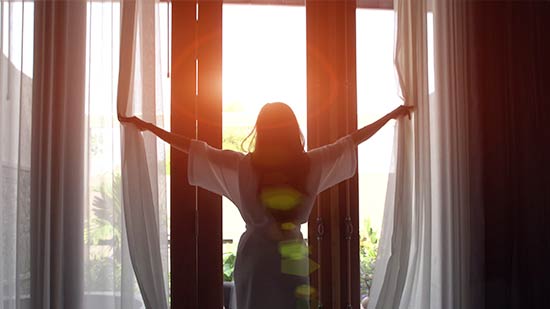
Accommodations
Booking.com connects travellers with accommodation in more than 158,000 destinations worldwide. With more than 28 million establishments, from luxury hotels to apartments, the accommodation of your dreams is just a click away. Iberia and Booking.com let you experience the world.
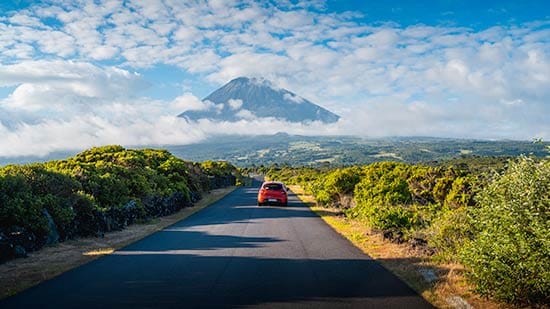
AVIS , present in almost 200 countries worldwide, offers the widest range of hire cars. Besides, as a member of Iberia Plus you unlock exclusive advantages: special rates to get the best deal, free additional driver and with each car hire Avios that you can swap for flights and leisure experiences.
- Live on Sky
- Get Sky Sports
- Sky Mobile Apps
- Kick It Out
- Black Lives Matter
- British South Asians in Football
Albania vs Spain LIVE! Latest score, match updates and commentary for Euro 2024 Group B fixture
- Transfer Centre! Palhinha, Zirkzee, Coman latest
- England to play Netherlands or Group E team in last 16
- Papers: Chelsea, Man Utd, Spurs, West Ham battle it out for David
- Neville: Changes made 'basic' England better | Mainoo certain to start last-16 tie
- England player ratings: Foden improved, midfield doubts linger
- 'It creates an unusual environment' - Southgate responds to England boos
- Joshua expected to fight Dubois for world title as Usyk vacates belt
- Rate the players as England stutter against Slovenia
- Could rain ruin England’s T20 World Cup final hopes?
- Euro 2024 live group tables and updated last-16 state of play
- Latest News
Sorry, this blog is currently unavailable. Please try again later.

Stream the Spanish GP, the T20 World Cup and more

- Upgrade Now

IMAGES
VIDEO
COMMENTS
Europe. Valladolid is a lively provincial Spanish city and a convenient gateway to northern Spain. An attractive place with a very Spanish character, the city's appeal is in its sprinkling of striking monuments, the fine Plaza Mayor and some excellent museums. By night, Valladolid comes alive as its large student population overflows from the ...
Another event that marks the life of Valladolid and arouses the fervour of its inhabitants is Easter Week. Declared a Festivity of International Tourist Interest its processions offer a genuine display of religious artworks passing before your eyes. Valladolid began to gain importance in the 11th century when Count Ansúrez became the governor of the town in the name of Alfonso VI.
4. Santa María la Antigua Church. Source: flickr. Santa María la Antigua Church. The solemn romanesque bell tower of this 12th-century church is one of Valladolid's most famous images, and is best admired from a bench on Portugalete Square.
Valladolid, Spain is an impressive and monumental city. This is one of the most beautiful and impressive buildings in... See way to experience (1) 7. Universidad de Valladolid (UVA) ... Hotels Valladolid Bed and Breakfast Valladolid Vacation Rentals Flights to Valladolid Valladolid Restaurants Things to Do in Valladolid Valladolid Travel Forum ...
50,760. Valladolid, Spain. A stepping stone into northern Spain, Valladolid blends medieval architecture with universities, modern museums, and vibrant nightlife. The city boasts a strong cultural identy on par with the country's larger metropolises, while outlying vineyards retain a touch of rural tradition. Read more.
Valladolid has been home to many Spanish notables, once vied with Madrid as capital of Spain and has seen some of Spain's greatest art and architecture. It's Plaza Mayor is superb. It is a large square surrounded by arcaded buildings and was the first plaza of its kind to be built in Spain. It is now replicated throughout Spain and South ...
Valladolid is in the centre of Spain's central plateau and hydrographically is in the Duero Basin. The average elevation 698 m. Its coordinates are 41° 38'N 4° 43' W. Valladolid's climate is continental, dry, and characterised by high temperatures in summer and cold in winter.
50,760. Explore Valladolid. A stepping stone into northern Spain, Valladolid blends medieval architecture with universities, modern museums, and vibrant nightlife. The city boasts a strong cultural identy on par with the country's larger metropolises, while outlying vineyards retain a touch of rural tradition. Read more.
Day 2: Exploring Valladolid's Wine Country. Morning. Take a day trip to the Ribera del Duero wine region, located just outside of Valladolid. Visit one of the many wineries in the area, such as Bodegas Protos or Bodegas Arzuaga Navarro, for a wine tasting and vineyard tour. Afternoon. Continue your wine tour with a visit to another winery, such ...
Valladolid, Spain Travelling to Valladolid flight free from the UK. If you want to visit Valladolid from the UK without flying, you have two options. The first is to take the Eurostar from London, and from there, the train to Hendaye, followed by another train from San Sebastian. Alternatively, you can take a two-bus connection from London via ...
One of Spain's most famous authors, Miguel de Cervantes lived at this 16th century house in Valladolid between 1604 and 1606, during the time when his most famous book Don Quijote de La Mancha was being published. Cervantes' library and all his rooms have been preserved to look just the way they did when the author lived there.
Medina del Campo: Just 60km south of Valladolid is the town of Medina del Campo. Much bigger than Urueña (reaching 20,000 inhabitants), this town stands at 720 metres above sea level and has a long history. The most iconic site here is the 15th-century Castillo de la Mota, one of the most beautiful castles in Spain.
Valladolid is the administrative capital of Castilla y León, and a city known by its class, sophistication and architectural diversity. Less than two hours by car from Madrid, it is located in the western part of Spain and right in the heart of the Autonomous Region of Castilla y León, surrounded by the provinces of León, Zamora, Salamanca, Ávila, Segovia, Soria, Burgos and Palencia.
Castilla y León and La Rioja Travel Guide. Outside the city, there are easy side-trips to the handsome small towns of Tordesillas and Medina del Campo, both now on the quiet and sleepy side but, like Valladolid, also boasting significant histories. Travel ideas for Spain, created by local experts. 9 days / from2445 USD.
Valladolid - Spain. An hour from Madrid, this elegant Spanish city offers glorious art, sprawling parks and historic architecture, plus hearty dishes and great local wines. ... Discover Valladolid is the official tourist board and provides essential travel tips, plus a wealth of accommodation, restaurant, and event information.
On the topic of photo-worthy plazas, Plaza Mayor is certainly a must-visit during your trip to Valladolid.It is the oldest Plaza Mayor in Spain and it has played witness to centuries of fun and adventure in Valladolid.Admire the imposing Renaissance and Baroque architecture that surrounds this 13th-century square and soak up the vibrant atmosphere in this central meeting point.
Best Things to Do in Valladolid, Spain. Valladolid, Spain, offers a range of attractions and activities for visitors to enjoy. Some of the best things to do in Valladolid include exploring the historic Plaza Mayor, admiring the stunning architecture of the Valladolid Cathedral, visiting the National Sculpture Museum to view its impressive collection, strolling along the scenic Campo Grande ...
Valladolid. One of the loveliest church facades in Valladolid, with unusual, 16th-century octagonal columns. Discover the best attractions in Valladolid including Casa-Museo de Colón, Museo Nacional de Escultura, and Plaza de San Pablo.
Valladolid is the capital of the province of the same name, and is part of the region of Castile-Leon in Spain . Valladolid is a reasonably large industrial city to the northwest of Madrid. It is one of the major regional centers in Castile-Leon. The city has an older core with some interesting buildings.
Valladolid, Spain Travel Guide. Things to Do; Best Hotels; Things to See; Best Nightlife; Planning a Trip; Book Hotels. Things to Do in Valladolid, Spain 201km (125 miles) NW of Madrid, 134km (83 miles) SE of León.
In this video I travel to Valladolid in northern Spain to check out the city from a quality-of-life point of view and see if people here speak one the purest...
A visit to the National College of San Gregorio Museum is a must.It is one of the most important museums in Spain thanks to the original quality of its collection of sculpture, and the beauty of the 15 th century building in which it is housed. The Patio Herreriano Museum of Contemporary Art houses a major collection of works tracing the development of the main artists and trends since the ...
11/27/22 02:45 PM. 6729 posts. Unlike many cities in Spain, Valladolid has no must see sights. In that area, however, are a number of towns worth visiting and if you enjoy castles you would be in heaven because there are a number of nice ones nearby. Zamora, León and Burgos are all fairly close, as is Tordesillas.
According to Global Citizen Solutions, a visa and relocation consulting company, Spain and Portugal are the most popular retirement destinations among senior U.S. citizens.
End point: Valladolid The "Wine Train" is actually a series of trains running between Madrid or Segovia and Valladolid, an undervisited city in the northwestern region of Castilla y León.
How to get to the airport: As well as access by road, via the N-601 and A-60, the airport has a taxi rank and a bus service that leaves from outside the terminal and connects the airport with the centre of Valladolid and the cities of León and Madrid.
Trending. Gallagher the only change for England vs Slovenia LIVE! Transfer Centre LIVE! Palhinha, Zirkzee, Coman latest; Rate the players from Austria's win over the Netherlands LIVE!